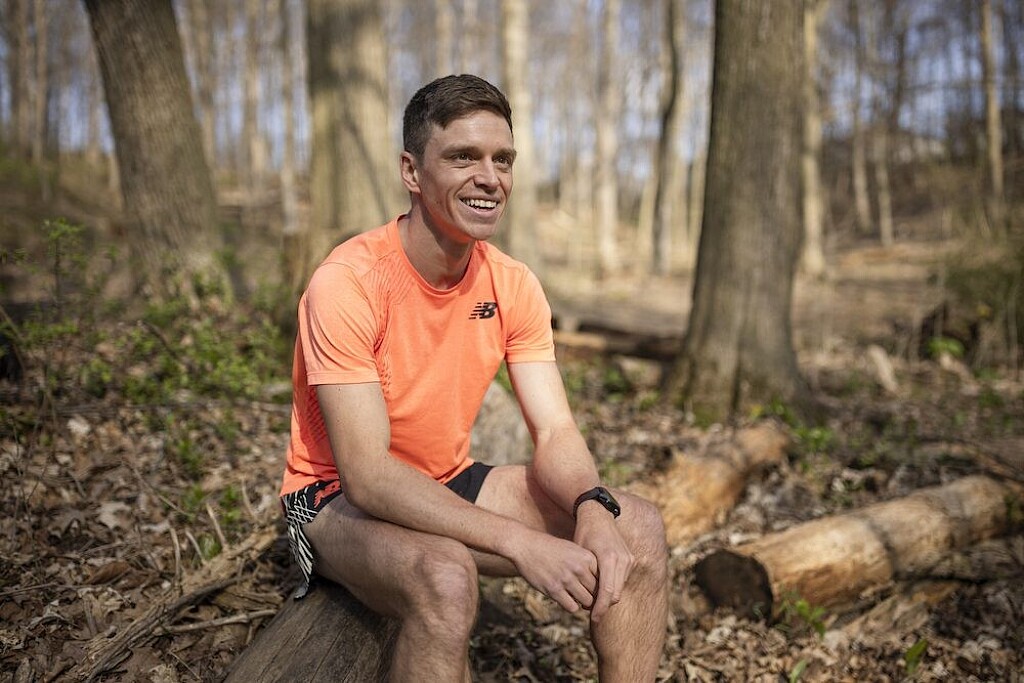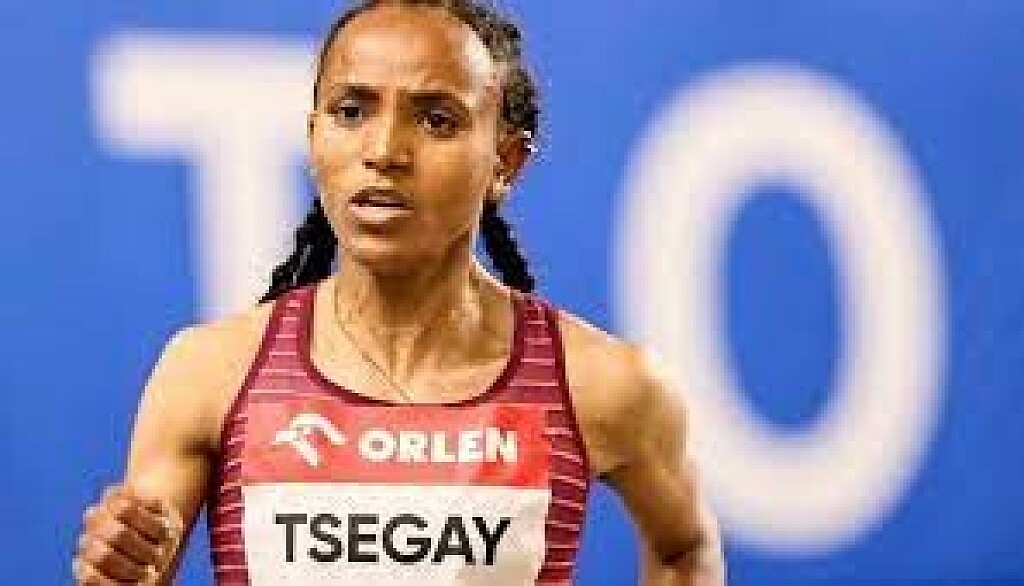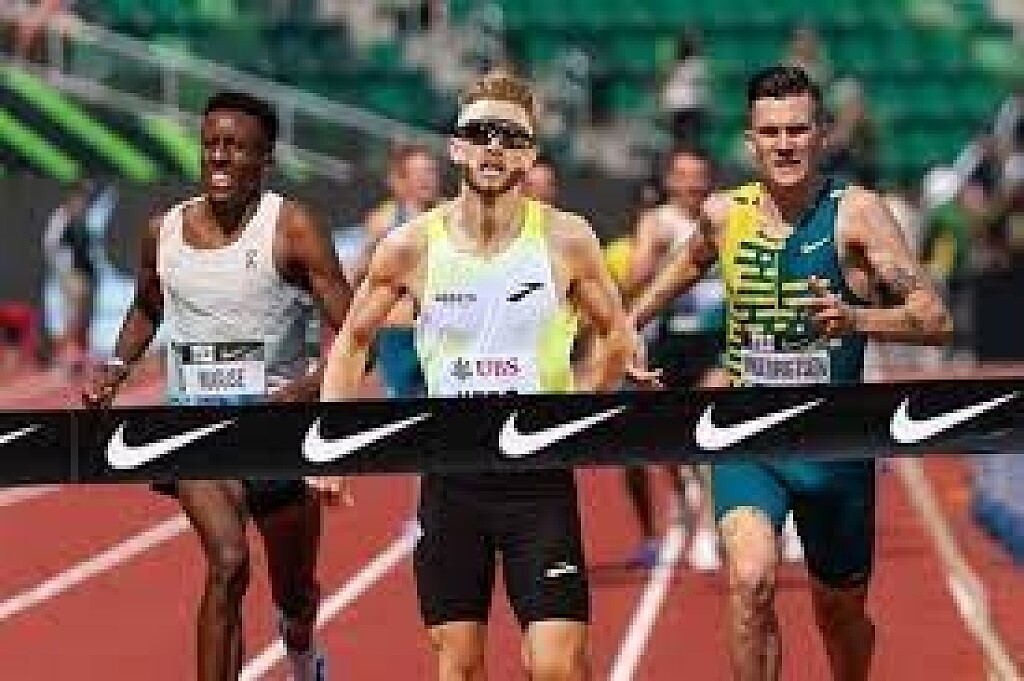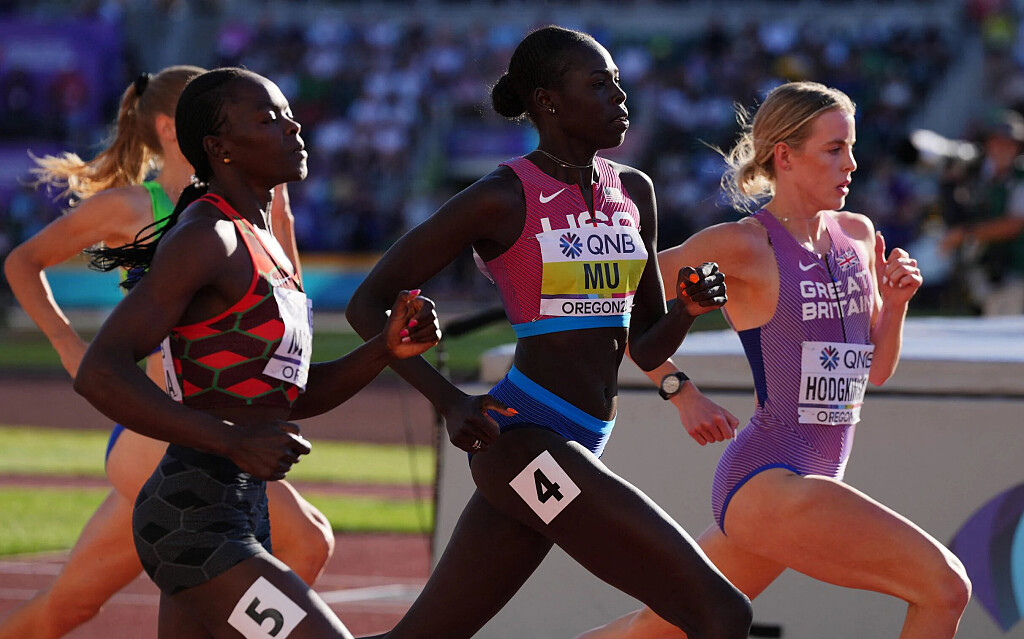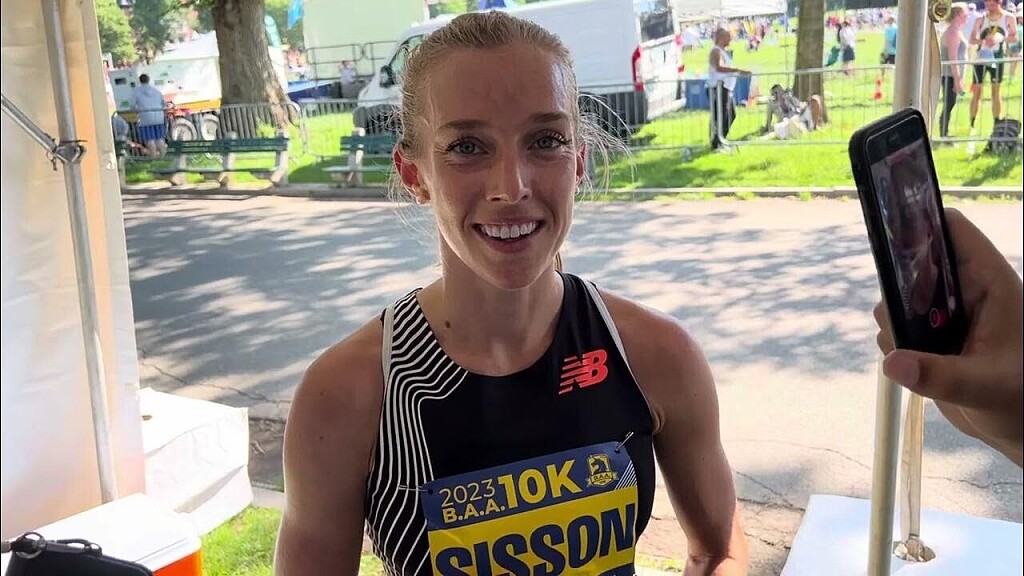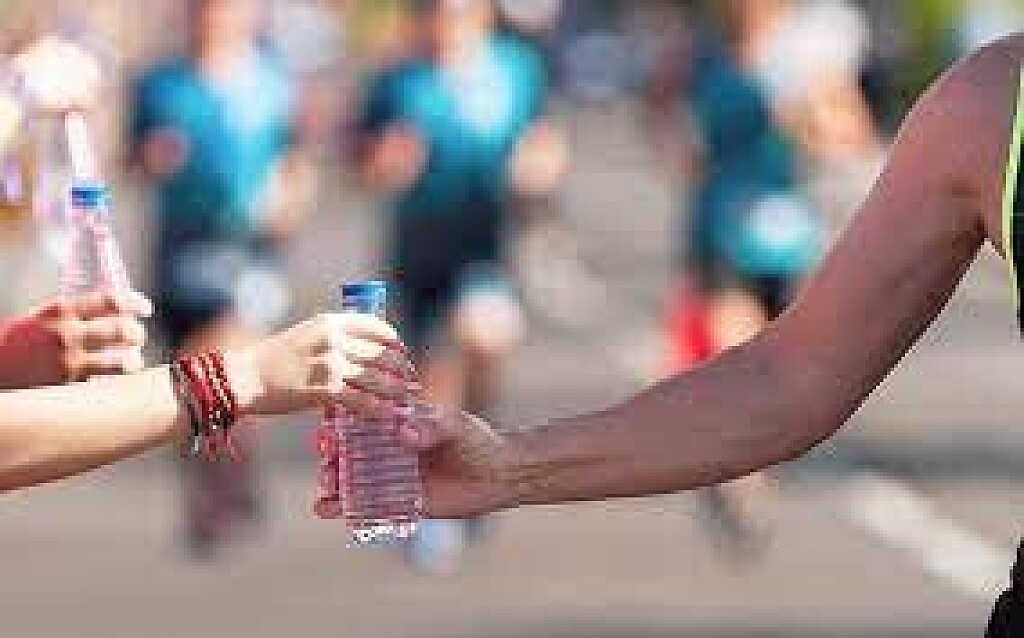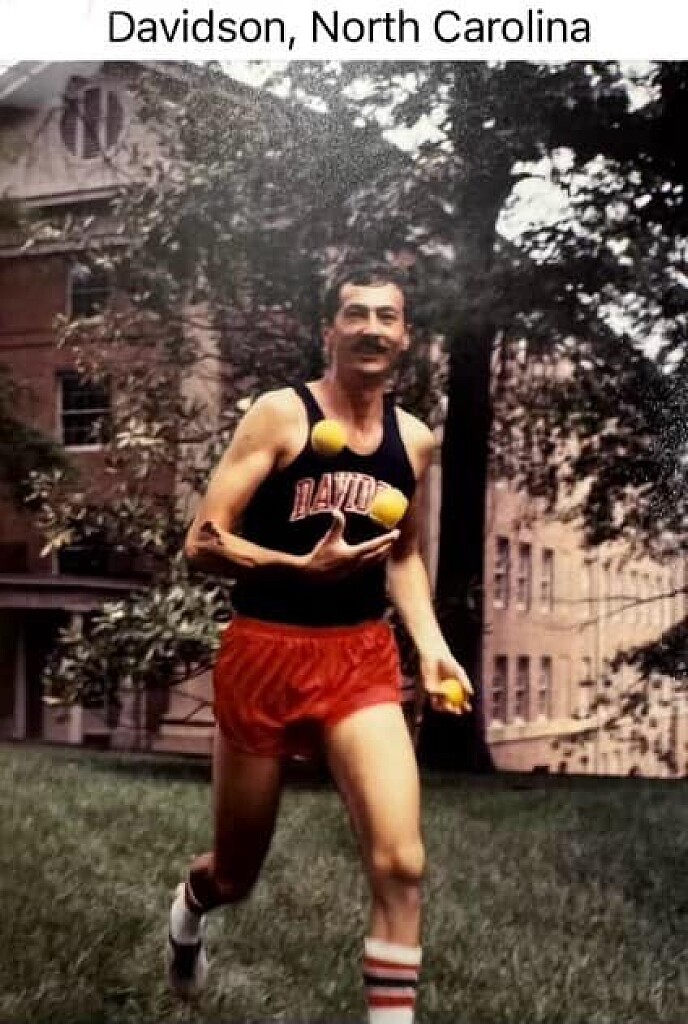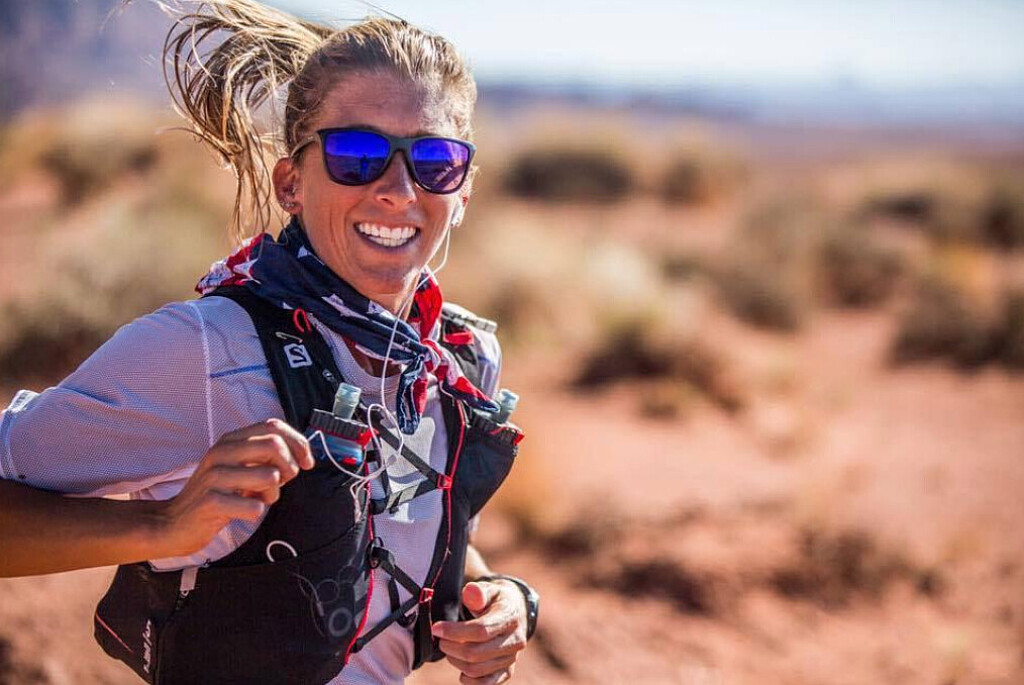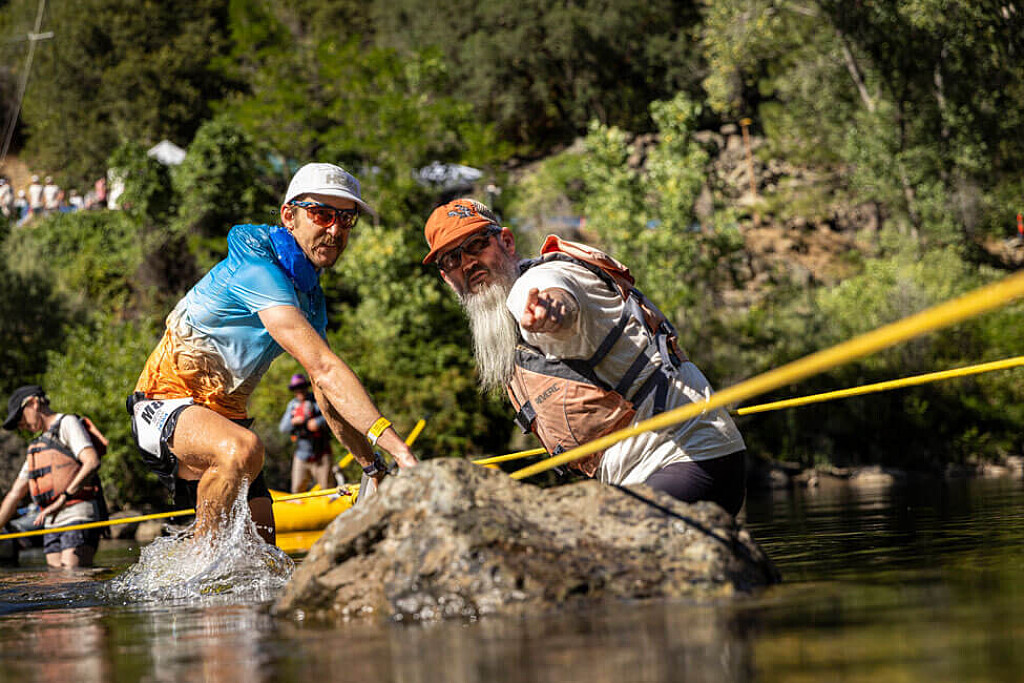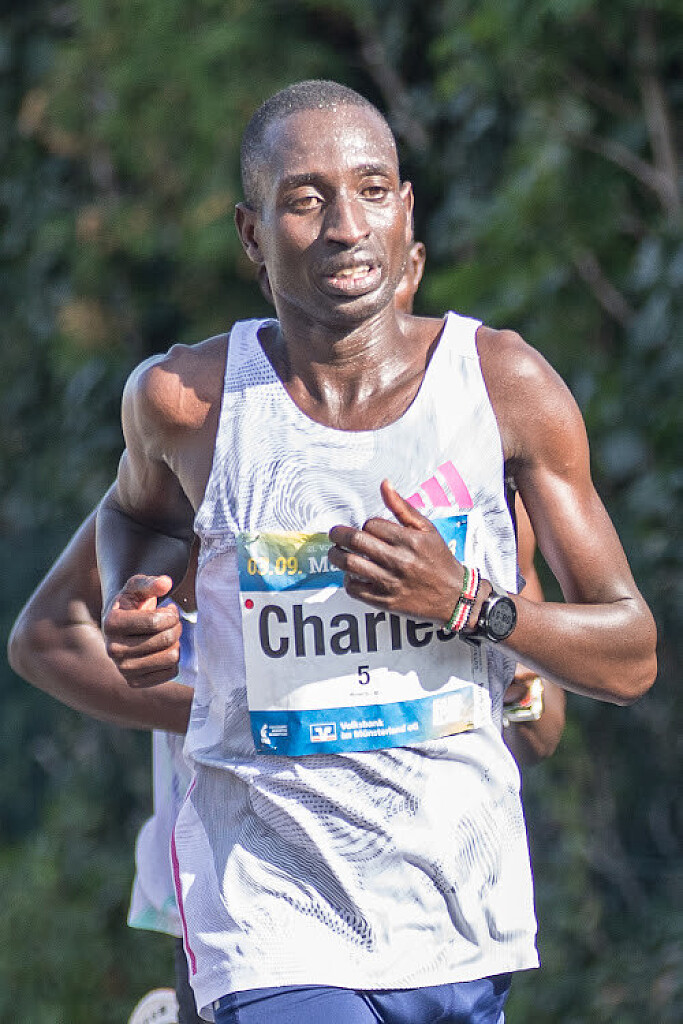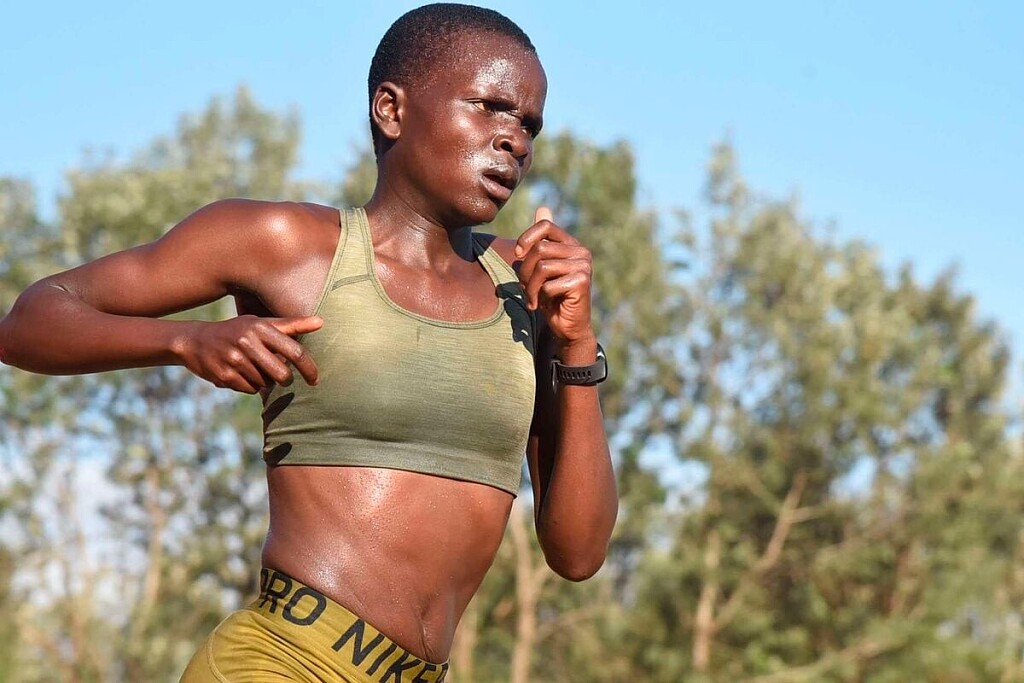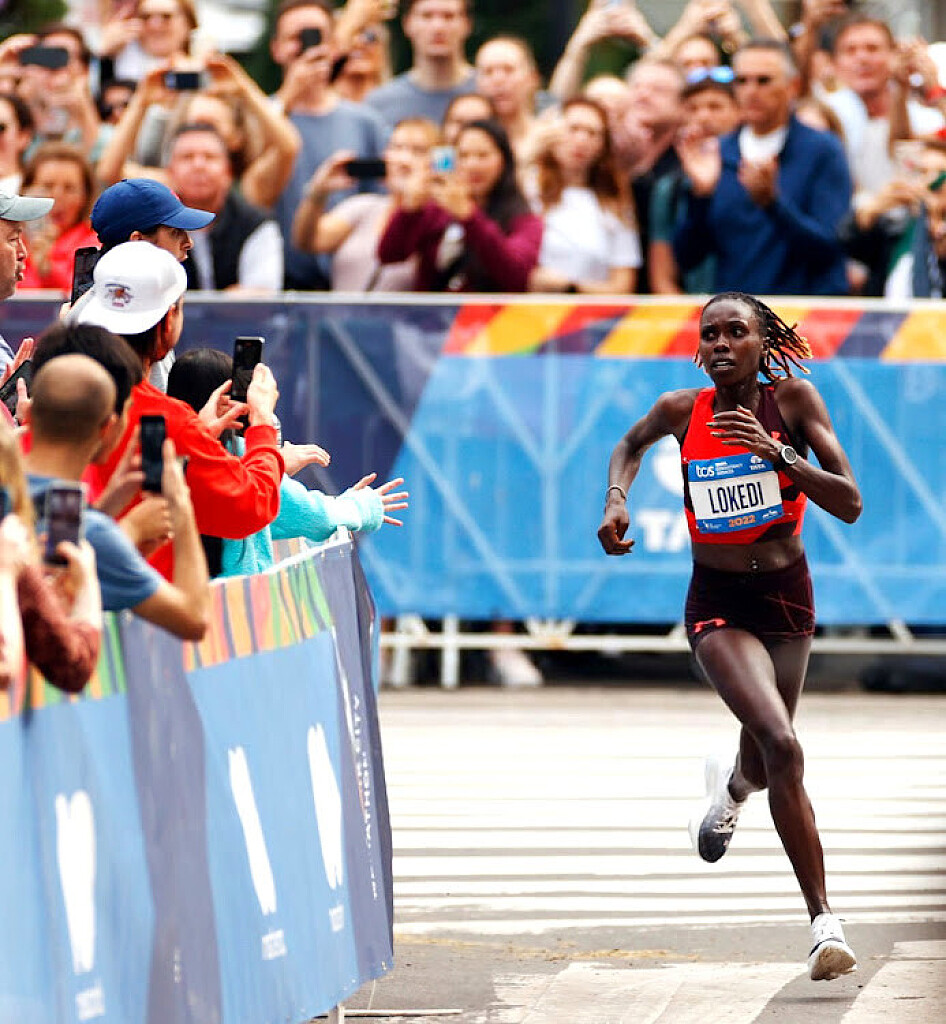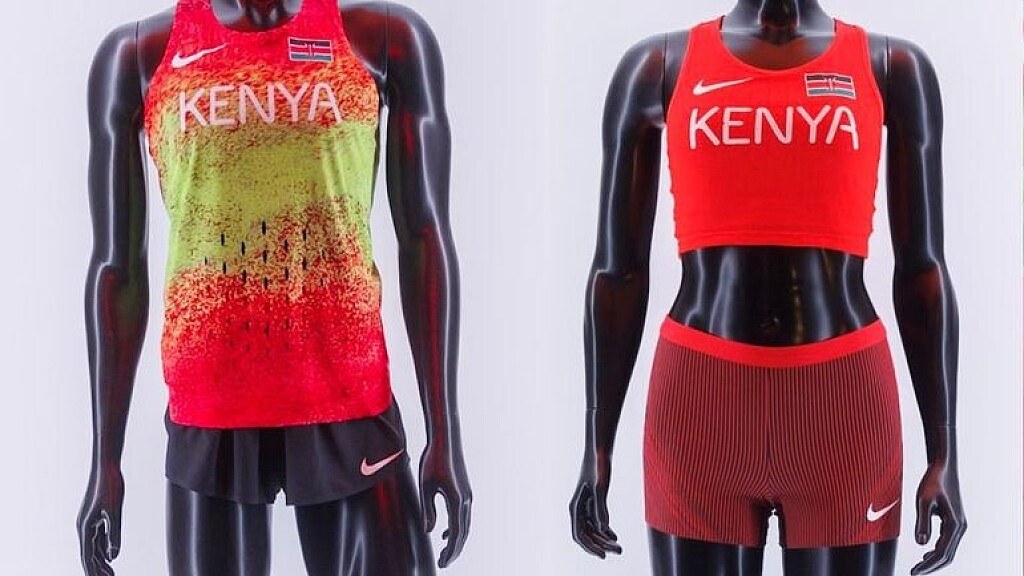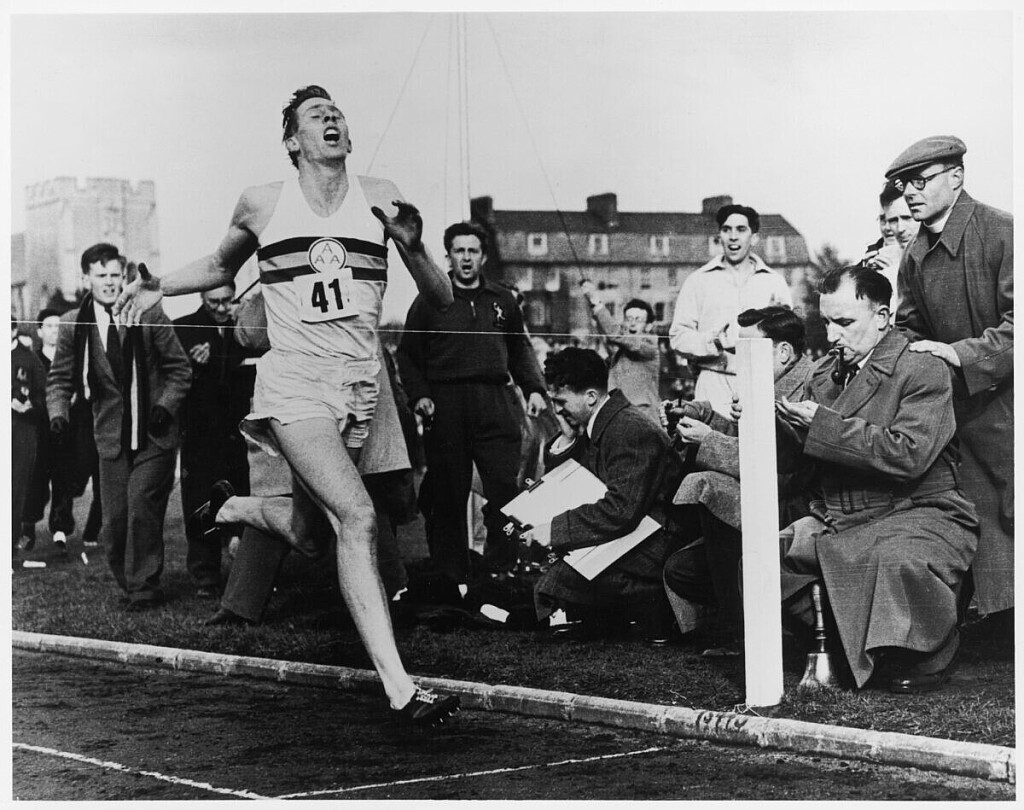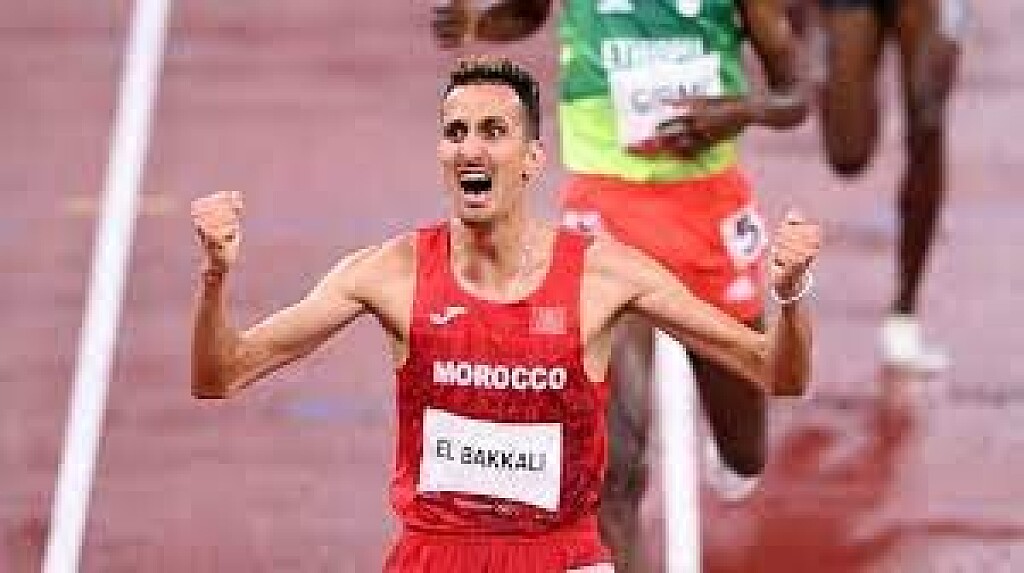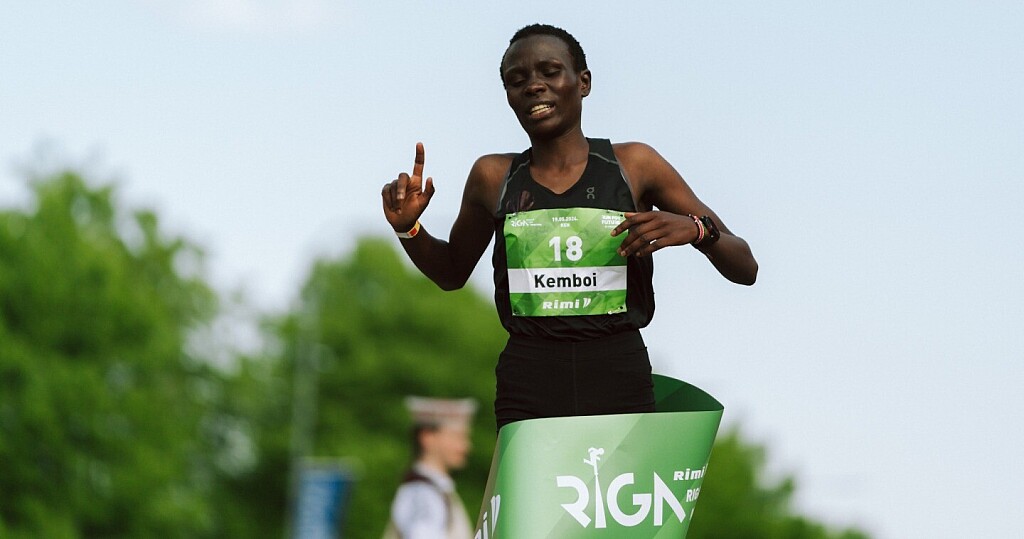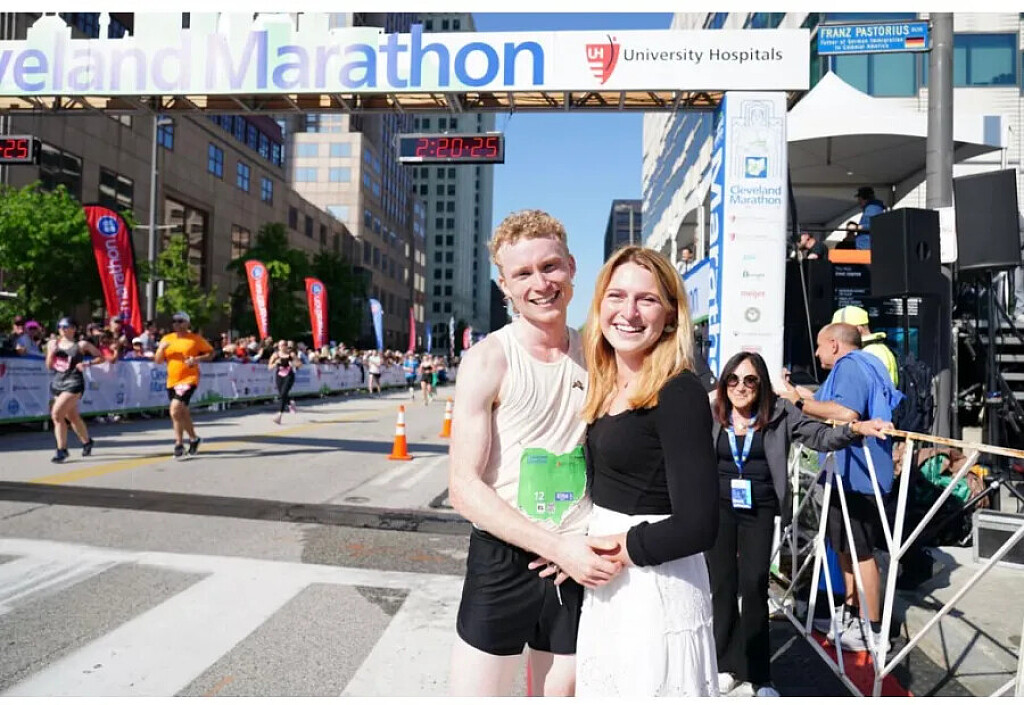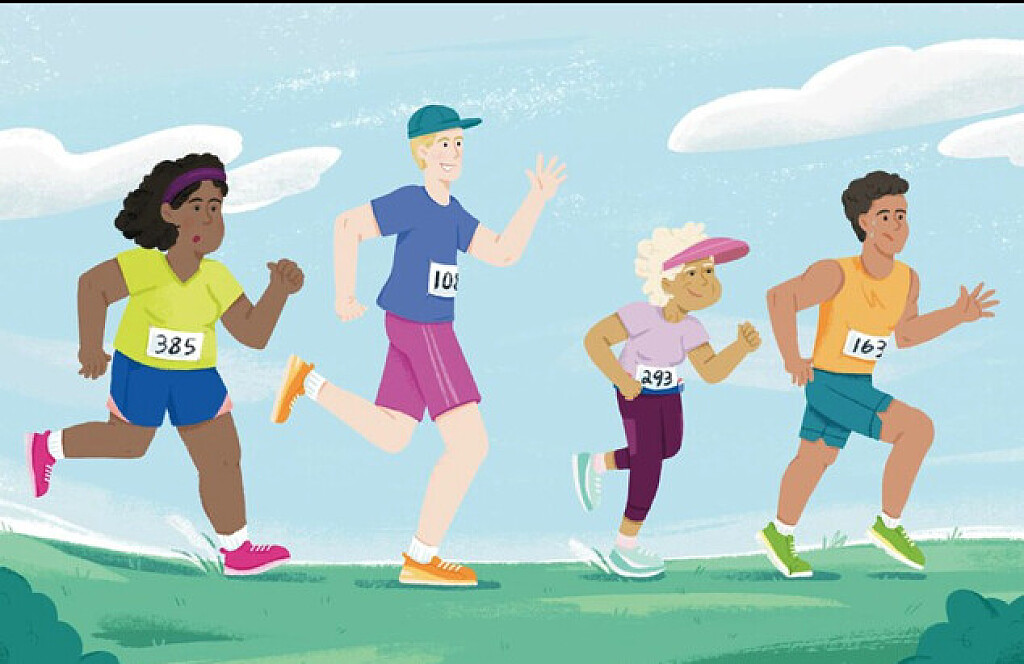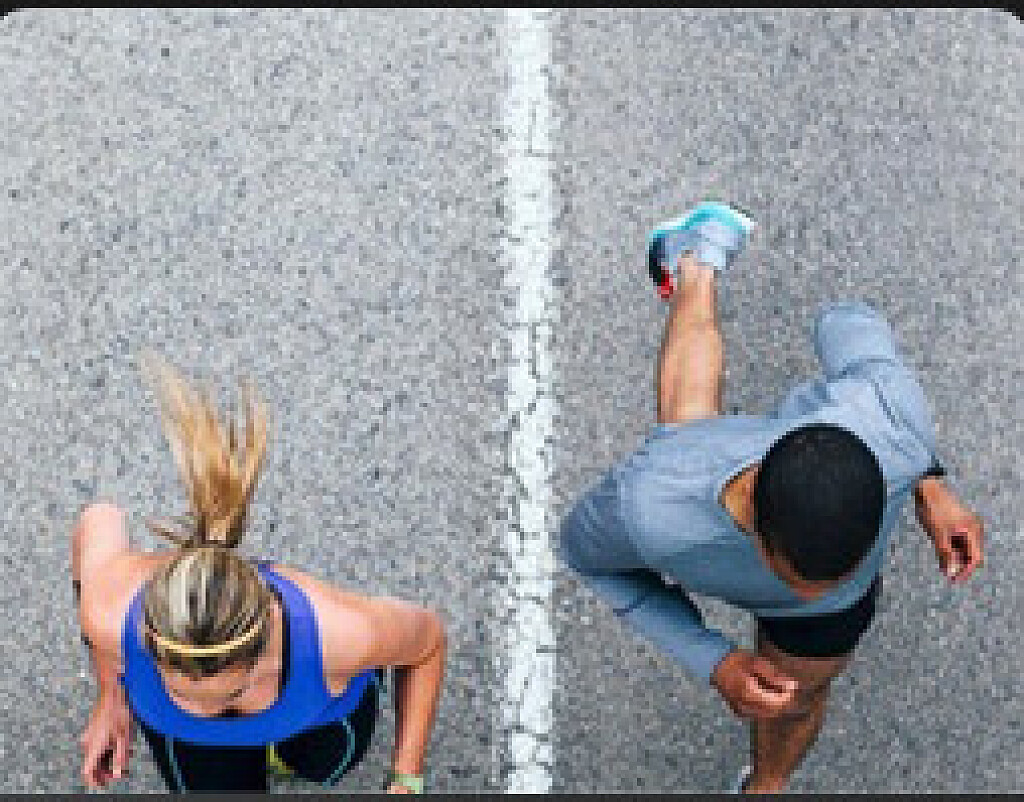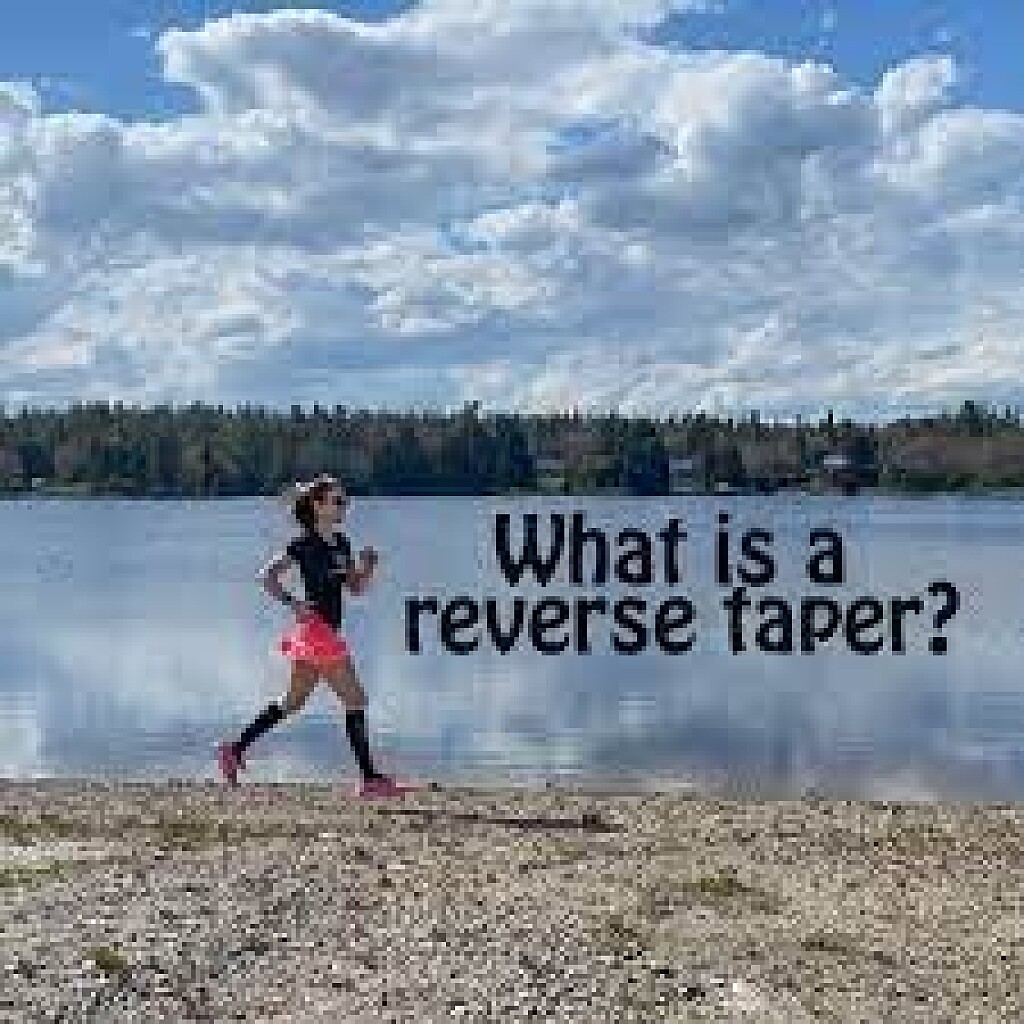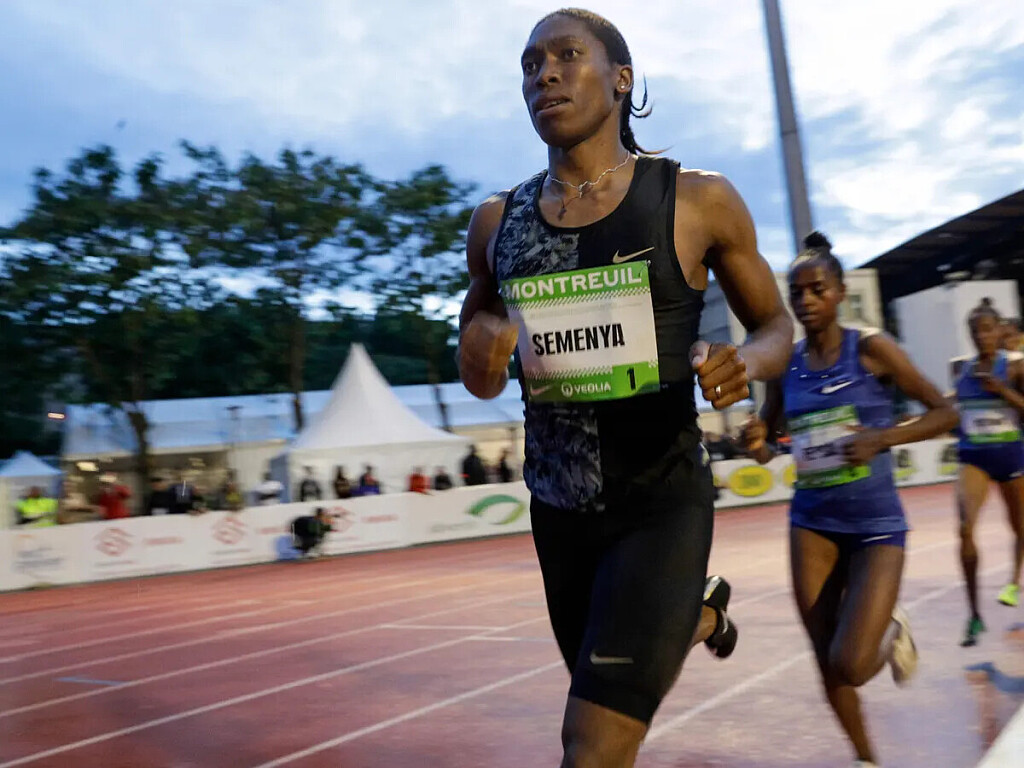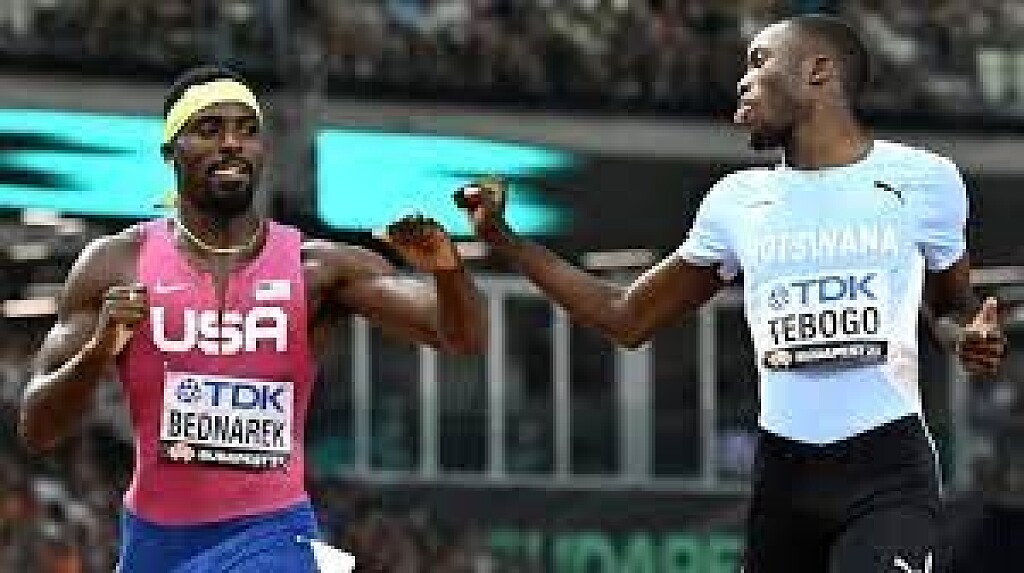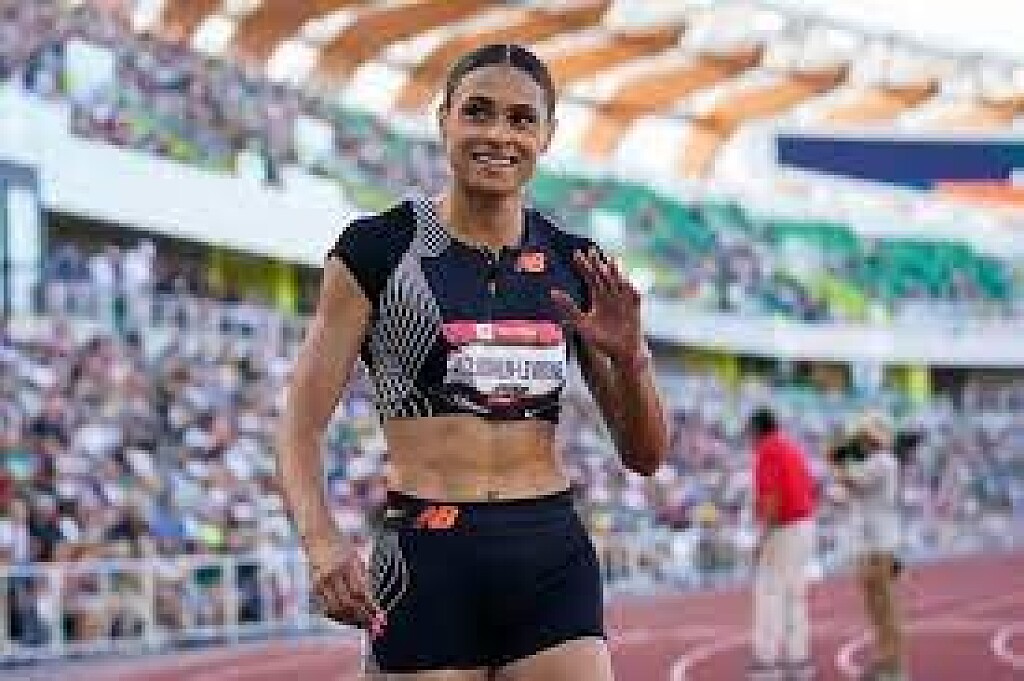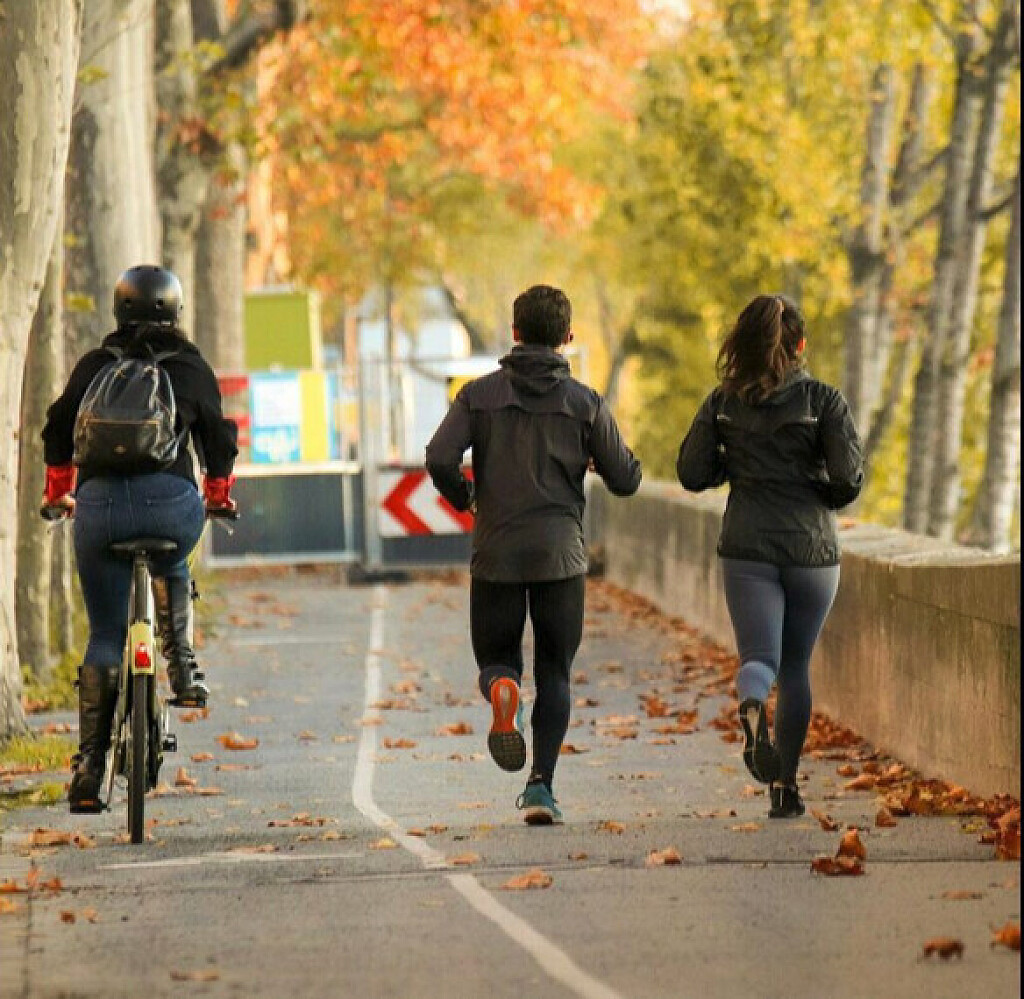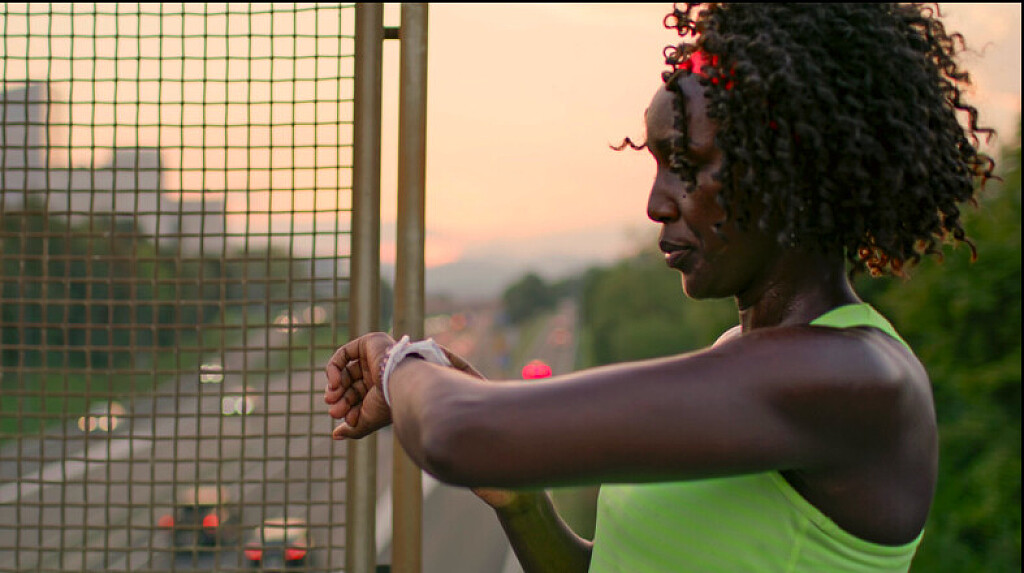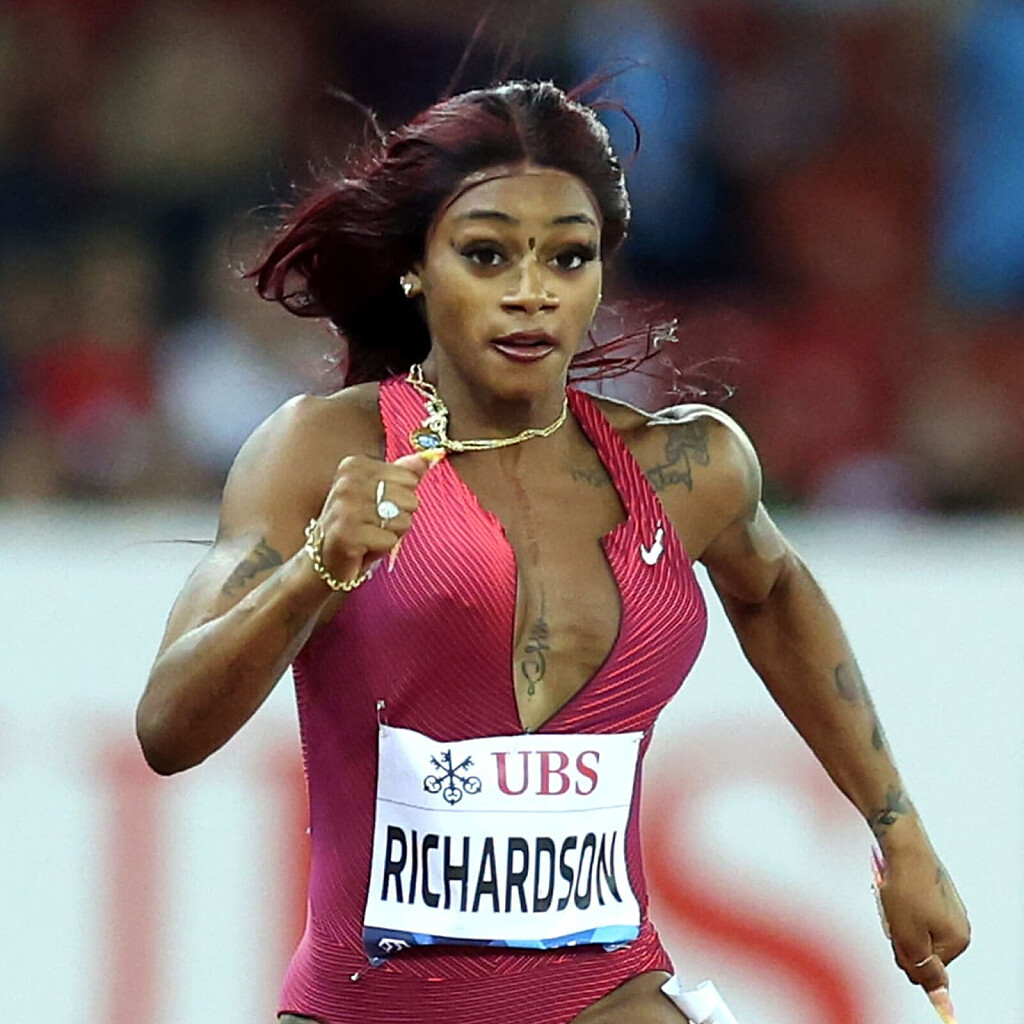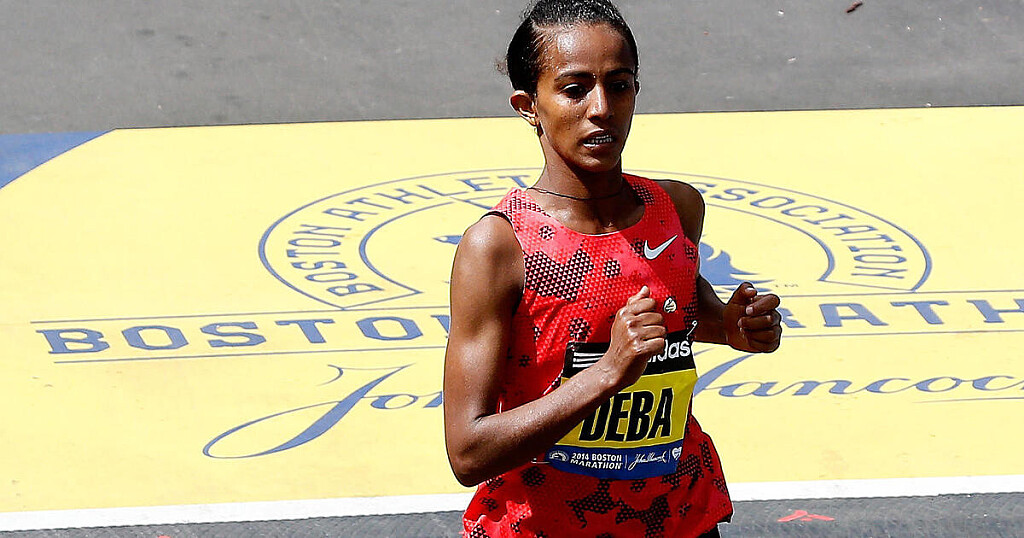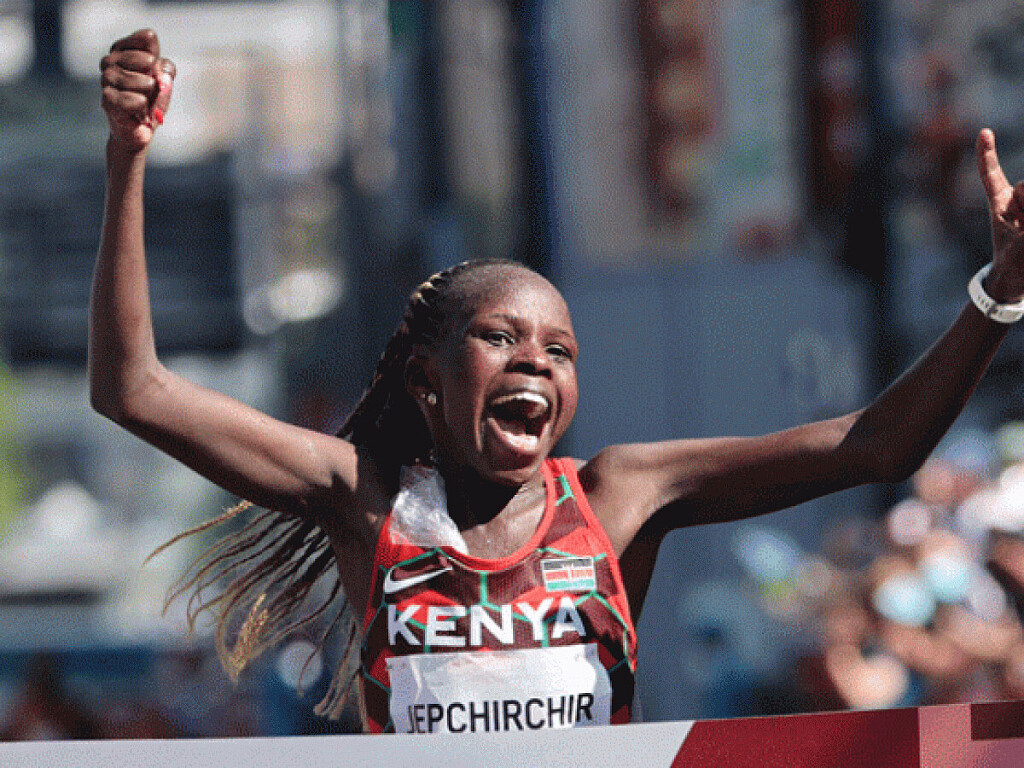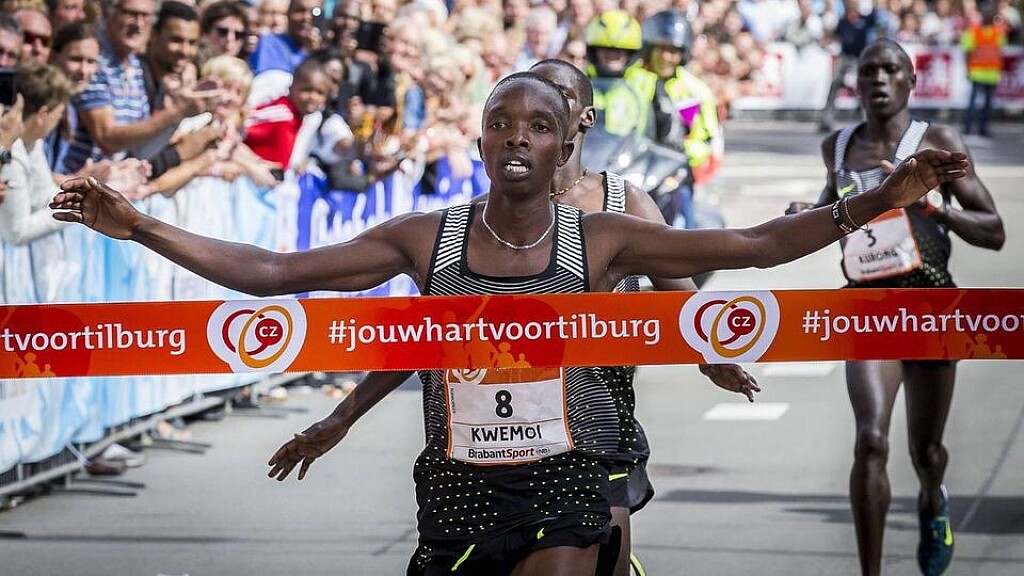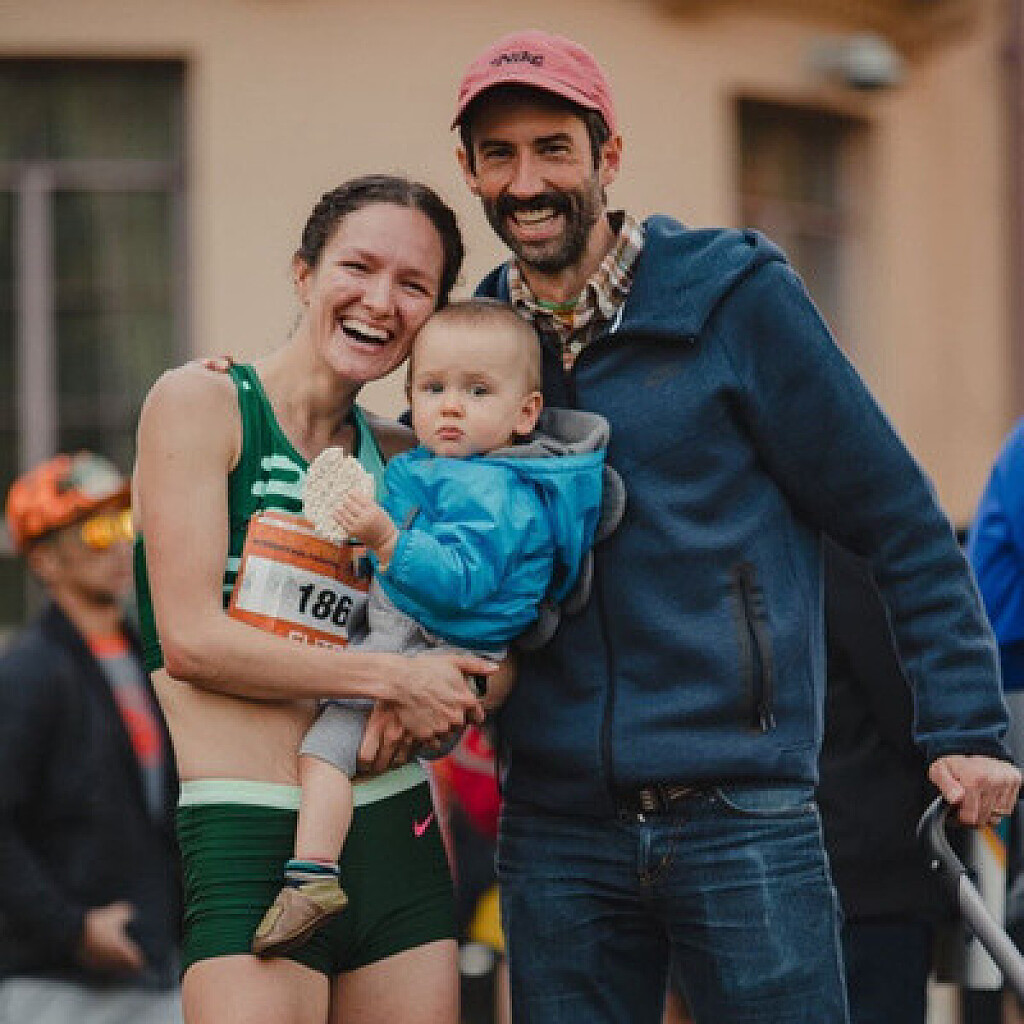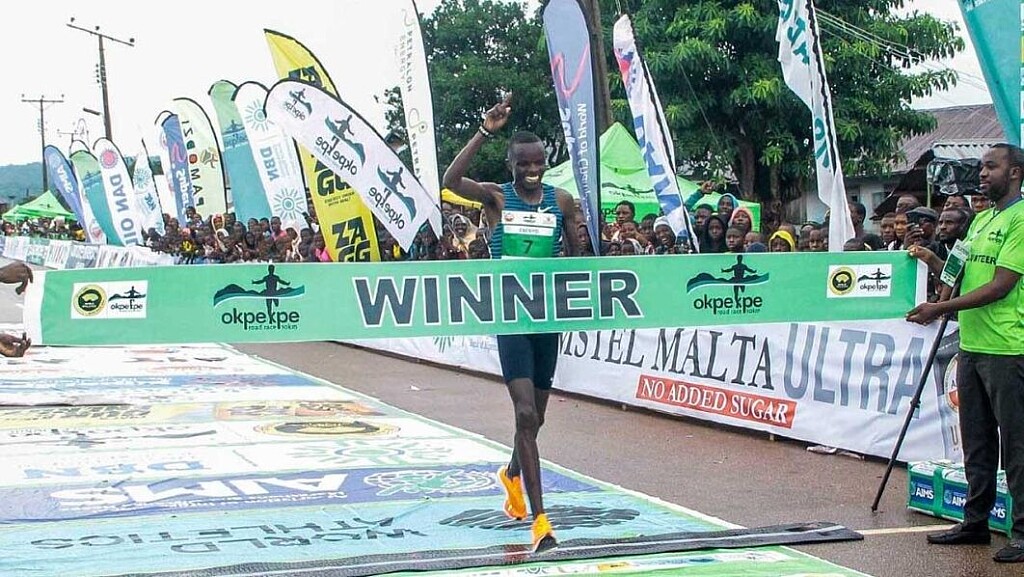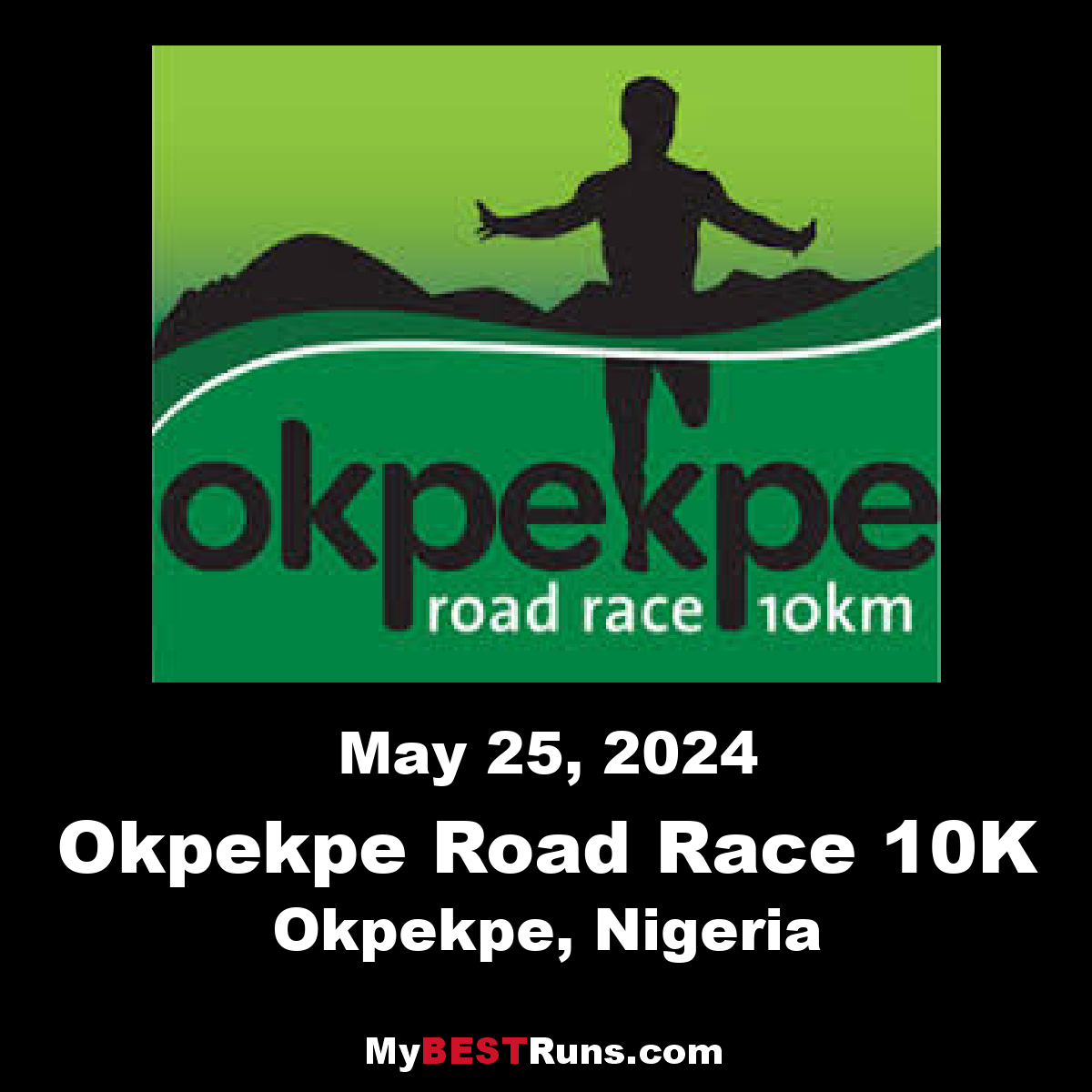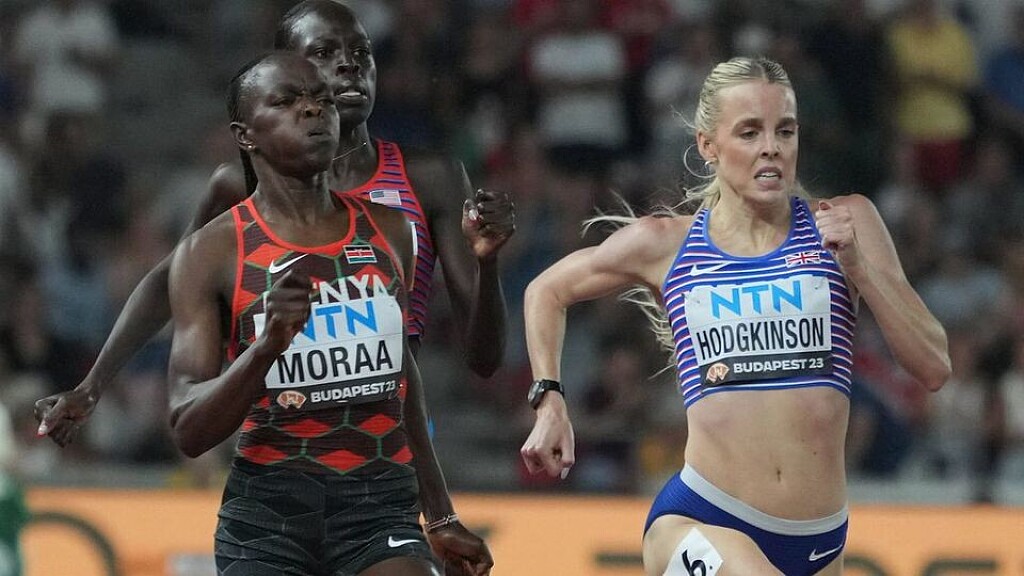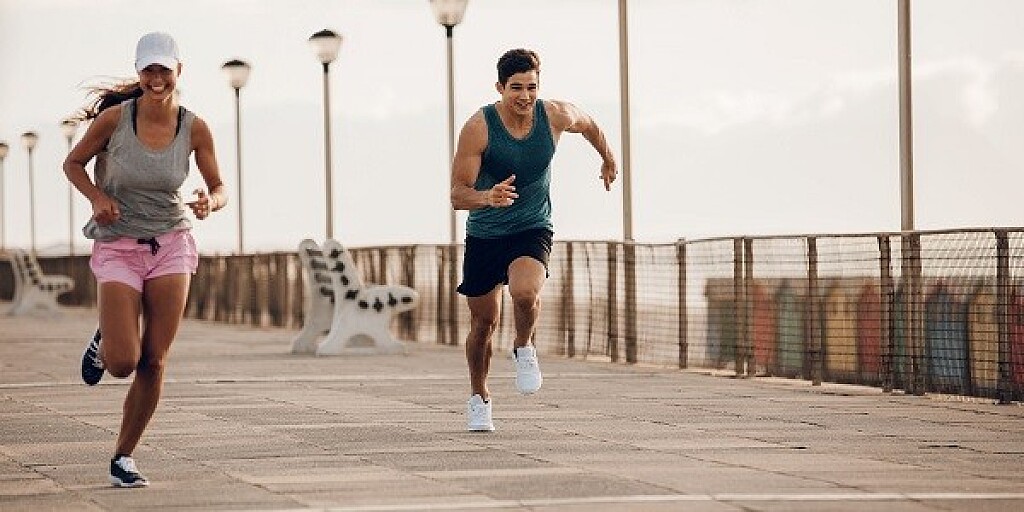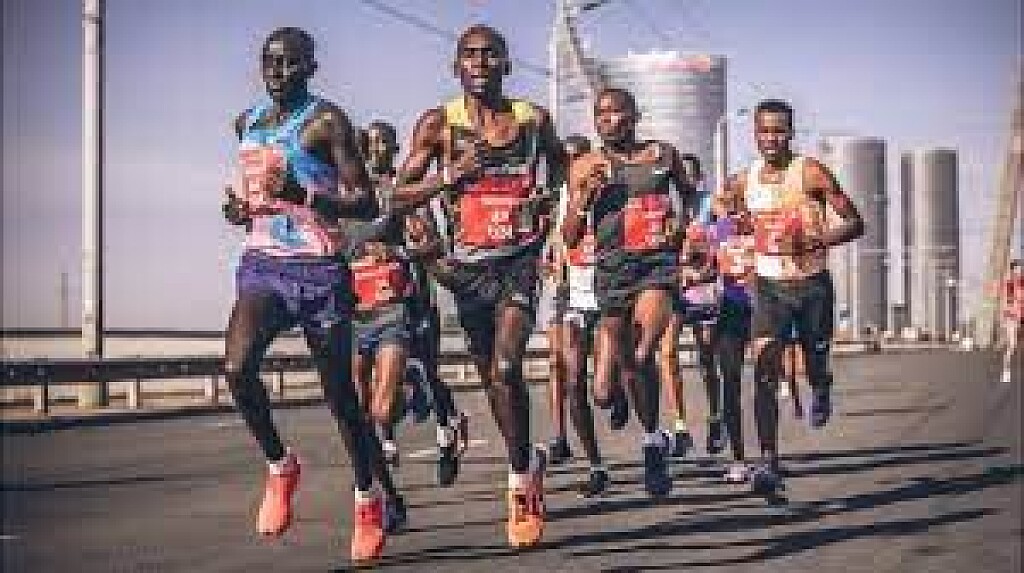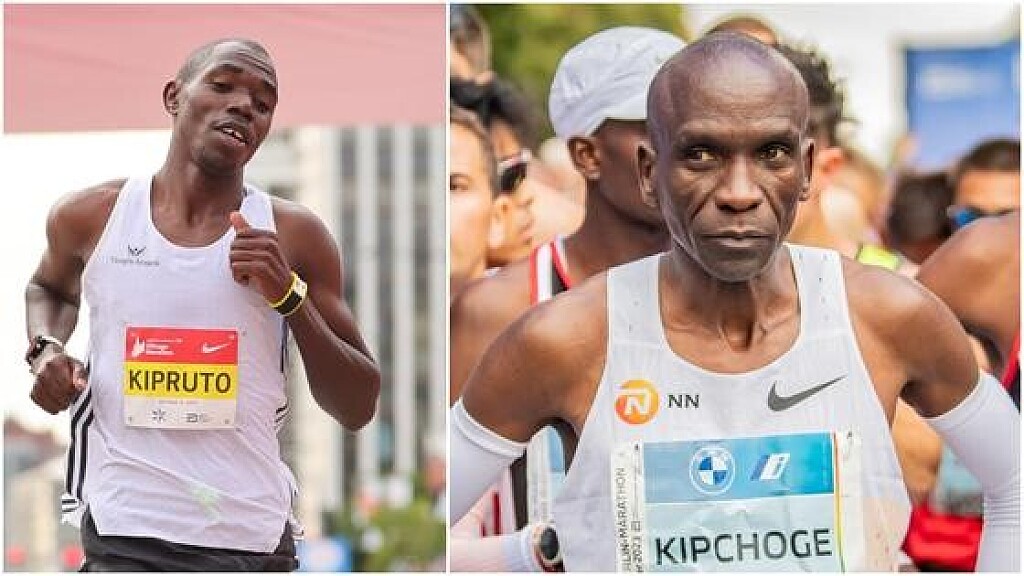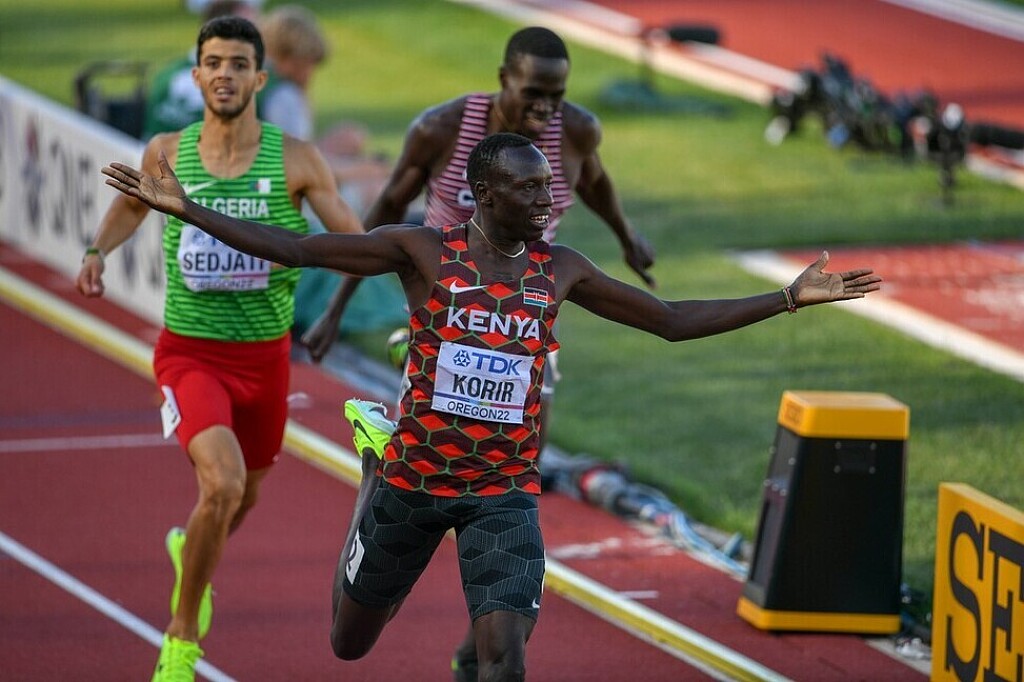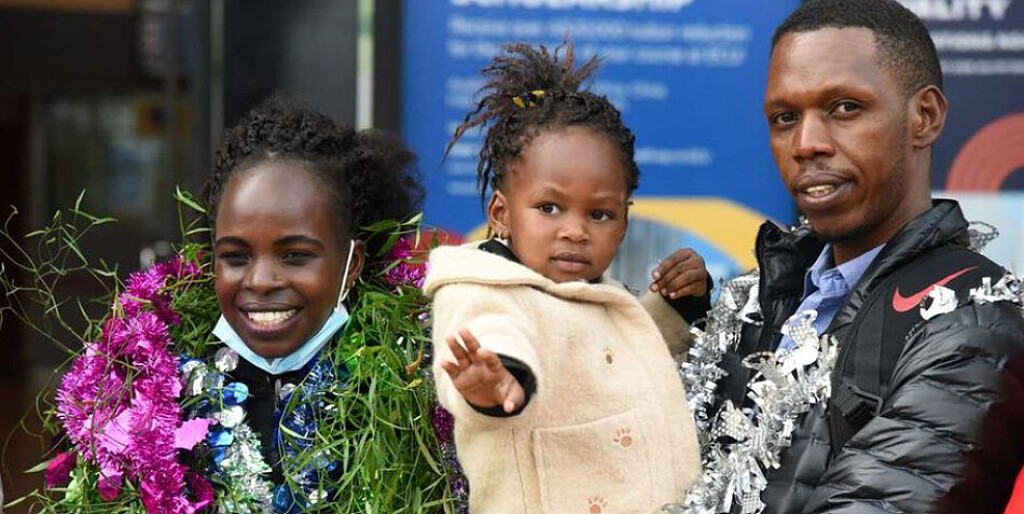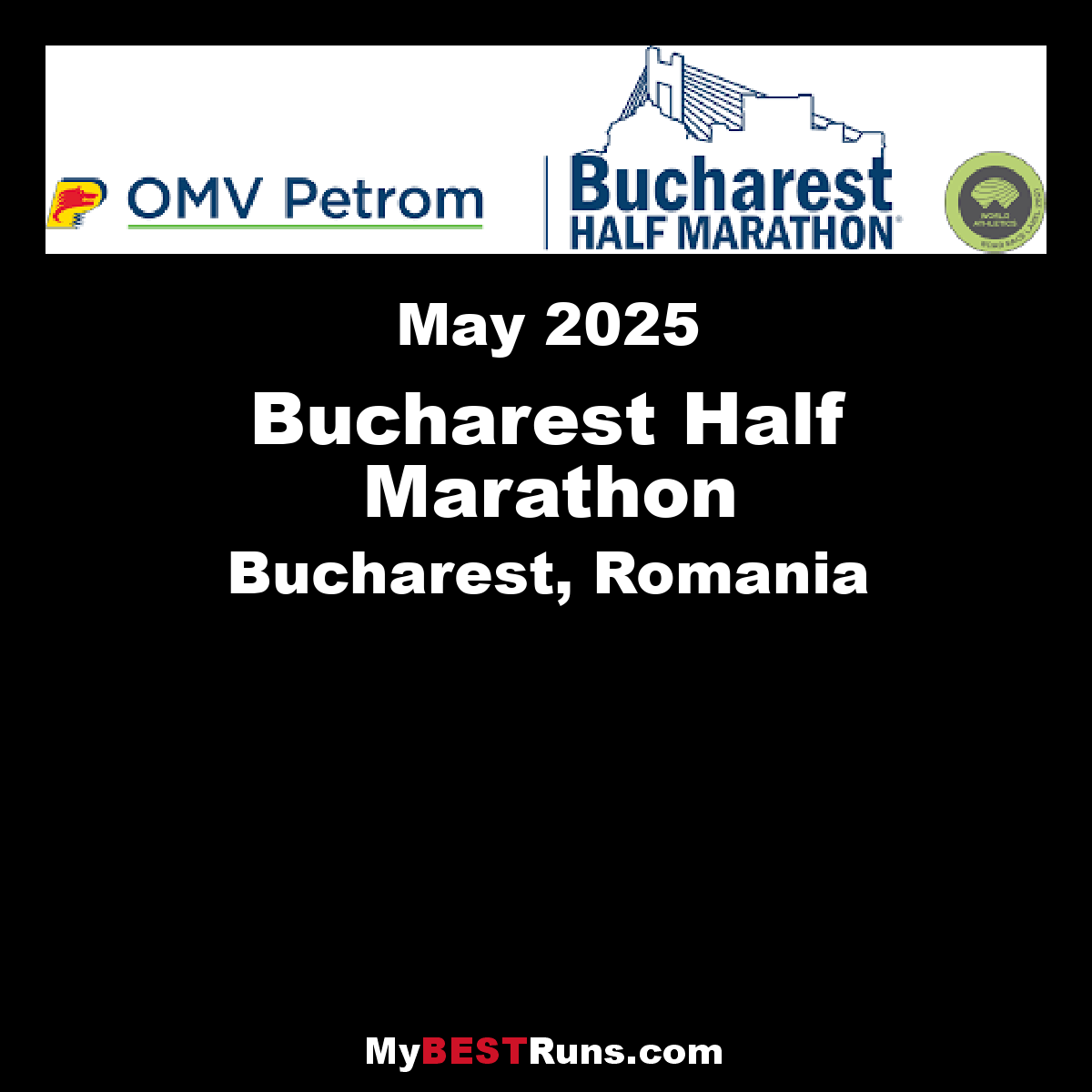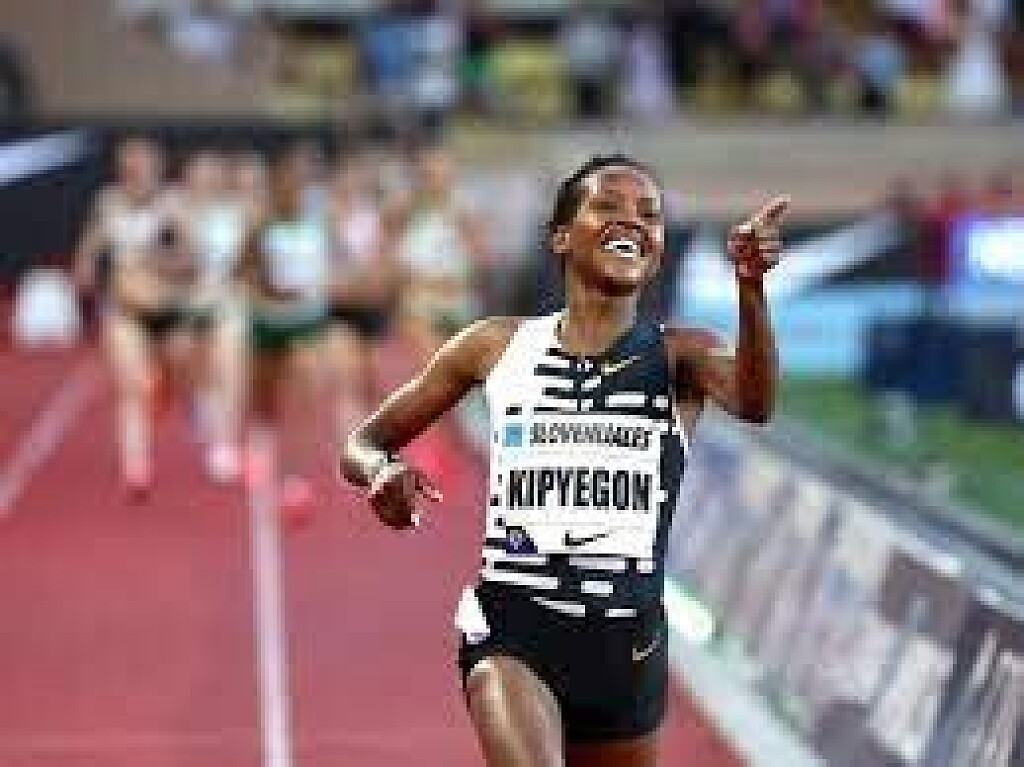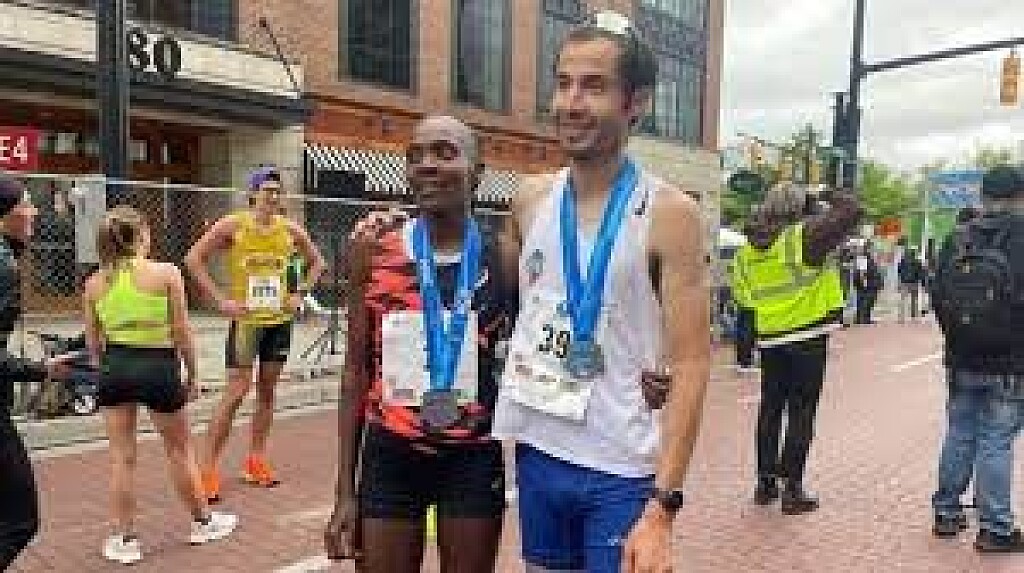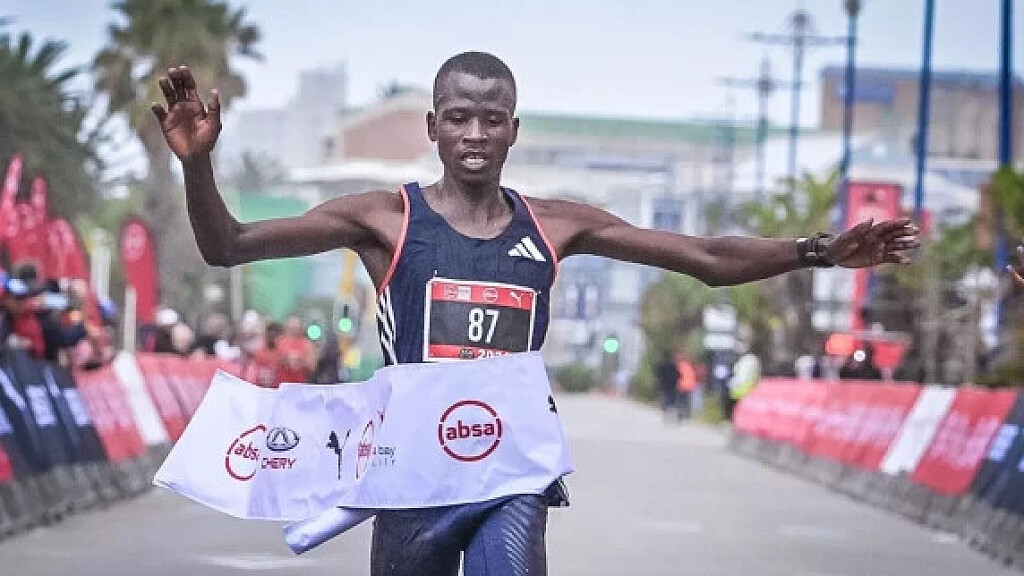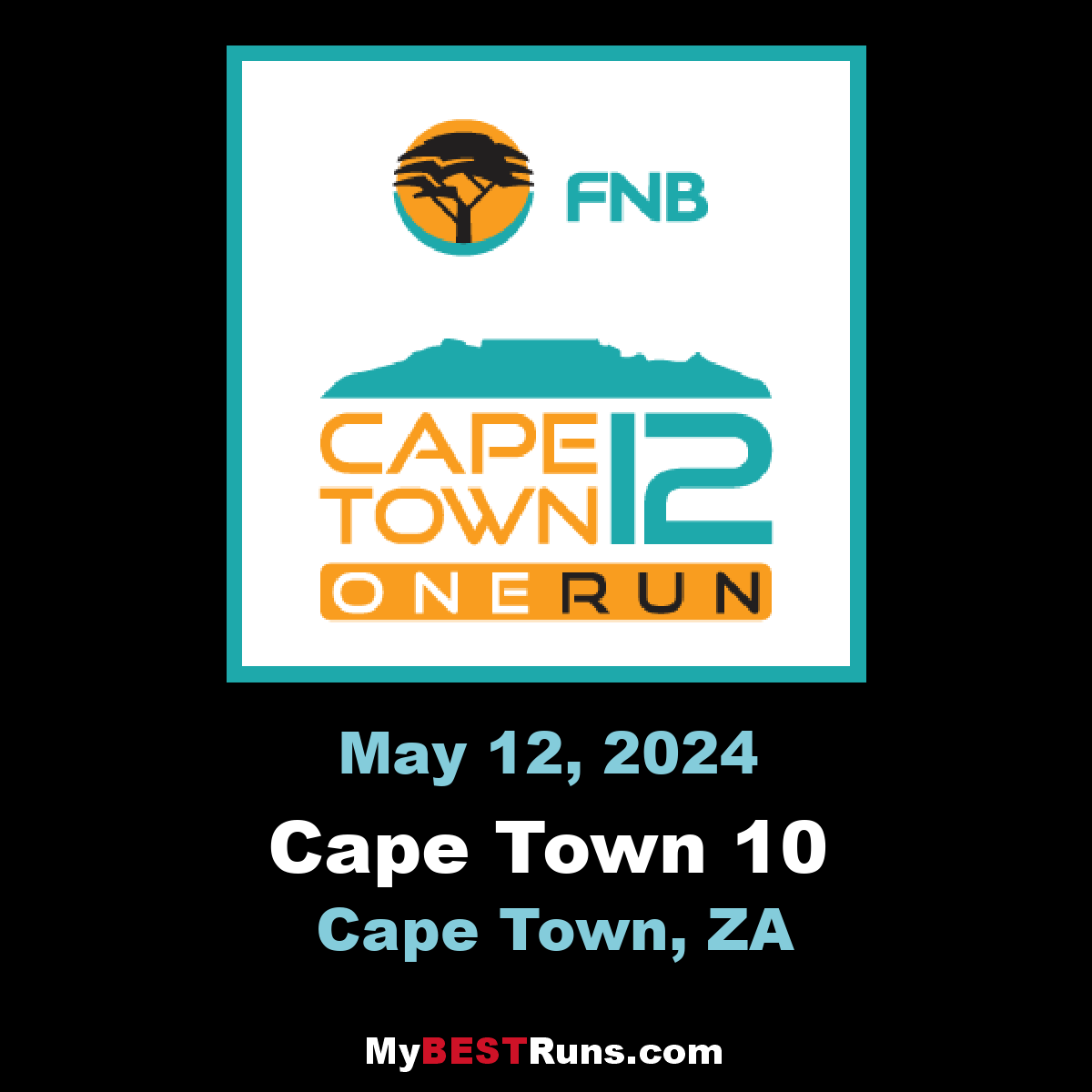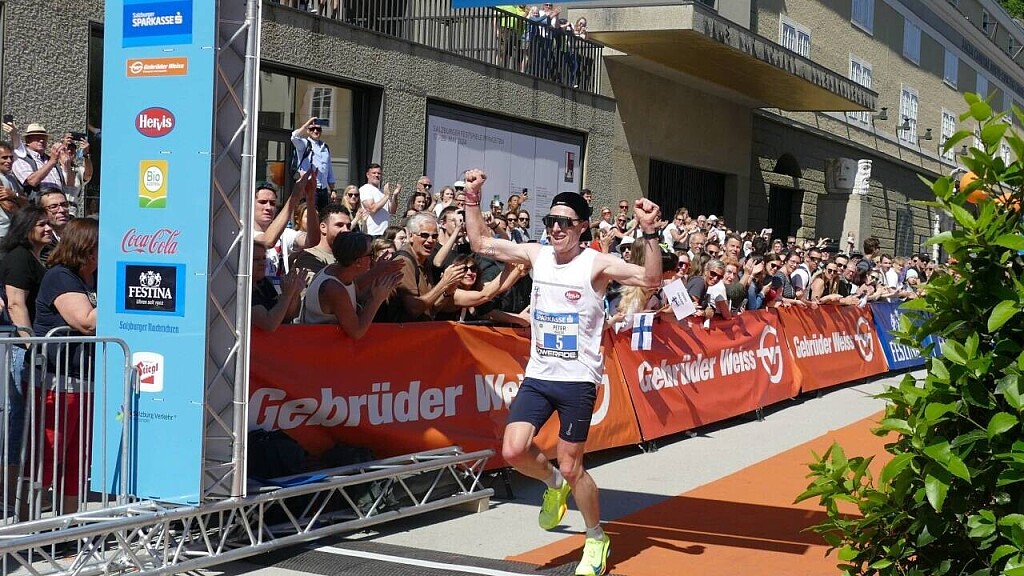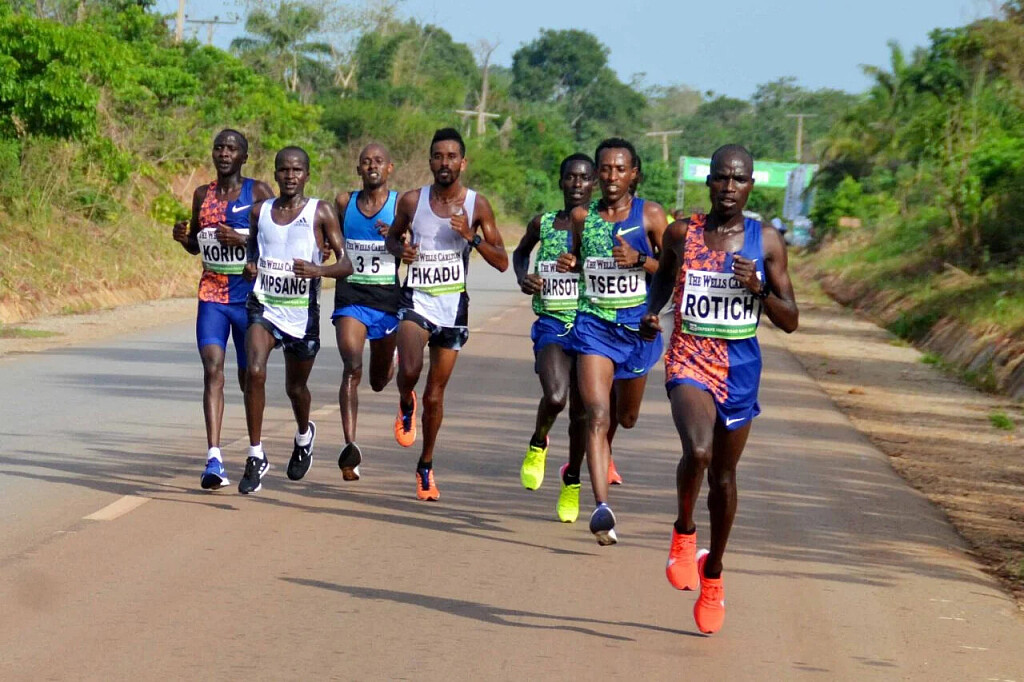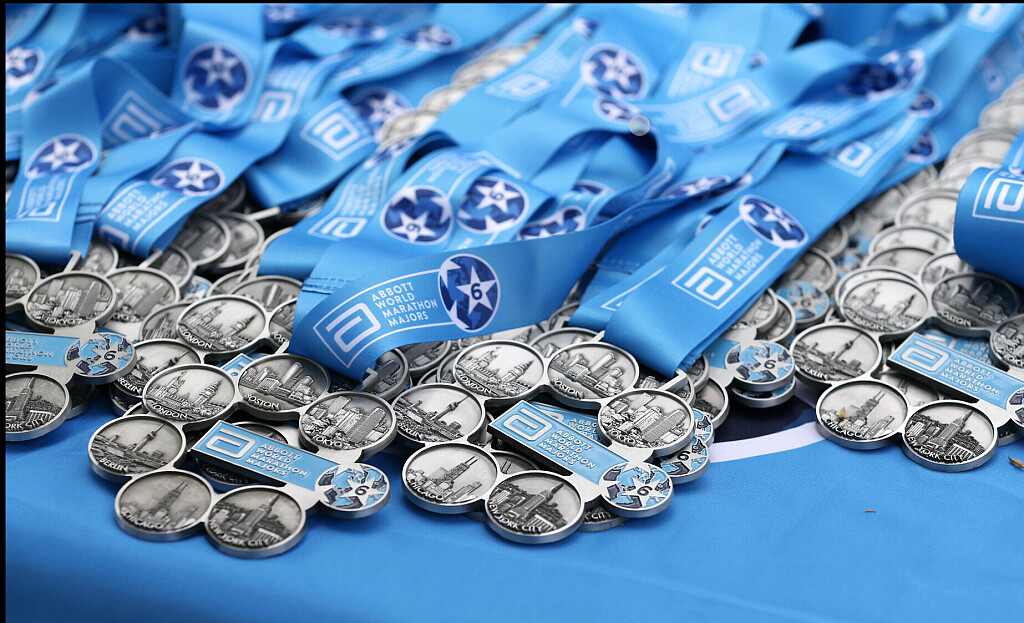Running News Daily
Running News Daily is edited by Bob Anderson. Send your news items to bob@mybestruns.com Advertising opportunities available. Train the Kenyan Way at KATA Kenya and Portugal owned and operated by Bob Anderson. Be sure to catch our movie A Long Run the movie KATA Running Camps and KATA Potato Farms - 31 now open in Kenya! https://kata.ke/
Index to Daily Posts · Sign Up For Updates · Run The World Feed
Chris Balestrini: Run Your Way, for the Canadian 50K record holder, running is a reward at the end of a challenging day
Chris Balestrini does it all: trail running, road running and track running. “Pretty much all types of running,” he laughs. “I guess I could say, I’m an outdoor enthusiast.” That downplays his accomplishments: Balestrini is a New Balance-sponsored athlete who holds the Canadian 50-kilometer record, but also runs a smoking fast 10K (29:22). He just finished second at the Vancouver Marathon. And he’s getting his PhD while training as a pro athlete.
“My first memory of running was Grade 3 cross country,” he says. “I remember I wanted to be on the team because all my friends were on the team. I absolutely did not love running at that point.”
A stress fracture early in his high school running career led him to cycling, and he grew to love life on two wheels. But the time commitment for being a pro cyclist was too much once he entered university, so he made the shift back to cross-country running. The engine he built from cycling and the strength built from a few years off to let his bones recover and develop allowed him to make the cross-country team at Western University (but just barely); then he was off and running.
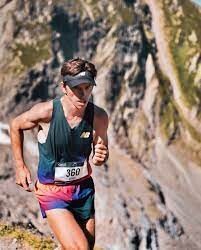
“From there, my love of running kind of came back and grew,” Balestrini says. “I realized that, maybe if I keep if I keep pursuing this, I can do something positive with it.”
Running even lends itself to chasing a doctorate degree, he says: “With running, there’s quite a bit of flexibility in training, when you’re doing experiments and when you’re writing,” he says. “You can find those nice parts of the day to get out and run, compared to when I was in medical school, and it was much more time-consuming. Then, it was harder to fit in training. Sometimes we’re sleeping at the hospital two to three nights a week, and working quite often. So you really have to prioritize running to make it happen. Luckily, I always viewed running as the the treat at end of the day, not something I had to do. That helped my mental health and my energy levels in the hospital. Viewing running as a reward makes a big difference in your outlook.”
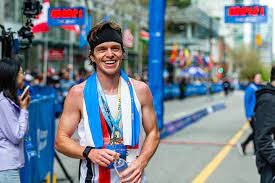
He was good at short distances, but as a cyclist, longer durations were intriguing—and that’s where the 50k came in. “From my background in road cycling, the races were always longer than two and a half hours, which is the marathon time,” he says. “I naturally looked at the trails and got my feet a little wet going into the 50K races, then started looking at the 50-milers. The Squamish 50 miler was my debut in that distance last summer and I enjoyed being out all day. I enjoy the more the undulating terrain and not knowing exactly if you’re on pace. On the road, you have splits every kilometer and you have a more strict race plan. If you’re falling off, then it might be a bad day. But on the trails, you can have a bad 10 kilometers and then come back in the next stretch. And I think that really appealed to me, because it’s more of a long-term battle within your body, and also your mind, as well as with the competitors on the course.”
“When I’m looking for a race, I typically want it to be competitive,” he adds. “I want to be able to have not only the course push me, but to have competitors push me too, to explore those deep dark places within yourself.”
“I think “run your way” means to run any surface, any distance, and just go out and put forth your best effort,” Balestrini says. “In the last five years, I’ve raced a 1,500m on the track. I’ve raced marathons. I’ve raced 50-milers on the trails. And when I when I think about those events, I’ve gained experience and I’ve gained happiness. I think it’s important to not pigeonhole yourself into to one event or one distance, or even one type of running, and to just explore everything that running has to offer.”
(05/24/2024) ⚡AMPby Molly Hurford
Gudaf Tsegay: Eyes on olympic glory at Paris 2024
Gudaf Tsegay’s medal haul is already impressive.
Three world titles outdoors, a world indoor crown, and an Olympic bronze. Plus two world records.
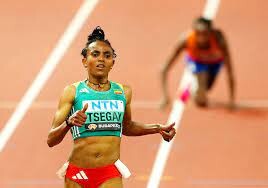
But the Ethiopian track athletics star is just getting started.
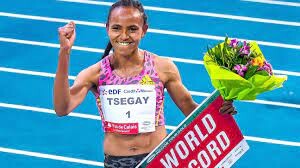
She still has many world record plans and has set sights on multiple podiums at the Olympic Games in Paris 2024.
Tsegay not only wants to top her races, ranging from the women's 1500m to the 10,000m, but wants to dominate by breaking world records as well.
Her latest target is lowering the 10km world record on Saturday (25 May) at the 2024 Prefontaine Classic in Eugene, Oregon. That would mean bettering her personal best by nearly half a minute to surpass Letesenbet Gidey’s current mark of 29:01.03.
(05/24/2024) ⚡AMPby Evelyn Watta
Paris 2024 Olympic Games
For this historic event, the City of Light is thinking big! Visitors will be able to watch events at top sporting venues in Paris and the Paris region, as well as at emblematic monuments in the capital visited by several millions of tourists each year. The promise of exceptional moments to experience in an exceptional setting! A great way to...
more...Mile clash the big attraction in Eugene
Going strictly by time, the Bowerman Mile at the Prefontaine Classic on Saturday (25) is one of the fastest races in the meeting’s 49-year history.
Add in the storylines, and it’s one of the most anticipated, too.
Featuring seven men with lifetime bests faster than 3:50, Olympic and world championship gold medallists, world record-holders and rivals whose banter has preceded the matchup for months, the mile caps a Wanda Diamond League meeting at Hayward Field whose potential for world-leading marks extends far beyond its final event.
Consider, for one, the women’s 800m, and the early window it will open into this summer’s Olympics. The field includes six of the eight competitors from last year’s World Championships final in Budapest, including gold medallist Mary Moraa and silver medallist Keely Hodgkinson. Notably absent will be bronze medallist Athing Mu, the Olympic champion, who was initially scheduled to race but has been withdrawn out of precaution because of a sore hamstring.
Raevyn Rogers, the 2019 world silver medallist whose image adorns a tower standing high above Hayward Field, also is entered, along with Jemma Reekie, Nia Akins and Halimah Nakaayi, who is coming off a victory at the USATF Los Angeles Grand Prix.
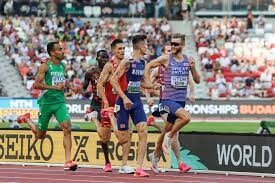
World champion Sha’Carri Richardson and Elaine Thompson-Herah headline the women’s 100m, along with world indoor 60m champion Julien Alfred and Marie-Josee Ta Lou-Smith, while world indoor 60m champion Christian Coleman and Ackeem Blake are among the fastest entered in the men's 100m.
Perhaps the most dominant athlete entering the meeting is Grant Holloway, the world 110m hurdles champion who has won all 10 races he has contested this year, including the indoor season and heats. That also includes running a world-leading 13.07 into a headwind to win in Atlanta last weekend.
The three-time world champion's last loss came on the very same Hayward Field track, at last September’s Prefontaine Classic. The only remaining gap on Holloway’s resume is an Olympic gold medal, and Saturday’s race could be an early preview of Paris, as the field includes five who raced in last summer’s World Championships final in Budapest, including silver medallist Hansle Parchment and Daniel Roberts, who earned bronze.
Shot put world record-holder and multiple world and Olympic champion Ryan Crouser will open his outdoor season in his home state and at the stadium where he owns the facility record, while trying to best Leonardo Fabbri’s world-leading mark of 22.95m.
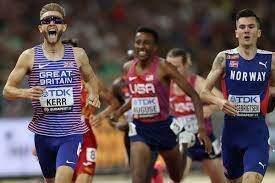
Since 2023, Crouser has lost in just one final – and it was at September’s Prefontaine Classic to Joe Kovacs, who won in Los Angeles last weekend with 22.93m, and is entered again. Payton Otterdahl, who owns the world No.3 mark this year, also is in the field.
Those events offer no shortage of global medallists. Few, however, carry the prospect for as much drama as the mile.
Over the past year, Olympic 1500m champion Jakob Ingebrigtsen and Josh Kerr, who outkicked Ingebrigtsen for last year’s world title in Budapest, have carried on a battle of words through the press about who could prevail in Paris.
Commonwealth champion Olli Hoare, who is part of the field following his 1500m win in Los Angeles last week, said the sport was better for the attention drawn by the back-and-forth between Ingebrigtsen and Kerr – but added that other racers wanted to strike the appropriate level of respect for their competitors, such as Yared Nuguse, whose PB of 3:43.97 was set battling Ingebrigtsen (4:43.73) down to the line at September’s Pre Classic.
“This is a big one. This is going to be a big one for a lot of egos,” Hoare said in Los Angeles. “But I think it’s going to be a big one for me because it’ll be the first race where I’ll have an inkling of where I am with the world’s best. There’s a bit of tossing and turning with the banter but you can’t disrespect that field. If you do, you’ll get eaten alive.”
That list of seven men under 3:50, which includes Hoare, notably doesn’t include Jake Wightman, who will be racing Ingebrigtsen for the first time since their duel at the 2022 World Championships in Oregon, when Wightman won gold; Abel Kipsang, who was fourth at the Tokyo Olympics; Geordie Beamish, less than three months after he stormed to the world indoor title; or Lamecha Girma, the steeplechase world record-holder who is making his mile debut.
“Jake Wightman’s back, he’s a world champion,” Hoare said. “Yared Nuguse, 3:43 mile – these guys are keeping quiet and they’re going to wait for their opportunity to strike. And when they do strike, I guarantee they will make a comment.”
They are not the only accomplished names entered in the distances.
Athletics Kenya will determine its men's and women's Olympic 10,000m qualifiers at Hayward Field, with Kenya's two-time world cross-country champion Beatrice Chebet, the world leader at 5000m this season, part of a women's race that will include world champion Gudaf Tsegay of Ethiopia, eight months after Tsegay set the world 5000m record on the same track.
World record-holder Beatrice Chepkoech will attempt to retain her controlling hold over the steeplechase when she races top challenger Faith Cherotich. The Kenyan duo produced the two fastest times in the world this year at the Diamond League meeting in Xiamen, which Chepkoech won in 8:55.40 to Cherotich’s 9:05.91. Olympic silver medallist Courtney Frerichs will no longer run after injuring the ACL and meniscus in her right knee.
One week after winning in Los Angeles, Diribe Welteji leads the 1500m field that includes 13 women who have run under four minutes. World indoor 3000m champion Elle St Pierre, who won the 5000m in Los Angeles, is running her first 1500m of the season, with Laura Muir, Nikki Hiltz, Jessica Hull, Hirut Meshesha and Cory McGee also entered.
Multiple world and Olympic gold medallist Sifan Hassan, as well as world No.2 Ejgayehu Taye, will feature in the 5000m.
In the field, world and Olympic pole vault champion Katie Moon opens her outdoor season against Sandi Morris, and in the triple jump four of the top five women this season are entered, led by Thea LaFond, whose 15.01m jump to win the world indoor title in Glasgow still stands as the mark to beat.
Olympic discus champion Valarie Allman has not lost in Eugene in two years, a run that includes claiming September’s Diamond League final. That could change on Saturday because of the presence of world leader Yaime Perez, who finished second to Allman in Xiamen last month.
In the men’s 200m, top US sprinters who will duel at the Olympic trials only weeks later will face off. Kenny Bednarek, fresh off a world-leading 19.67 in Doha, is scheduled to race against world No.2 Courtney Lindsey (19.71), with world silver medallist Erriyon Knighton making his season debut. Joe Fahnbulleh and Kyree King, winner of the Los Angeles Grand Prix 100m, are also entered.
Another winner in Los Angeles, Rai Benjamin, headlines the men’s 400m hurdles, and he enters with considerable confidence after running 46.64, the ninth-fastest performance of all time.
“I think I’m the fastest guy in the field, honestly,” Benjamin said of potential Olympic chances.
The women’s 100m hurdles and women’s hammer will not count towards Diamond League points totals, but will be more potential previews for global championships.
Women who account for five of the year’s six fastest times, all of whom are separated by fractions of a second, will face off in the hurdles. Tonea Marshall, fresh off her victory in Los Angeles in 12.42, leads 2019 world champion Nia Ali, Olympic champion Jasmine Camacho-Quinn, two-time world champion Danielle Williams and world indoor champion Devynne Charlton.
Brooke Andersen’s 79.92m throw from earlier this month remains the world-leading hammer mark this season but she will be challenged by world champion Camryn Rogers, 2019 world champion DeAnna Price and world silver medallist Janee’ Kassanavoid, who own the next three farthest throws this season.
(05/24/2024) ⚡AMPby Andrew Greif for World Athletics
Prefontaine Classic
The Pre Classic, part of the Diamond League series of international meets featuring Olympic-level athletes, is scheduled to be held at the new Hayward Field in Eugene. The Prefontaine Classicis the longest-running outdoor invitational track & field meet in America and is part of the elite Wanda Diamond League of meets held worldwide annually. The Pre Classic’s results score has...
more...Why Athing Mu has withdrawn from clash against Mary Moraa & Keely Hodgkinson at Prefontaine Classic
The renewal of the rivalry between Athing Mu, Keely Hodgkinson, and Mary Moraa will have to be postponed following the Mu's withdrawal from the Prefontaine Classic.
Athing Mu’s head coach Bobby Kersee has announced that the Olympic champion will miss the looming showdown against world champion Mary Moraa and world bronze medallist Keely Hodgkinson at the Prefontaine Classic, the Diamond League Meeting in Eugene, Oregon.
The event is scheduled for Saturday, May 25 and Mu has been forced to withdraw due to a lingering soreness in her left hamstring.
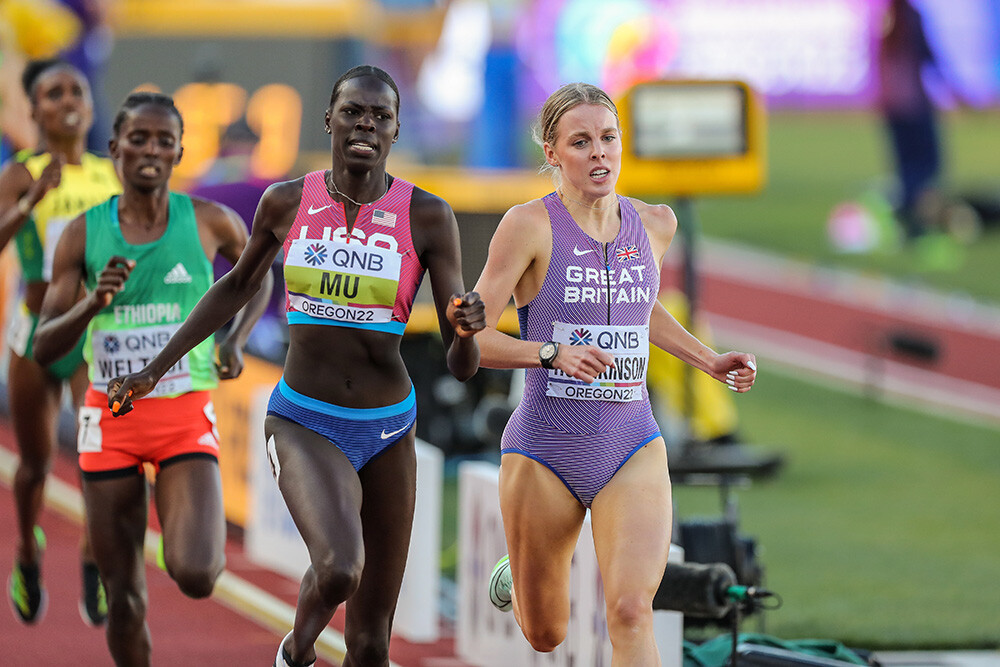
Speaking to Runner’s World, the coach explained that the injury is not worth risking to compete. This marks the third time that Mu’s hamstring has pushed back her 2024 season opener. The former world champion was initially scheduled to open at the Oxy Invitational in early May in Los Angeles, then the Los Angeles Grand Prix on May 18, but she unfortunately withdrew from the events.
“She’s a veteran, if she’s healthy, she can make the team. And so, if I injure her before, I’m gonna be called a fool; if I don’t race her before, I’m gonna get [criticism].

“So I have to do the math that’s going to put her on the team, and so whatever that math is between now and the 21st, that’s what I’m gonna do,” the coach said.
Meanwhile, Kersee confirmed that this season, Mu will be focusing on the 800m, the event in which she won a gold medal at the delayed 2020 Tokyo Olympic Games.
He added that Sydney McLaughlin-Levrone will also focus on the 400m Hurdles, where she is the world record holder and she is also the defending Olympic champion.
Meanwhile, Kendra Harrison, another of Kersee’s athlete will not competing in the 100m hurdles. Kersee explained that the American suffered a tight back after traveling to compete in last week’s Atlanta City Games.
“She’s ready to go and that’s what I’m telling her. Right now, unless I know she’s 100 percent healthy ... athletes are taking a high risk right now for minimum gain.
“If you’re going to take a high risk, there’s only two races left in this year where you got to take a high risk for maximum gain and that’s our Olympic Trials and our Olympic Games.
“Everything else, you can’t take the risk if you’re not sure about what to gain and vice versa. And so I just think that, you know, in this case, well in all cases, that’s what I’m looking at as a coach: What’s the risk-reward situation, based on where we stand right now?
“Like Sydney last year, based on her career I mean, I could probably try to see if we could struggle through the world championship, but do I break down one of our world’s best athletes trying to sneak out one more medal and then subject her to more injury and don’t have anything this Olympic year, versus do I rest her?
"I think I’ve shown a little bit so far that maybe the rest did not hurt her and now she’s starting to compete again,” the coach said.
(05/23/2024) ⚡AMPby Abigael Wuafula
Boston Athletic Association names field of professional athletes for 2024 Boston 10K
The Boston Athletic Association announced Wednesday the professional fields for the 2024 Boston 10K, which will be held on Sunday, June 23.
American Olympic marathoners Emily Sisson and Clayton Young will race the new and enhanced course that features scenic views of the Charles River and finishes at Boston Common.
Making his American road racing debut is world-number one ranked road racer Sabastian Sawe, of Kenya, and returning is defending Boston Half champion Abel Kipchumba. 2024 Boston Marathon runner-up Sharon Lokedi and two-time Boston Marathon champion Edna Kiplagat headline the women’s field, while Para Athletics Division winners Marko Cheseto Lemtukei, Atsbha Gebremeskel and Kelly Bruno will compete two months after finishing April’s marathon.
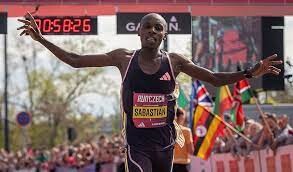
“The Boston 10K presented by Brigham and Women’s Hospital kicks off the summer running season,” said Jack Fleming, the president and CEO of the B.A.A. “We’re eager for participants to take on the new course, which will run along the Charles River, over two historic bridges, and across the Boston Marathon finish line before finishing at Boston Common. Leading the way are some of the fastest and most accomplished athletes to race 6.2 miles, some doing so as a tune-up for the Olympic and Paralympic Games.”
Sisson and Young locked up their spots on Team USA’s Marathon roster in February, both finishing second in their respective women’s and men’s races. Sisson returns to the Boston 10K after placing second in 2022 and fourth in 2023, while this will be Young’s first B.A.A. event.
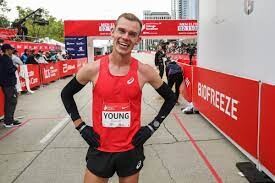
From Kenya are Lokedi and Kiplagat, racing in Boston two months after placing on the podium at the 128th Boston Marathon presented by Bank of America. Lokedi is currently the alternate for Kenya’s Olympic Marathon team, and Kiplagat has twice finished runner-up at the Boston 10K. Joining them among international competitors are last year’s Boston 10K second-place finisher Stacy Ndiwa (Kenya), Cherry Blossom 10 Mile champion Sarah Chelangat (Uganda), 2022 Beach to Beacon 10K winner Fantaye Belayneh (Ethiopia), and 2021 Olympic 10,000m sixth place finisher Irine Cheptai (Kenya). Mercy Chelangat, an NCAA Cross Country and 10,000m champion from Kenya, and 2022 Boston Half third-place finisher Hiwot Gebremaryam (Ethiopia) are entered as well.
From the USA is 2015 Boston Marathon champion Caroline Rotich, B.A.A. High-performance team member Abbey Wheeler, 2024 USA 15K third-place finisher Emily Durgin and former American 10,000m record holder and U.S. Olympian Molly Huddle.
The men’s international field is headlined by Sabastian Sawe, the top-ranked road racer in the world and the 2023 World Athletics Half Marathon champion. Sawe, of Kenya, has run 26:49 — fastest in the field — and will be making his American road racing debut.
From Kenya are Boston Half reigning champion Abel Kipchumba, 2023 Falmouth Road Race winner Wesley Kiptoo, and 17-time NCAA champion Edward Cheserek. Also from Kenya is Alex Masai, third in 2023.
Beyond Clayton Young, American men on the starting line will include recent USA 25K national champion Diego Estrada, 1:00:02 half marathoner Teshome Mekonen, and B.A.A. High Performance Team member Josh Kalapos. Kalapos finished 17th at February’s U.S. Olympic Team Trials – Marathon.
Hermin Garic returns in the men’s wheelchair division as a two-time defending champion, timing 22:44 last year. He’s joined by Michelle Wheeler, a top entrant in the women’s wheelchair division, who was runner-up last year.
In the Para Athletics Divisions, Brian Reynolds — who set a world record 41:09 at last year’s event for T61-64 Classification (lower-limb impairment) is back with sights on the podium again. Marko Cheseto Lemtukei and Kelly Bruno — each of whom won the T62-T64/T42-T44 Division at the 128th Boston Marathon — will compete, as well as Atsbha Gebremeskel, the two-time Boston Marathon T46 (upper limb impairment) Para Athletics Division champion. More than 25 athletes will participate in the Para Athletics Divisions and Adaptive Programs at this year’s Boston 10K. Nearly $20,000 — an event record — in prize awards are available to top-three finishers across Vision Impairment (T11-T13), Upper Limb Impairment (T45-T46), Lower Limb Impairment (T61-T64), Coordination Impairment (T35-T38) classifications.
The Boston 10K presented by Brigham and Women’s Hospital will be the second event of the 2024 B.A.A. Distance Medley, a year-long series featuring the Boston 5K (April), Boston 10K (June), and Boston Half (November). While open registration is sold out, limited spots are still available through Brigham and Women’s fundraising team.
(05/23/2024) ⚡AMPby Jamy Pombo Sesselman
B.A.A. 10K
The 6.2-mile course is a scenic tour through Boston's Back Bay. Notable neighborhoods and attractions include the legendary Bull and Finch Pub, after which the television series "Cheers" was developed, the campus of Boston University, and trendy Kenmore Square. ...
more...Five common racing mistakes and tips to prevent them
Race day is a culmination of weeks, months, or even years of training. It’s the day when all your hard work is put to the test, and every runner aims to give their best performance. However, even the most seasoned runners can fall prey to certain common mistakes on race day that can hinder their performance.
1.- Overlooking nutrition and hydration needs
It shouldn’t surprise you that this one tops our list, based on how often we write about running and nutrition–after all, the two are so closely linked. Whether it’s eating too much or too little pre-race, consuming unfamiliar foods or not fuelling enough during the race, improper nutrition can lead to gastrointestinal issues and a lack of energy. Stick to familiar, easily digestible foods and hydrate adequately in the days leading up to the race. (As we approach summer, this becomes even more important.) Remember that hydrating for a race should begin earlier than just the day before.
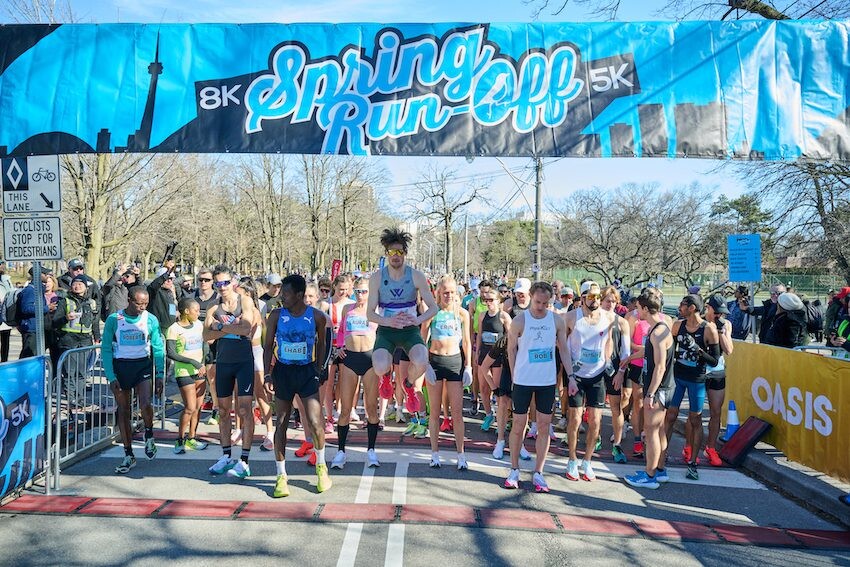
2.- Forgetting your race plan
Many runners get caught up in the excitement of race day and abandon their carefully crafted race plan. They may start too fast, trying to keep up with the adrenaline-fuelled pack, leading to early exhaustion and a disappointing performance. It’s crucial to stick to the pacing strategy you’ve trained for and avoid the temptation to deviate from it. This also ties back to hydration and nutritional needs; it’s common to feel good in the early kilometres of a race such as a marathon and feel you can skip aid stations to save time.
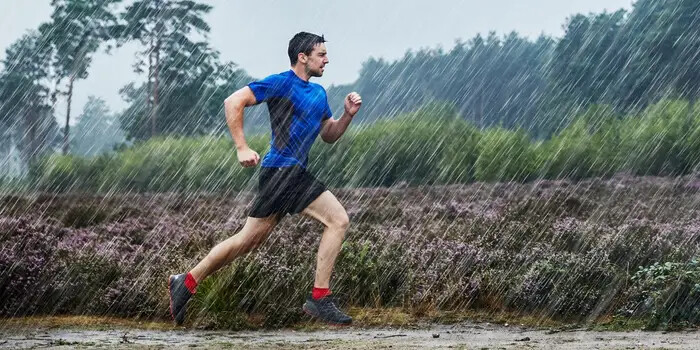
3.- Neglecting a warmup
Skipping warmup exercises can leave muscles tight and increase the risk of injury during the race, especially when you’re running as hard as you can from the gun going off. A proper 15- 20-minute warmup routine helps prepare the body for the physical demands of running at your top effort for your race distance. Spending a few minutes doing dynamic stretches and a light jog can make a significant difference in how your body responds during the race. (This is a good practice to adopt in training, too.)
4.- Nothing new on race day
The longer you’re exposed to endurance sports, the more frequently you’ll hear this phrase thrown around. Race day is not the time to experiment with new shoes, apparel or gear, since that can lead to discomfort, blisters or chafing, which can distract from your performance. Stick to the tried-and-tested gear that you’ve trained in to avoid any surprises on race day.
5.- Not adjusting your plan for race-day conditions
Weather conditions can have a significant impact on race performance, yet many runners fail to adjust their strategies accordingly. Running too hard in hot weather can lead to dehydration and heat exhaustion, while failing to adjust your pace for strong winds or hilly terrain can lead to early fatigue. Stay informed about the race conditions and adjust your race plan accordingly, but don’t let the stress of a bad weather forecast take away from your enjoyment of the day.
(05/23/2024) ⚡AMPby Claire Haines
Daniel Simiu secures US visa to join dense 10,000m field at Prefontaine Classic
Daniel Simiu has finally secured his US visa and will be out to challenge his compatriots in the men's 10,000m at the Prefontaine Classic in Eugene, Oregon.
The world number one, Daniel Simiu has finally secured his US visa and he will be out to battle for an Olympic slot at the Prefontaine Classic, the Diamond League Meeting in Eugene, Oregon.
Athletics Kenya announced that they will select the 10,000m team at the event and it will be very important for athletes seeking to qualify for the Paris 2024 Olympics.
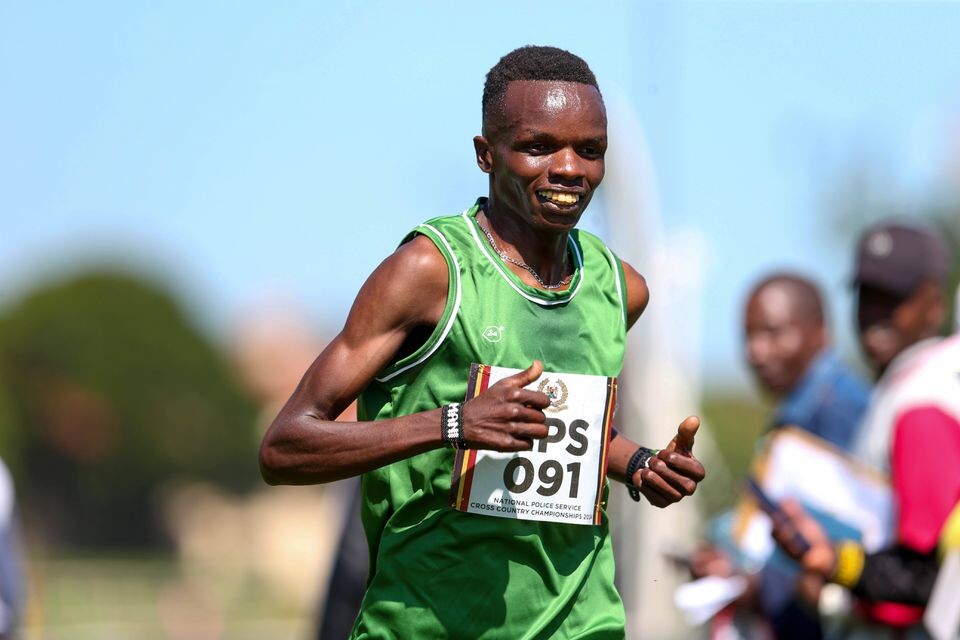
Simiu, the world 10,000m silver medallist had issues securing his visa but it was secured and he travelled just in time ahead of Saturday’s event. The world half marathon silver medallist will go up against a formidable field, with the athletes fighting to make it to the top two.
He has since been unbeaten so far, winning the Sirikwa Classic Cross country and proceeding to take the crown at the 67° Campaccio-International Cross Country. He then won the Berlin Half Marathon last month.
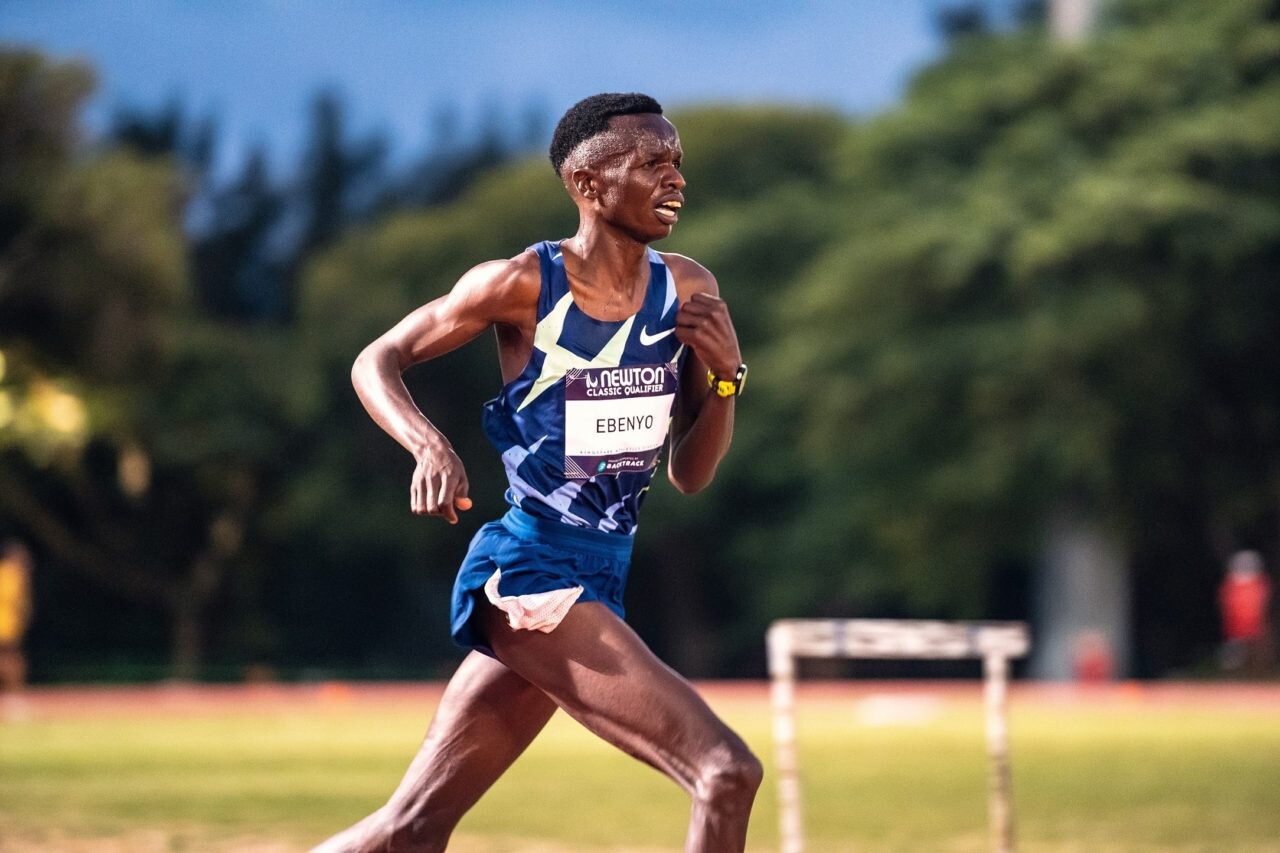
Former world half marathon record holder Kibiwott Kandie will also be in the mix, after having a great start to his season when he won the eDreams Half Marathon Barcelona by Brooks.
He had quite a mixed season last year, where he was forced to pull out of the World Championships in Budapest, Hungary due to an injury setback. However, this season, he plans to bounce back and take all the glory on the track and roads.
Nicholas Kimeli will also be a top contender as he hopes to make a bounce back from last year’s dismal performance at the Hungarian capital.
Former world 10,000m silver medallist Stanley Waithaka also intends to make a statement on the track he won Kenya a silver medal in 2022. Waithaka has also suffered injury setbacks and he will be hoping to make a comeback this season.
Waithaka has already opened his season, finishing second at the 8th NITTAIDAI Challenge Games where he clocked an impressive 27:21.03 to cross the finish line. Weldon Langat and Daniel Mateiko have also been confirmed for the event.
(05/23/2024) ⚡AMPby Abigael Wuafula
Prefontaine Classic
The Pre Classic, part of the Diamond League series of international meets featuring Olympic-level athletes, is scheduled to be held at the new Hayward Field in Eugene. The Prefontaine Classicis the longest-running outdoor invitational track & field meet in America and is part of the elite Wanda Diamond League of meets held worldwide annually. The Pre Classic’s results score has...
more...Joggling inventor dies at 72
Bill Giduz was, by all accounts, kind, generous and funny person who inspired hundreds of people to take up the sport of juggling while running.
on May 11, Bill Giduz, credited for inventing the sport of joggling, died at age 72 of complications from Parkinson’s disease. Giduz achieved legendary status within the tight-knit joggling community, with jogglers from around the world expressing their condolences on the Jogglers United Facebook group.
The family’s obituary includes some amazing details from Giduz’s life, which he clearly lived to the fullest. The genius of combining juggling with running and naming it “joggling” is but one tiny blip in his long list of achievements, adventures and community-building work. Hilariously, according to the obituary, Giduz used to literally juggle his kids: “His love of juggling carried over to his family. His children remember being his “juggling props,” his son, Luke, said. “He used to juggle us as babies along with two balls,” added his daughter, Jenny.
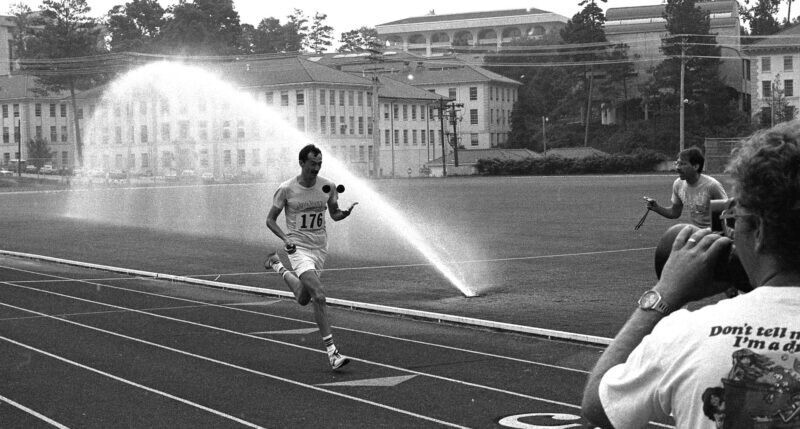
Giduz invented joggling by accident in 1975, according to a 2015 Huffington Post story on the history of the sport, when he brought his juggling balls to the North Carolina State University track to work on some juggling tricks after a running workout.
“That day, he started jogging as he juggled, and discovered something amazing: the pace of a three-ball juggling pattern easily matches with a wide range of running cadences,” author Kevin Bell wrote. “In other words, every throw coincides with the natural motion of the arms. Bill realized that the motions complemented one another beautifully, and he called it ‘joggling’ almost immediately.”

Four years later, Giduz, a Columbia journalism grad, became the editor of the International Jugglers’ Association (IJA) newsletter and began writing a column about joggling called Joggler’s Jottings. I discovered some of these columns online when I first began joggling in 2005, and was amazed learn the history of the sport, and that the guy who came up with the idea was still around. It’s like if you were a basketball fan and James Naismith were writing about the NBA.
In one of the Joggler’s Jottings columns, Giduz included some quotes from the late New York City Marathon race director, Fred Lebow, a joggling fan and a joggler himself:
“Lebow first heard of joggling from Billy Gillen, a Brooklyn resident now well known for his five-ball joggles around Central Park,” Giduz wrote. “However, Lebow only took it seriously after watching Albert Lucas joggle the Los Angeles Marathon last spring.”
“Lebow immediately recognized a combination of beauty and athletic benefit. ‘The normal person can’t believe someone can juggle and run that fast at the same time,’ he said. ‘I figured if Lucas could do a marathon juggling, I should be able to do it standing still.'”
“So Lebow set out to learn, and found it surprisingly easy to master the cascade. He began using one-pound Exerballs to build upper body strength. And now that he can juggle standing still, Lebow wants to begin joggling.”
“Bigger than his personal discovery of joggling, however, is his decision to allow Lucas and Gillen to joggle in the upcoming New York Marathon. ‘I see joggling as only positive,’ Lebow said. ‘Normally I might not allow it in a race, because some people might think it interferes with runners. However, these two people are experienced. We’ll play it by ear and see how it develops. We don’t have a joggling division yet, but you never know what can happen.'”
A quote from this column appeared in the New York Times story by Lindsay Crouse in 2015 about the New York City Marathon banning me from joggling the race on a security technicality.
U.K.-based data scientist and joggler Scott Jenkins recently brought back the Joggler’s Jottings column to complement his database of joggling results that he’s compiled with fellow U.K. joggler Chris Edwin. Jenkins was hoping to get in touch with Giduz to let him know that the Jottings column had been re-joggled and asked me if I had any contact info for him. I found Giduz’s email from the News of Davidson site where he worked, but, unfortunately, he was likely too sick by the time Jenkins tried to reach him. I was really hoping to one day meet Giduz, or at least exchange an email or two, but was very touched that his son Luke took the time to reach out to me on Instagram.
Although I never met him, by all accounts, including this wonderful obituary for the IJA by juggling historian David Cain, Giduz was a kind, generous and funny person. I know for sure that he has not only inspired hundreds of people to take up joggling, but has also brought joy to millions of spectators of the sport, through smiles, laughs, ooohs and aaahs from all the people who’ve watched others joggling since that day Giduz decided to take his juggling balls to track practice almost 50 years ago. Thank you, Bill.
(05/22/2024) ⚡AMPby Michal Kapral
The Keys to Courtney Dauwalter’s Continued Dominance
Ultrarunner extraordinaire Courtney Dauwalter has picked up in 2024 right where she left off last year. After famously winning three of ultrarunning’s most epic races during the span of about nine weeks last summer—Western States 100, Hardrock 100, and Ultra-Trail du Mont-Blanc—the 39-year-old athlete from Leadville, Colorado, defended her Transgrancanaria 126K title in a decisive wire-to-wire win in late February and won the Mount Fuji 100-miler for the second time on April 27, placing third overall. She’s now gearing up to go for a third straight win at the Hardrock 100 on July 12-13 in Silverton, Colorado. After Hardrock, she’ll be crewing and pacing her husband, Kevin Schmidt, at the Leadville 100 on August 17-18, and then tackling a yet-unannounced trail running project in September.
We caught up with Dauwalter to talk about her fueling and training in a virtual press conference, where she announced the May 20 release of her signature flavor of Tailwind Nutrition Endurance Fuel—Dauwaltermelon with Lime—as a permanent part of the brand’s lineup. Since she’s emerged as one of the world’s top trail ultrarunners, she’s been known for having a sound approach to nutrition and fueling, never shying away from eating whatever she wants, admitting her soft spot for candy and pastries, or having a beer every now and then if she feels like it.
RUN: How did you develop such a sensible approach to nutrition and fueling, and what, if anything, have you changed?
Courtney Dauwalter: “I am still eating all of my favorite things whenever they sound good in quantities that sound good, and I am not intending to change that part of my life, because it just gives me a lot of joy to live that way. I guess it’s got to be partly my upbringing, and also with Kevin and I, our idea of how we want to live our lives is to enjoy it to its fullest while it’s here. We just want to enjoy food, enjoy meals out, enjoy the cravings that we have, and not worry about it. But I would say in the past couple of years I do more consistently do a recovery drink after a long run or after putting in big efforts, and that’s something that I was a little more lax with originally, so I feel like that’s a step in the right direction.”
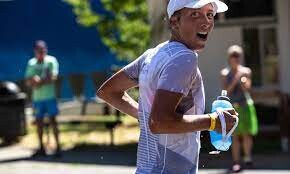
RUN: What was your fueling strategy when you first got into ultrarunning in 2011?
CD: “When I first got into ultrarunning, I had no nutrition plan. I didn’t know what I was doing. My first race was a 50K, and I remember not knowing that these aid stations would be buffets. My mind was blown when I got to them—all the options were overwhelming. I just started filling my pockets with jelly beans. In those first years, I did a lot of mimicking of what the people around me were doing. So if I came to an aid station and someone was grabbing pickles and drinking Mountain Dew, then that’s what I would do. If they were grabbing pretzels and cheese cubes, that’s what I would go for. It was just kind of roulette for me on what I would end up eating—if it would work, or if it wouldn’t work.”
RUN: You have told stories about a few famous bonks early in your career. When did you start to dial-in your fueling strategy?
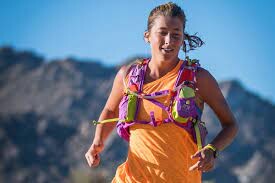
CD: “Initially, I never had a fueling plan at all. But then in 2017, I went to the Run Rabbit Run 100 in Steamboat Springs, Colorado, and Tailwind was available on course at all of the aid stations. I had a buddy who had started using it that year, and I remember just loving it and suddenly not having all the stomach issues and energy dips that I often had. I was like, ‘Oh, maybe this is what it’s like to have something reliable.'”
RUN: What is your current approach to race-day nutrition?
CD: “At this point we’ve gotten pretty dialed on the race nutrition plan for those 10-to 24-hour efforts or the events of 100 miles or below. I’m not a person who has my watch beeping at me ever to remind me to eat. I don’t get those kinds of reminders, and I don’t want to eat every 15 minutes or 30 minutes during a race. I’m going to just slow drip the calories I have as often as possible—basically it’s an eating contest on the move. Now I know my body functions pretty well with about 200 calories per hour during those efforts. So, depending on the distance between aid stations, I can rely solely on a bottle of Tailwind and then supplement with some chews or waffles or gels, because usually I get actually hungry feeling and having something solid helps with that. But mostly, I’m relying on Tailwind as my backbone to the whole plan and generally aiming for that 200-calorie-per-hour benchmark”
RUN: You had to overcome some stomach challenges in UTMB in 2022 and then at last year’s UTMB you seemed as physically challenged as you have ever been. How have you adjusted your fueling in those situations?
CD: “The past couple years (working with a nutritionist friend), we’ve been better at creating A, B, C and D plans—because sometimes the perfect nutrition plan that you have relied on isn’t going to work. Our approach is that’s fine, and here are some things you can start subbing in during a race that can cover your needs. I view race nutrition like a puzzle piece, and sometimes it fits into the puzzle right where we want it to, and sometimes we have to kind shift things around a little bit. I think one of the reasons a lot of us love ultrarunning is because, when things just aren’t going to plan, we have to problem-solve it.”
RUN: You’ll be doing a lot of your pre-Hardrock training in and around Leadville between 11,000 and 14,000 feet above sea level once the spring snow subsides. How are you able to fuel at such high altitudes?
CD: “That’s one thing I’m hoping to focus on a little bit more on in this buildup and this prep for Hardrock, because in the past couple times I’ve run it, I’ve struggled a little bit with taking stuff in. I would love to just try to intentionally train my stomach to be better at taking in those calories while pushing hard at 12,500 feet or 13,000 feet just to see if we can make some strides forward. So stay tuned on if that works or not.”
RUN: Do you have any bucket list events you want to tackle in the coming years?
CD: “Not specific things. I think I want to just keep finding the challenges that intrigue me and fire me up to keep putting in the work, the training, the time, the effort to go after them. And so whatever that is, there’s not a list of things I want to check off necessarily, but, I’m continuing to pour myself into this sport and see what’s possible while every one of my systems [muscular, digestive, endocrine, cognitive, emotional, etc.] is allowing that to happen. The Leadville 100 is on my short list of races I would love to do as soon as I can, but as far as a bucket list in general or what intrigues me, I’m still very interested in exploring the longer stuff and how our brains and our bodies can work together to take us over 100 miles. What does that look like to move efficiently for 200 miles or 500 miles? So that’s where I am putting a lot of my attention into—just finding ways to test myself on stuff that’s really long.”
(05/22/2024) ⚡AMPby Brian Metzler
Hardrock 100
100-mile run with 33,050 feet of climb and 33,050 feet of descent for a total elevation change of 66,100 feet with an average elevation of 11,186 feet - low point 7,680 feet (Ouray) and high point 14,048 feet (Handies Peak). The run starts and ends in Silverton, Colorado and travels through the towns of Telluride, Ouray, and the ghost town...
more...How to Prepare for Western States 100 Trail Race
The Western States 100, the world’s oldest 100-mile footrace, stands as a monumental test of human endurance. Traversing California’s Sierra Nevada Mountains, this race demands competitors climb over 5,000 meters, challenging even the most seasoned athletes. It has become synonymous with the legends of ultrarunning, including Jim Walmsley, Scott Jurek, and Ann Trason.
The Western States 100 began as a horse riding event in 1955. It wasn’t until 1972 that a group of infantry soldiers attempted the trail on foot, with seven successfully completing the 100-mile distance in under 48 hours. Inspired by this feat, Gordy Ainsleigh ran the course alongside horses in 1974, finishing in 24 hours and 42 minutes. This marked the birth of the official footrace in 1977.
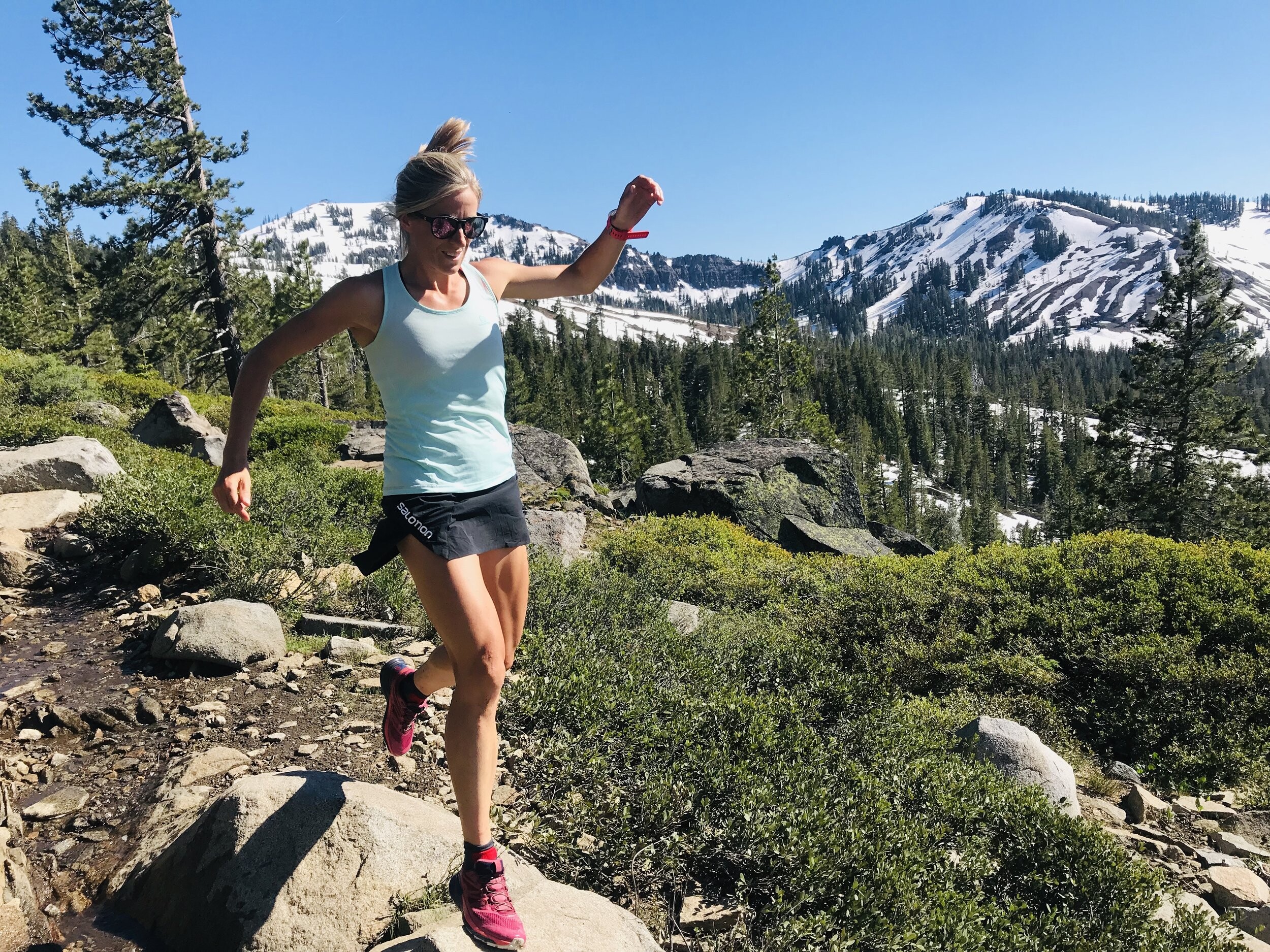
Ann Trason holds the record for the most victories at Western States, securing 14 wins from 1989 to 2003. Scott Jurek dominated the men’s competition with seven consecutive victories from 1999 to 2005. In 2021, Beth Pascall of the UK won the women’s race, recording the second-fastest time in the history of women’s 100-mile races with a finish of 17:10:42.
The Course: A Test of Will and Stamina
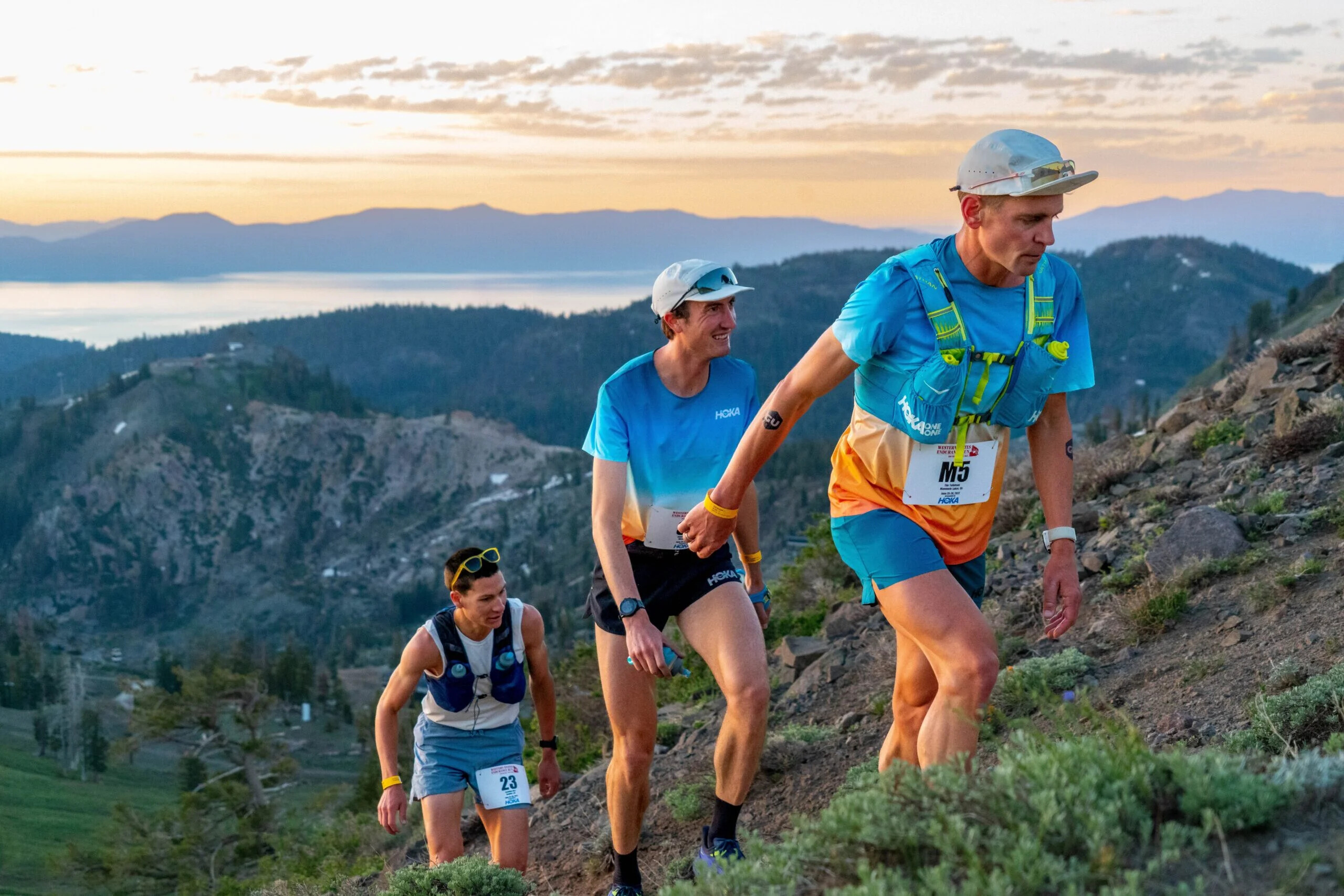
The Western States Trail stretches from Olympic Valley to Auburn, California. Runners start at 5 a.m. on Saturday and must reach the finish line by 10:59:59 a.m. on Sunday to be eligible for an award. The race begins with a steep 777-meter ascent to Emigrant Pass in the first 4.5 miles, then follows historic gold and silver mining trails, climbing an additional 4,700 meters and descending 7,000 meters to Auburn.
The trail cuts through rugged, remote terrain, accessible only by foot, horse, or helicopter. With temperatures reaching up to 35°C, the race tests runners’ resilience in extreme conditions. Despite the challenges, support is robust, with a volunteer-to-runner ratio of 4:1 and 20 aid stations, including 10 medical checkpoints.
The Coveted Buckle
Finishers of the Western States 100 are awarded a buckle, a nod to the race’s roots in endurance horse racing. A silver buckle is given to those who finish under 24 hours, and a bronze buckle to those finishing within 30 hours.
Securing a spot in the Western States 100 is highly competitive, with only 369 entries available each year. Runners must qualify through designated races and enter a ballot. Automatic entries are granted to the top 10 finishers from the previous year and top performers in Golden Ticket Races such as the Black Canyon 100K. Additionally, the race offers a pregnancy deferral policy, allowing expectant participants to defer their entry without a time limit.
Preparing for the Race
Runners typically arrive in Olympic Valley early in the week, with pre-race activities including a shakeout run on Thursday and a mandatory briefing on Friday. The nearest airports are in Reno, Sacramento, and San Francisco. Accommodations are available in Olympic Valley, home to the Palisades Tahoe ski resort, and in nearby Truckee and Tahoe City. Although the start and finish locations differ, transportation options are plentiful, with rideshares and shuttles available.
The Western States 100 is more than just a race; it is a journey of perseverance and grit. Finishing the 100-mile course within the 30-hour limit is a badge of honor, joining the ranks of those who have conquered one of the toughest ultramarathons in the world.
(05/22/2024) ⚡AMPby Runner´s Tribe
Western States 100
The Western States ® 100-Mile Endurance Run is the world’s oldest and most prestigious 100-mile trail race. Starting in Squaw Valley, California near the site of the 1960 Winter Olympics and ending 100.2 miles later in Auburn, California, Western States, in the decades since its inception in 1974, has come to represent one of the ultimate endurance tests in the...
more...Muneria shelves marathon plans to focus on Olympic qualification in 10,000m
Malaga Marathon champion Charles Muneria has put his race plans on hold as he sets his sights on meeting the Olympic qualification mark in the men’s 10,000m.
The 28-year-old emphasized his goal to qualify for the Olympics and represent Kenya for the second time in the prestigious event.
"I've canceled all my upcoming marathons to focus solely on making the Olympics 10,000m team," Muneria confirmed.
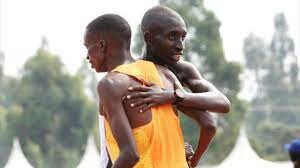
He made his first Olympic appearance during the 2016 Rio Olympics in the 5,000m, where he finished in position 12 clocking 13:30.95.
With the Olympic mark in the men’s 10,000m set at 27:00.00, Muneria states that he hasn’t been able to meet the mark as he had switched to the full marathon.
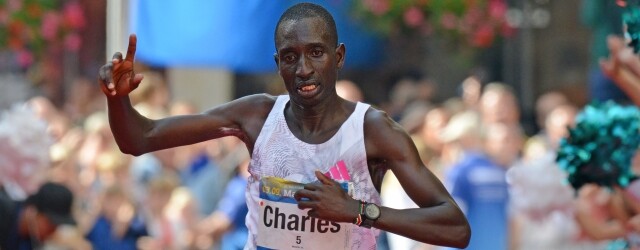
“I have not met the Olympic mark yet because I was concentrating on the road races. I didn’t have the time to participate in events that would enable me to qualify for the 10,000m,” he stated.
Muneria has a few marathon titles under his belt including the 2023 Munster Marathon, where he clocked 2:09:07 to secure the crown. In 2022, he clocked 1:00:28 to seal the Zwolle Half Marathon title in the Netherlands.
Athletics Kenya (AK) announced last week that the Olympic Trials from the 10,000m races (both men and women) will take place on May 25 during the Prefontaine Classic in Eugene, Oregon.
Muneria said he was cautious of the strong field in the men’s race but was confident in his experience and ability to pull off a win.
"I'm aware of the strong field in the men’s race, but I'm confident in my experience and ability to win," Muneria expressed.
Muneria said he is keen to improve on his speed.
"I'm reducing my long runs to work on my speed, which is crucial for the 10,000m. I already have endurance," he said.
Last weekend, Muneria clocked 28:50.9 to clinch the title at the Kenya Prisons track and field championships at the Ulinzi sports complex. Alsaya Lawi (28:52.4) and Peter Emase (29:32.1) sealed the podium.
Muneria mentioned that the win will be a motivation booster as he gears up for the trials.
"With my mind fully focused on making the team for Paris, winning the Prisons title is a motivation booster. It shows I have what it takes to meet the qualifying time," Muneria declared.
(05/22/2024) ⚡AMPby Teddy Mulei
Paris 2024 Olympic Games
For this historic event, the City of Light is thinking big! Visitors will be able to watch events at top sporting venues in Paris and the Paris region, as well as at emblematic monuments in the capital visited by several millions of tourists each year. The promise of exceptional moments to experience in an exceptional setting! A great way to...
more...Anyango confident of making the cut in women's 10,000m in Oregon
Valencia 10km Road Race silver medalist Immaculate Anyango is setting her sights on securing a spot in the women’s 10,000m team for a maiden appearance at the Paris Olympic Games.
With the Kenyan 10,000m teams (men and women) selection scheduled for May 25 in Oregon, USA, during the Prefontaine Classic Diamond League, Anyango is eager to showcase her prowess.
"I'll be heading to the Olympics Trials this week in Oregon. My goal is crystal clear: earn my place to represent Kenya in Paris," Anyango declared.

The Olympic qualifying mark for the women’s 10,000m is 30:40.00 whereas Anyango boasts a personal best (PB) of 32:51.58 set at the Fernanda Ribeiro Gala in Maia, Portugal.
Anyango is confident in her ability to meet the Olympic standard in Oregon. She said her mission now is to realise her dream of competing at the global extravaganza.
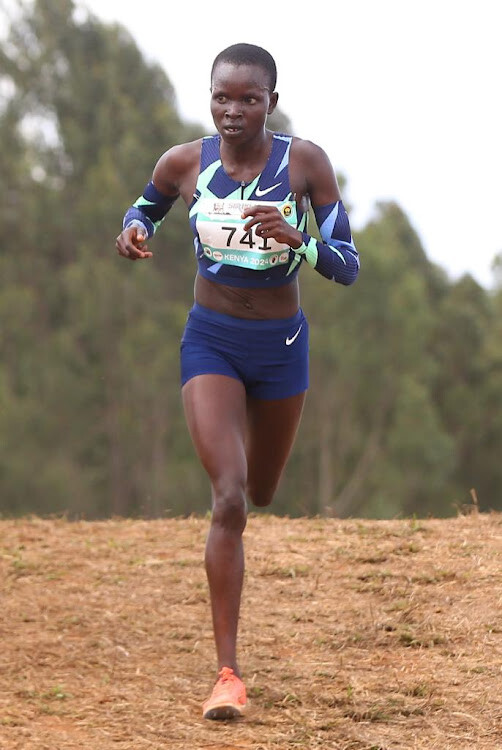
"Making it to the Olympics is my ultimate goal. While the challenge of hitting the mark is real, my determination will drive me to succeed," she emphasised.
Acknowledging the tough competition in the women’s 10,000m field, Anyango remains cautious, admitting that, "The competition among female athletes in the 10,000m will be tough. It's going to be a demanding race."
However, she believes her meticulous preparations and participation in key races this year will give her an edge in the USA.
“My preparations are going on well. I have taken part in a couple of races this year and they have been crucial as far as my endurance and speed work are concerned,” she stated.
Anyango kicked off the year with a strong performance in January at the Valencia 10km Road Race, clocking 28:57 to secure the runner-up spot. Agnes Ngetich clocked 28:46 to obliterate the women’s 10km record.
She later went on to clinch the title at the Sirikwa Classic cross-country tour clocking 32:55.
Anyango also made the Kenya team to the World Cross Country Championships in Belgrade, Serbia in March but finished outside the podium in position four (31:24).
The results, however, did not dampen her spirits as she went on to clinch silver at the Boston 5km Road Race in April clocking 14:59 behind Ethiopia’s Fotyen Tesfay (14:45).
She also won another silver medal the same month in the Bengaluru, India 10km Road Race clocking 31:16 behind Lilian Kasait (30:56).
Recognised for her achievements, Anyango was awarded the LG/SJAK Personality of the Month for February after her victory at the Sirikwa Classic.
She sees this accolade as a significant motivation as she prepares for the Olympic Trials in Oregon, stating, "The award will fuel my motivation as I gear up for the Olympic trials."
(05/21/2024) ⚡AMPby Teddy Mulei
Prefontaine Classic
The Pre Classic, part of the Diamond League series of international meets featuring Olympic-level athletes, is scheduled to be held at the new Hayward Field in Eugene. The Prefontaine Classicis the longest-running outdoor invitational track & field meet in America and is part of the elite Wanda Diamond League of meets held worldwide annually. The Pre Classic’s results score has...
more...Why Lokedi is the next big thing in marathon running
The 2022 New York City Marathon champion Sharon Lokedi has every reason to stroll the streets with her chin up.
Lokedi, 30, is among the celebrated Kenyan athletes selected by Athletics Kenya for this year's Olympic Games in Paris, France.
She was named as a reserve athlete in the stellar roster of four female Kenyan marathoners tasked with flying the nation's flag in the French capital.
Lokedi was named alongside Tokyo 2020 Olympics marathon champion Peres Jepchirchir, two-time Boston Marathon champion Hellen Obiri and Olympic silver medalist Brigid Kosgei.
The older daughter of Jonathan and Rose Lokedi, Sharon has three younger siblings Ceddellah Chelimo, Lince Cheptoo and Mercy Chemutai.
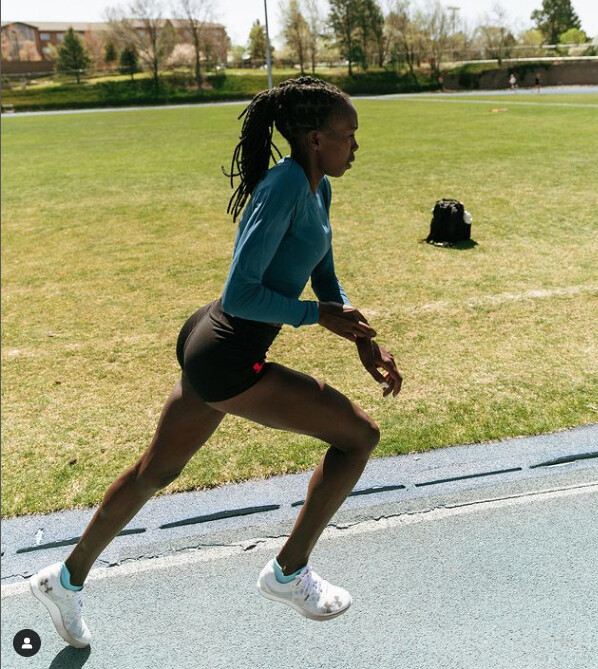
Born on March 10, 1994, Lokedi began to hone her skills at Kapkenda Girls’ School, where she set records in the 3000m and 5000m races yet to be broken to date.
So good was she that in 2013, she scooped the school's Athlete of the Year gong.
Upon completing high school, she was recruited to the University of Kansas (KU), where she studied nursing and business.
She began competing first in collegiate track and cross country in 2015. Lokedi's desire to travel overseas for college began in high school.
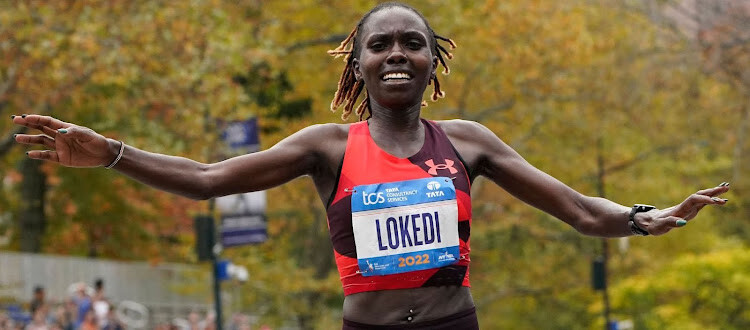
It took her some time to think about it, deciding whether to stay in Kenya with her family or travel to the so-called land of milk and honey.
"I was encouraged to try it by a friend of mine who had applied to study in the United States," Lokedi said.
"When I saw images of people in America, I knew it was my dream and was determined to go there," she added.
Meanwhile, Lokedi was unsure if she wanted to continue with athletics and even at some point considered dumping the sport to concentrate on her studies.
However, the passion she had already developed for athletics drove her back to the sport. She began attending training with sights firmly set on a collegiate athletic career in the USA.
"Running is ingrained in you when you're accustomed to it, so you want to keep doing it," Lokedi stated.
"I was disappointed that I wasn't running and I knew I needed to return to my favourite activity.
"With her mind already set on pursuing an education abroad, Lokedi rummaged through online platforms to identify an appropriate institution online.
"I was unsure about the precise institution I should join. I would go online, go through images and try to get a sense of the various academic offerings and running programmes that each school had to offer. Ultimately, there was simply something peculiar about Kansas. She would exchange emails and make multiple phone conversations with the coaches."
She added: "The instructors were pleasant. They would inquire about my training regimen and follow up with me to see how I was doing. It was obvious that you could relate to these people on a deep level.
"In the meanwhile, her friends alerted her to Kansas' chilly weather. "People would occasionally comment on how chilly the US was, but I had already made up my mind. I had never seen snow before since Kenya doesn't have a winter. It was January and chilly when I arrived."
She needed some time to get used to the Midwest's erratic weather.
"One day, it was so sunny outside that I forgot to put on my gloves when we went to practice in the morning. But I was unable to use my hands at all once I stopped jogging. I attempted to reheat them but was unsuccessful. I broke down in tears and felt like travelling back home. I eventually got used to it," she said.
Her trip to Kansas was fraught with difficulties. She flew from Nairobi to Chicago hoping to catch a flight to Kansas City only to arrive when the plane had already left and was forced to spend the night in the airport.
"I had nothing at all, not even a phone. All night long, I sat there in the airport. I didn't even know what time it was, so I couldn't sleep. I merely stayed there and waited as soon as I arrived at my gate. I was unable to make a phone call to my parents or even get a snack.
"I had money, but I had no idea how to pay for it because I didn't understand how the US dollar operated. A further reason I didn't want to go anywhere was my fear of getting lost. I simply waited there until around eight in the morning, when my jet was scheduled to take off. It was horrible."
Eventually, she was received by KU assistant coach Michael Whittlesey. "Since I didn't have a phone, I was concerned that when I arrived, no one would be there to greet me," Lokedi said.
However, he was waiting for me when I arrived at the airport, and we then took a car to Lawrence.
Another issue she had to cope with was getting used to the food in her new nation.
"When I first came here, I didn't know what anything was, so I couldn't eat," she remarked.
"I used to go to the cafeteria and just gaze around. Everything appeared so different, and I was at a loss for what to do.
"With the assistance of her teammates and coaches, Lokedi took small steps toward acclimatising to her new environment. Thankfully, senior cross-country runner Daniel Koech, a fellow Kenyan, was there to provide her with the assistance she needed.
“Daniel did a lot for me. He was the one who helped me get a phone, or sometimes I would use his phone to call because he already knew how to dial home. He helped me get used to things here and he would also translate.
"It was challenging because my limited command of English made it difficult for me to communicate. While we did study English in high school, we didn't use it very often.
"Sometimes I would hear someone say something and then I would go ask him what they said. He was really pleasant and a great assistant. After class, we continued speaking in our mother tongue."
After enduring a comparable shift, Koech was determined to ensure that Lokedi wouldn't have to confront any obstacles on his own.
Lokedi acknowledges her teammates for encouraging her to realise her greatest potential as well. She has reached unprecedented heights, thanks to her unwavering energy.
Lokedi is on the market for more awards, even though she has plenty of them already to adorn her trophy cabinet.
"Those are the things that inspire me. When I practice every day, I consider what I want to achieve. I have a goal to accomplish. I want to perform better than I did previously."
She wants to improve other people's lives with her university education to uplift her community.
"Even though I am from a small, impoverished town, I am sure if I go back there with my community health major, I will work to make things better and assist people.
"I can educate them on topics such as their health and other unfamiliar yet important information."
She reckons that her accomplishment will inspire budding athletes to pursue their dreams in life.
“It’s been so fun in the US and I enjoy every bit of it. I have three younger sisters in high school and it’s something I want to motivate other people to do. "I've had a great time in the US and I love every aspect of it.
" I wish to inspire others to follow in the footsteps of my three younger sisters who are currently enrolled in high school.
A third-place showing at the NCAA Midwest Regional and a 10th-place showing at the NCAA Championships highlighted her stellar freshman career, which also set a record for the highest individual finish by a KU female in the national championship meet.
She emerged as KU's lead female runner in all nine meets of her collegiate career where she placed in the top 10 in eight of the nine competitions.
"I won the 10,000m at the 2018 NCAA Division I Outdoor Track and Field Championships."
Lokedi has been a 10-time All-American & 12-time Big 12 champion, as of March 2019.
(05/21/2024) ⚡AMPby Athletics
Nike responds to controversial Paris Olympics kits for Team Kenya and USA
The brains behind the Paris 2024 Olympics Nike kits have explained the reasons behind the designs that generated mixed reactions from Kenyans and Americans.
The Paris 2024 Olympic Nike kits for team Kenya and USA elicited mixed reactions from fans who were worried about the color and too much exposure among other aspects.
Nike unveiled the kits during the "On Air" event where world 100m champion Sha'Carri Richardson, two-time Olympic champion Eliud Kipchoge, double world record holder Faith Kipyegon among other athletes were used as models.
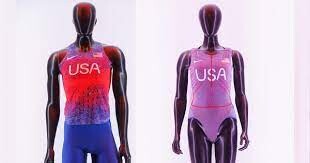
However, what people did not know is that Nike has been preparing for the Olympic Games for a few years (since before the pandemic). As reported by Fashionista, they were focusing on fine-tuning features like Dri-Fit and Air for even better performance, testing items over Zoom.
"You need diversity in your pool. You need a certain amount of playing hours, time and intensity in these projects, but you also need the voice of an everyday athlete," Kathy Gomez, Nike's vice president of footwear innovation told Fashionista.
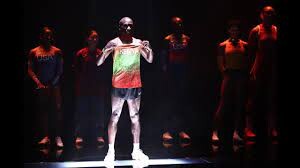
“Testing is a very intimate experience, getting to know them and understanding their data but also understanding them. We do everything to make the athlete feel like they're part of the process."
She added that Nike also uses stats from the sports research labs, taking results from a group of marathoners to optimize a digital prototype for running miles on end, before creating samples.
"Data is the new design. It allows us to amplify the benefits we deliver, whether it's compression or breathability or weight," Vice President of Apparel Innovation Janett Nichol said.
“To make a garment, we don't have to cut it into several pieces and then put all those elements together. We're able to put data through a digital computational system, and everything comes out."
Speaking about basketball, Gomez added: “If you think about efficiency in basketball, it's about holding your foot in. Containment in all directions plus comfort are two things that can be opposing.
"Being able to get containment that locks you in but doesn't feel like it's too tight comes from obsessing over the details.”
Nike’s Olympics preparation is mainly focused on refinement, and some sports have offered more room for experimentation.
Meanwhile, Nike did get some backlash after "On Air” with critics sharing their opinion. In response to the former, a Nike spokesperson said there are almost 50 unique competition styles to choose from, meaning athletes won't have to compete in the skimpiest clothing if they don't want to.
"For a sport like track and field, a sprinter may have very different needs than a javelin thrower, so our collection includes a dozen competition styles fine-tuned for specific events to ensure athletes can choose outfits that match their style and personal preference without sacrificing comfort," he said.
“We also have a range of bottoms for athletes to choose from offering full to less coverage. Ultimately, the best kits ensure that athletes can perform at their best without being distracted by their apparel, helping them stay focused on the world stage."
(05/21/2024) ⚡AMPby Abigael Wuafula
Paris 2024 Olympic Games
For this historic event, the City of Light is thinking big! Visitors will be able to watch events at top sporting venues in Paris and the Paris region, as well as at emblematic monuments in the capital visited by several millions of tourists each year. The promise of exceptional moments to experience in an exceptional setting! A great way to...
more...Sub-4-minute milers live longer, new research shows
Breaking the 4-minute mile barrier is a testament to natural speed and hard work, but could it also predict longevity? Researchers recently tracked the first 200 athletes to break the four-minute mile mark between 1954 and 1974, and discovered a striking trend in terms of the health and longevity of the athletes.
Elite athletes are known to have bigger hearts due to sustained aerobic output, and in the past, some research has indicated the belief that this could negatively impact their health and longevity. This study demonstrated the opposite. The study was released to mark the 70th anniversary of Sir Roger Bannister‘s sub-four-minute mile and revealed that the elite runners outlived the general population by an impressive margin.
On May 6, 1954, Bannister successfully broke the four-minute barrier at Oxford’s Iffley Road track, clocking 3:59.4. Until then, the four-minute mile was considered by many to be impossible. Some runners had come close, but the fastest among them could only muster 4:01. Bannister ushered in a new era of runners with his record-breaking time, and as of 2022, the four-minute barrier had been broken by more than 1,750 athletes.
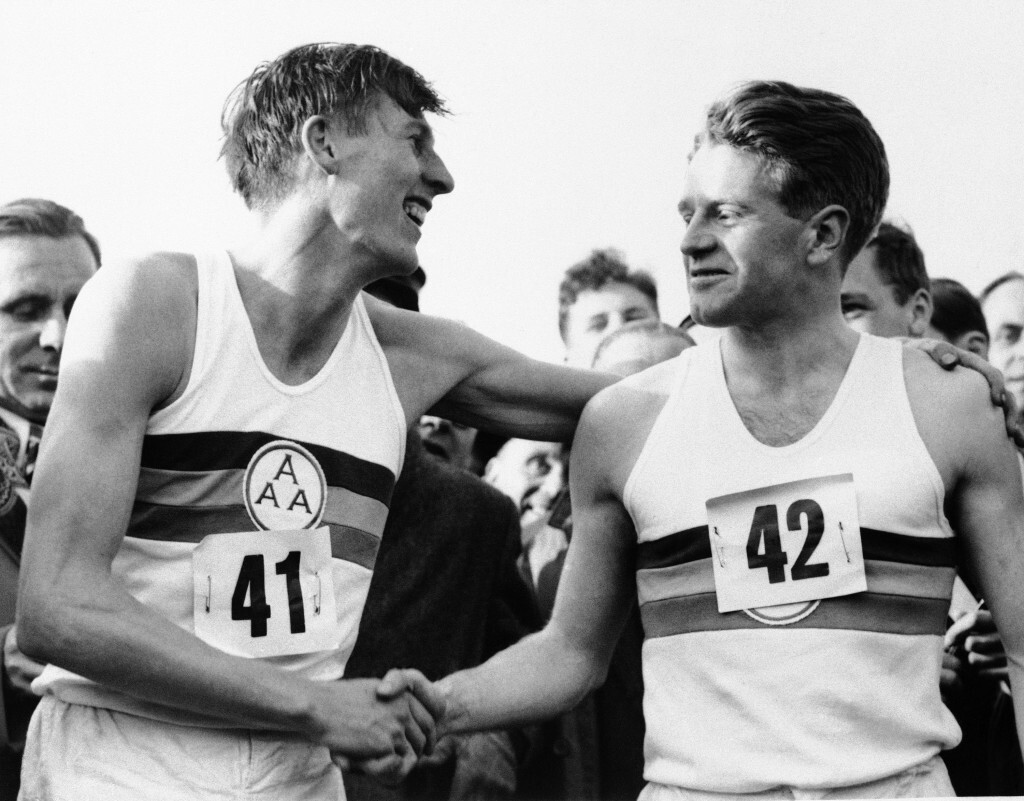
A team led by scientists from Victor Chang Cardiac Research Institute in Australia who partnered with Canadian researchers gained access to the health records of the first 200 people on record who ran sub-four-minute miles. The list of speedsters included athletes from the U.K., Australia, France, New Zealand and the U.S. The runners (all male) were all born between 1928 and 1955, and most were still alive. These top-tier athletes outlived the general population by an impressive margin.
“Breaking the four-minute mile was an extraordinary achievement 70 years ago and revealed just what the human body can achieve,” said Professor Mark Haykowsky, Research Chair in Aging and Quality of Life in the University of Alberta’s faculty of nursing. “It set off a wave of runners following in Sir Roger’s mighty footsteps.
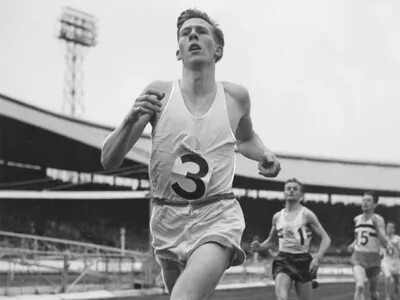
“Remarkably, we found that, like Sir Roger, who lived to the ripe old age of 88, most of the first runners also lived well into their 70s, 80s and a majority are alive and healthy today.”
On average, the runners enjoyed nearly five additional years of life over the general population. The researchers also found intriguing patterns across different decades. Athletes who achieved this milestone in the 1950s surpassed their peers by a staggering nine years, on average, while those from the 1970s still boasted an extra five and a half years of life.
With an average age of 77 among the surviving athletes, these findings challenge conventional notions of aging and highlight the remarkable impact rigorous physical training has on longevity.
(05/21/2024) ⚡AMPby Keeley Milne
Moroccan star Soufiane El Bakkali out to deny Kenyans steeplechase title at Paris 2024 Olympics
Serial steeplechaser Soufiane El Bakkali is looking to make it difficult for Team Kenya to reclaim the steeplechase title at this year's Olympic Games in Paris, France.
Reigning Olympic champion Soufiane El Bakkali is out to ensure that Kenyans have a hard time reclaiming the steeplechase title following his recent declaration.
Kenya have been dominant in the steeplechase for years, and since they took the title during the 1984 Los Angeles Olympic Games, they managed to keep the title until the Moroccan took it during the delayed 2020 Tokyo Olympic Games.
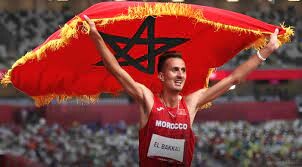
He took the title from Conseslus Kipruto who had won it during the 2016 Rio Olympic Games and the Kenyan charge will be hoping to reclaim the title when they go for the Paris 2024 Olympic Games.
However, El Bakkali, the reigning world champion, has been a nightmare to the Kenyans and does not look at stopping the tormenting anytime soon.
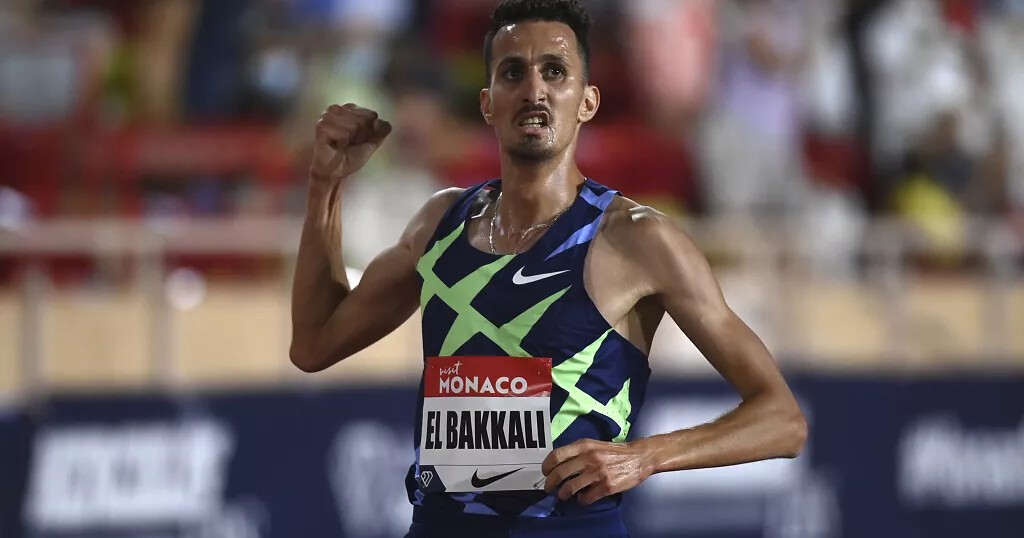
After his triumph at the Diamond League Meeting in Rabat, the Moroccan superstar declared war on Kenyans, noting that he is going to train hard and reclaim his title at the Olympics.
“I'm so happy for winning in front of my supporters as winning at home has always a different taste. I would like to thank my parents, my coach, and the Moroccan federation for their support throughout the moment of my injury. I will start my preparation for the Olympic games where my goal is to keep my title,” Bakkali said after the race.
The serial steeplechaser noted that he had suffered an injury setback at the start of the season that prevented him from competing many events but he was glad to have won the race upon his return.
“As I stated yesterday in the press conference, I suffered from an injury which stopped me from participating in many events.
“This year is very important for me but the injury came at a very bad time. I was hesitating to participate today but I eventually decided with my coach to run,” he said.
(05/20/2024) ⚡AMPby Abigael Wuafula
Paris 2024 Olympic Games
For this historic event, the City of Light is thinking big! Visitors will be able to watch events at top sporting venues in Paris and the Paris region, as well as at emblematic monuments in the capital visited by several millions of tourists each year. The promise of exceptional moments to experience in an exceptional setting! A great way to...
more...How running cured my anxiety
We know running is good for our physical health and mental health. For a long time, I never knew I had it–I thought it was normal to be in a constant state of panic. But when I started running and my mind stopped racing, everything changed.
When I was seven, I ran my first Terry Fox race. As I walked home, proudly showing off a scrape/battle scar on my knee to my parents, I noticed I wasn’t anxious. What is this foreign yet pleasant feeling, I remember wondering. My parents saw it, too. Before I knew it, I was running cross-country. But what started as a calming activity quickly became life-consuming, and a chore. So, at 16, I decided to take a hiatus. And my anxiety came roaring back.
Where does my anxiety come from? I’ve narrowed it down to a few things: first, bad genes. Second, society (which is more complicated for girls then Greta Gerwig’s Barbie makes it out to be). Third, myself? That’s the one I’m still figuring out.
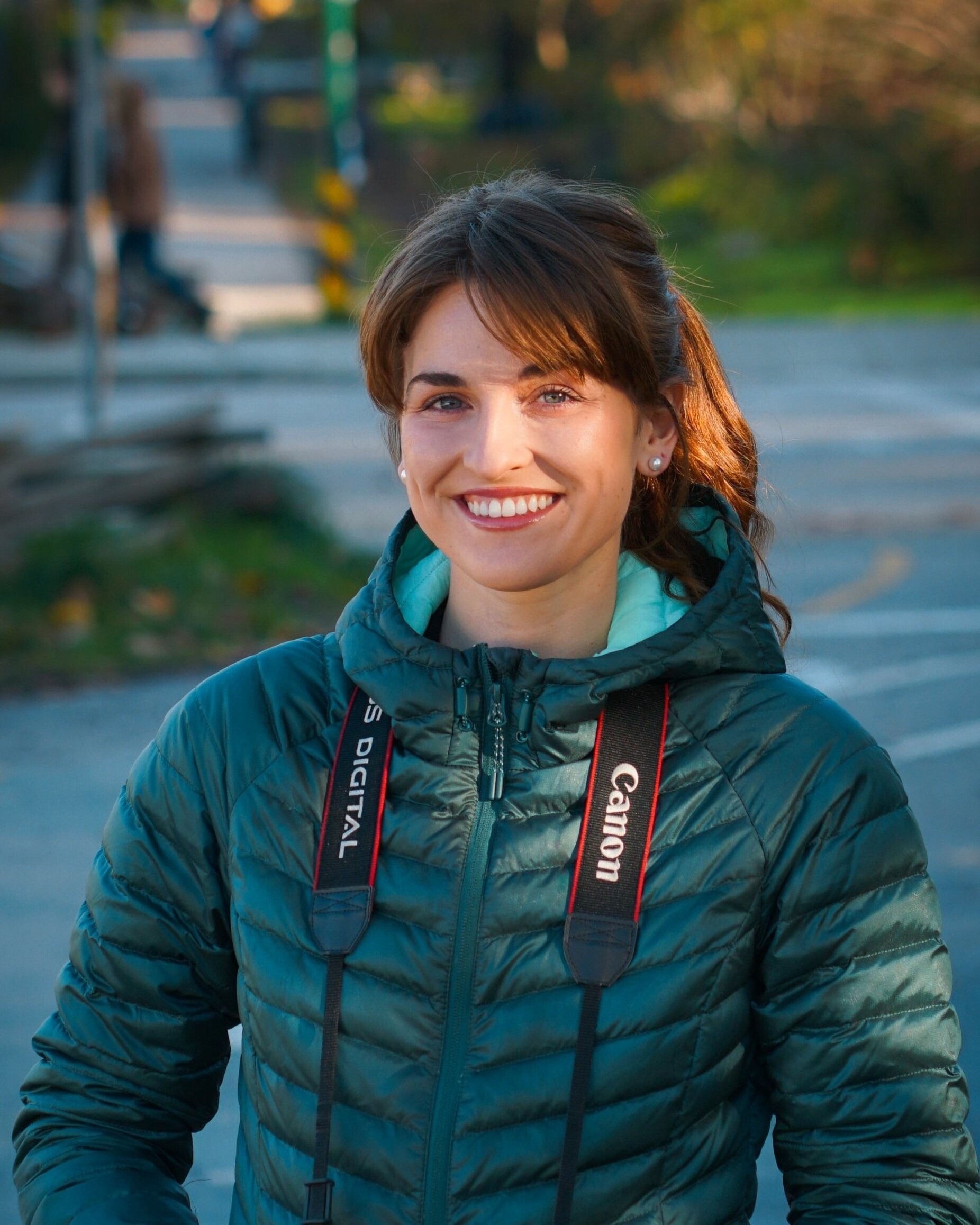
Venting about being afraid of your own shadow wasn’t the best icebreaker in kindergarten. So, I learned from an early age to tuck my anxiety into bed with me at night and sleep it off. No matter what I did to avoid it, I always got sucked back into the rabbit hole (I was like Alice, but paler).
When I stopped running, at 16, I didn’t realize I was struggling with generalized anxiety disorder; I would be diagnosed at 21. As I grew bigger, so did my anxiety. Entering university, starting new jobs, dating—these real anxieties all seemed trivial, compared to the worries mounting in my mind.

(To be clear, this is not a sad story, but one that I hope will inspire others to embrace running.)
One day, I’d had enough. For the first time in a long time, I stepped into my running shoes and raced out the door toward a nearby park. I didn’t have a plan, but I knew I needed to move my body. With every stride, my worries grew smaller. My breath and the gravel path in front of me fell into focus. Everything I had been stressed about flew away with the wind. I felt myself smiling, and this time, it wasn’t forced. I had regained control of my anxiety. I felt like the strong woman my anxiety had made me believe I could never be.
When we exercise, we release endorphins in the brain, elevating our mood and reducing anxiety. Research has increasingly shown that adults who engage in regular physical activity experience fewer anxiety symptoms.
With every morning jog, loop around a track and half-marathon build, my anxiety grew smaller, until, one day, it was nowhere to be found. Today, I run not just for my mental health, but for the girl who used to fear this big world we live in, where a future felt uncertain and peace of mind hung so far out of reach. Running helped that seven-year-old, that 16-year-old and that 21-year-old feel in control of their anxiety disorder and truly learn how to live.
(05/20/2024) ⚡AMPby Katrianna Desante
Kenyan runner Judy Jelagat Kemboi set a new course record for the women’s half marathon at the Riga Marathon
On Sunday, May 19th, Kenyan runner Judy Jelagat Kemboi set a new course record for the women’s half marathon at the Rimi Riga Marathon, finishing in one hour, seven minutes, and 13 seconds (1:07:13). Kemboi improved the previous record set last year by her compatriot, Olympic marathon champion Peres Jepchirchir, by 12 seconds (1:07:25).
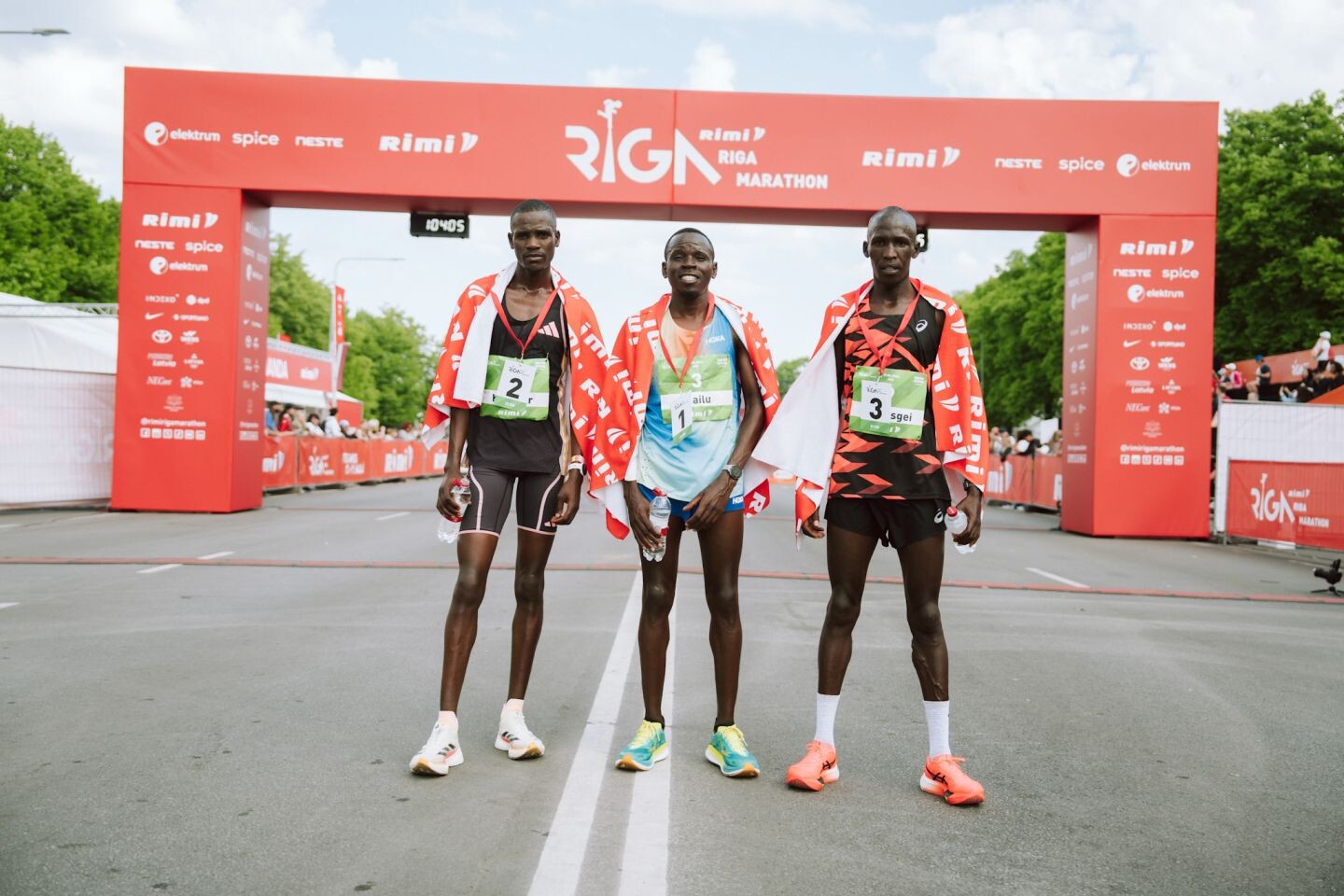
With her victory in Riga, Kemboi confirmed her status as the pre-race favorite, having the best personal record among the participants. Kemboi’s result in Riga is the 26th best in the world for 2024.
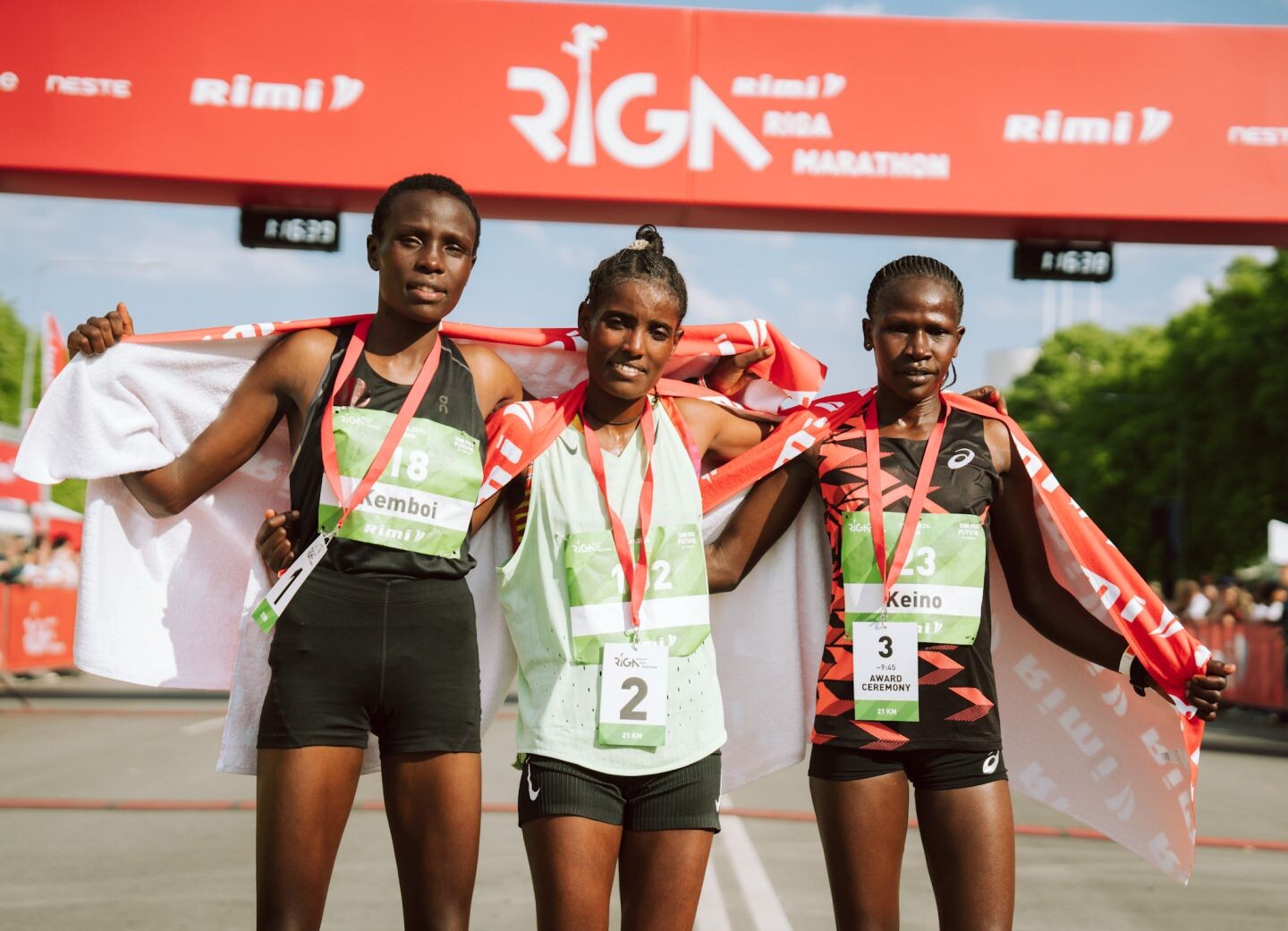
Ethiopian Dibabe Beyene Debela finished second with a time of 1:09:53, while Kenyan Agnes Keino claimed the bronze medal, finishing in 1:10:33.
In the men’s competition, Kenyan Samwel Nyamai Mailu took first place, finishing in one hour and 21 seconds (1:00:21). Mailu, who won a bronze medal at the World Athletics Road Running Championships in Riga last year, achieved the 39th-best result in the world this year for the half marathon distance.
He was followed by fellow Kenyan Collins Kipkurui Kipkorir, who finished in 1:00:47, while another Kenyan, Titus Kimutai Kipkosgei, took third place with a time of 1:01:57.
(05/20/2024) ⚡AMPLattelecom Riga Marathon
If you have never been to Riga then, running a marathon or half-marathon could be a good reason to visit one of the most beautiful cities on the Baltic Sea coast. Marathon running has a long history in Riga City and after 27 years it has grown to welcome 33,000 runners from 70 countries offering five race courses and...
more...Cleveland Marathon: Will Loevner defends men's title, proposes to girlfriend after win
Will Loevner has captured his second Cleveland Marathon, and it was a special one.
Loevner won in 2 hours, 19 minutes and 44 seconds. The Pittsburgh man, who won last year in his first time competing, celebrated by proposing to his girlfriend in front of the crowd.
With his win, he qualifies for the coveted Boston Marathon.
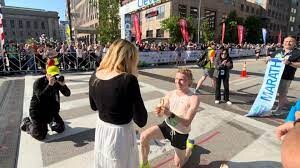
The 47th annual marathon, which brings in hundreds of runners from all over the country and the world, took place this weekend in downtown Cleveland in warm and sunny weather. Hundreds of supporters cheered as runners crossed the finish line by Mall B.
In addition to the marathon, there were a half marathon, 10K and 5K races.
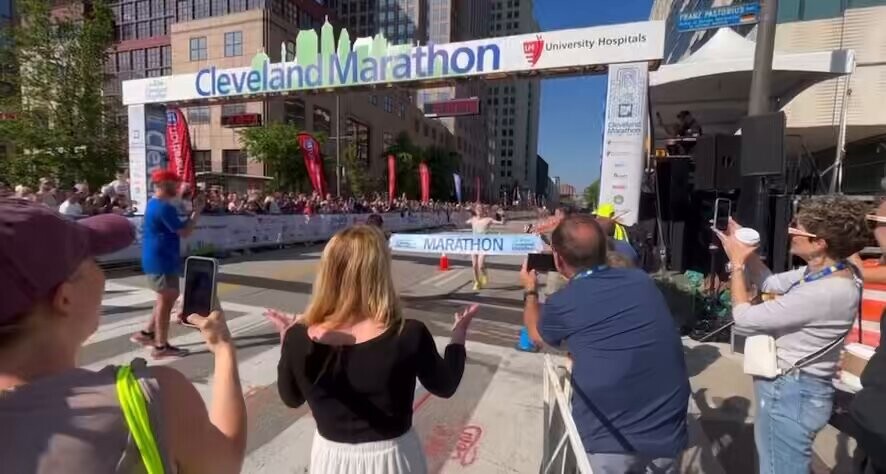
For Julianne Hill of Middleburg Heights, who ran in her fourth 5k during the Cleveland Marathon weekend, but her 92nd race over all. She said it felt “amazing to cross the finish line.”
“I’m tearing up,” she added. “It’s amazing every time. There’s people all over the route. No matter where you are, they’re cheering, they have signs. It’s just the best, I love it.”
Hill said after 12 years, this would be her last year competing.
“I’m going to run 100 races and I’m done,” she said. “I’m almost there.”
This was the first marathon for Veronica Wulw for Broadview Heights, who competed in the half marathon.
“For my 26th birthday, I decided to challenge myself to run a marathon for the first time,” she said.
“Going from from running on your own with no one else around you to being able to cross that finish line with other runners - it’s awesome to see everyone have the same passion and being one unit,” she said.
She added she hoped to return next year and compete in the marathon.
(05/20/2024) ⚡AMPby Megan Sims
Cleveland Marathon
The Cleveland Marathon features a relatively flat and fast course, great volunteer support and a scenic view of downtown Cleveland and its major landmarks. The course has been designed for our athletes to enjoy views of Browns Stadium, the Rock and Roll Hall of Fame, Lake Erie and many other Cleveland highlights. The Cleveland Marathon began in 1978 in an...
more...THE TRUTH ABOUT RUNNING AND WEIGHT LOSS
When approached realistically, running can be an excellent tool for weight loss and weight management, but don’t be fooled by the numerous myths surrounding them
People often start running to drop a few pounds. Hopefully, they fall in love with it, move beyond the number on the scale and continue running for its many other benefits; but for many people, it’s impossible to decouple running from the weight-loss goal. When done correctly, running can help people struggling with excess weight to shed pounds—and continuing to run can be effective way to keep them off. But the subject of running and weight loss is fraught with mythology. We delve into some of the problems with the weight-loss approach to running, including what actually works, what definitely doesn’t and how to keep running as part of your life, regardless of whether you lose weight.
Myth


You can run a marathon PB while dropping 10 pounds
You can do anything, but you can’t do everything. As a rule, you won’t boost performance at the same time that you’re purposely losing weight. Often, the opposite is true, says Kylee Van Horn, RD, owner of Flynutrition in Boulder, Colo. When you’re restricting your food intake, you’re unlikely to make performance gains, but unfortunately, we often equate being faster with being thinner.
“The first thing I tell a client with a weight-loss goal is that losing weight will not necessarily make you a faster runner,” adds Carla Rodriguez Dimitrescu, PhD, an Edmonton-based expert in nutrition and metabolism who works primarily as a running coach. It’s fine if weight loss is your goal—but don’t confuse it with performance, because the way that you’ll get faster isn’t necessarily the way that you’ll drop a pound a week (which should be the maximum weight you’re losing per week, unless advised otherwise by your doctor).
Myth
There is one “runner’s body”
Let’s be clear: there is no single body type that signifies “runner.” Often, people with weight-loss goals who run have a vision in their minds of the long, lanky phenotype often associated with marathoners. But runners come in all shapes and sizes—and if you run, you have a runner’s body, period.
Even in the professional sphere, there are different body types that excel at different types of running. “You would never tell a professional runner that he doesn’t look like an astrophysicist,” says Dimitrescu. “But for some reason, that astrophysicist is upset that he doesn’t look like a runner.” She adds that people have different somatotypes, which means that genetics and environment will both play a role in how running (or dieting, or strength training) changes your body. And if you really want to see how every body is a runner’s body, sign up for a local 5K race and look around you at the start.
Still, the “runner’s body” myth runs deep, and it can be hard to break free of the desire to be ultra-thin. That’s why Stevie Lyn Smith, RD, a board-certified sports dietitian based in Buffalo, N.Y., tries to focus her clients on health outcomes as well as esthetic goals. “We try to look at other goals, like running your personal best in a race,” she says. “Maybe you won’t achieve whatever physique is jammed in your mind as the ‘ideal,’ but you’re able to appreciate these non-body-focused victories.”
Myth
Lighter is healthier/faster
Here’s an oversimplified example: say you’ve had the stomach flu for a week. You’ve lost seven pounds during that time, thanks to days spent in agony. You head out for your first run since you got sick. How does it go? That’s right—dropping weight doesn’t always lead to speedy running, and while that’s an extreme example, it’s not much different from how you’d perform after a week of crash dieting.
“Slimmer is not necessarily better,” says Dimitrescu. “And too much weight loss or restriction can lead to issues like stress fractures, increased rates of illness and injury and chronic fatigue. That’s not going to make you healthier or faster.”
And unfortunately, Don Henley was right when he sang, ‘You can’t go back, you can never go back.’ If, at 46, you’re mourning your running prowess or body composition from when you were 17, you may need to come to terms with the fact that your body isn’t the same, and no amount of training or restricting will get you there. You need to find your new healthy, speedy body, says Van Horn.
Myth
Runners can lose weight faster by eliminating carbs
Skip any diet that eliminates entire macronutrient groups, says Dimitrescu. These fad diets come and go, and for someone who wants to be a healthy, optimized runner, they’re just not worth it. “I don’t like any restrictive diet that advocates for super low calories or eliminates a macronutrient,” she says.
“My priority is always that clients get plenty of protein—at least one gram per kilogram of body weight—and adequate carbohydrates. People have a fear of carbohydrates, but if you don’t eat enough carbs, you’re going to use the protein as your source of energy instead of using it to help build and repair muscle. You’re not doing any favours to your body if you don’t provide it with the energy it needs to do the work that you’re asking it to do.”
Myth
Running earns you calories
A common saying about running is that you run to eat. But really, you should be eating to run. “Don’t create a reward/punishment mentality around running and food,” says registered dietitian and runner Lindsey Elizabeth Cortes of San Antonio, Texas. “Try to focus on how you fuel and how you train as lifestyle choices and not things that need to be rewarded or punished.”
For example: it’s not, “I had a great run, so now I get to reward myself with nachos,” nor is it “I had a bad run, so now I can only eat a salad.” Instead, reframe to: “I ran, and now I’m craving nachos! Maybe I’ll have nachos with a salad.” Or, “I didn’t run, and I’m craving nachos. Maybe I’ll have nachos with a salad.”
Myth
Fasted running and intermittent fasting will speed up weight loss
Yes, fasted runs and intermittent fasting may potentially have some longevity and fitness-based benefits, but when it comes to weight loss, they’re not going to move the needle. In fact, they might be sabotaging your efforts. “For most people, things like fasted runs and intermittent fasting just equate to saving up their calories until the end of the day and then overdoing it in the evening, or using these so-called ‘healthy’ concepts to put a healthy spin on unhealthy, restrictive eating patterns,” says Van Horn. “But if you look into the research, there’s no benefit for doing fasted training for weight loss. In fact, we know that fasted running can raise cortisol levels, which can make weight loss harder.”
Intermittent fasting that takes place around your running window means that your runs aren’t being fuelled—which can both decrease your running performance and make it harder to lose weight, since you’re more likely to over-indulge later in the day. “At minimum, fuel around your workouts and during your training, so that you have enough calories on board to develop some adaptations and buffer the stress of the workout,” says Van Horn. She adds that if weight loss is the goal, you can reduce calories at meals that aren’t near your workout window. Calories should come out of meals that aren’t right before or after your runs. Lowering your portion of rice with dinner or cutting out dessert if you trained in the morning will give you greater results than skipping your post-run snack. (But keep your caloric deficit at a maximum of 500 calories per day.)
Things like fasting and fat adaptation (training your body to optimize fat over glycogen for fuel) may sound like they’re about weight loss, but the reality is that neither is likely to help you lose weight. Some research has found that when done under the right conditions, they might increase certain health markers or improve longevity, but they’re not the weight-shedding tools you may think they are.
Myth
The more you run, the more weight you lose
The natural inclination of someone who wants to lose weight by running is to run longer. Usually, the idea of training for a marathon or half-marathon gets floated around. But running shorter routes, with some harder efforts thrown in, will lead to better weight loss outcomes, because you’re able to get the benefits of the run cardio without as much stress on the body. And because the more you run, the more you need to fuel, chasing higher mileage is actually a bit of a fool’s errand, where weight loss is concerned.
“Endurance sport is not a weight management tool,” says Smith. “Volume-wise, if you’re running more than 10 hours a week while also working a normal job, spending time with family, dealing with all of those normal responsibilities, the long-term stress of that is not going to be conducive to weight loss. With a more appropriate training load for your current lifestyle, it’s easier for you to manage stress, and you’ll see better results.”
Myth
The number on the scale is the only number that matters
Rather than focusing on your weight in pounds, look at different metrics. “I like a combination of measurements with a soft tape measure, how a certain item of clothing fits, and scale weight done once a month,” says Van Horn. While body composition-measuring tools like a DEXA scan are often considered the gold standard, they are expensive and often difficult to access, so rather than spending time and money on that, focus instead on simple measurements that are replicable.
Daily weigh-ins are also a mistake, says Van Horn. Our bodies fluctuate from day to day, so scale weight on a daily basis can be disheartening. Instead, shift to weekly or monthly and look for a general trend rather than placing any importance on half a pound.
Finally, it’s not all about your body weight or size. Dimitrescu recommends looking at fitness and health markers, such as your resting heart rate, blood glucose levels, and HDL and LDL cholesterol. Often, these markers will improve quickly once you adopt a running habit and focus on healthy eating, and can help you see that even if the number on the scale isn’t changing, your body is.
In fact, research has shown that a focus on getting into the habit of running regularly actually is more effective for long term weight loss than focusing on the number on the scale—so it may be worth shifting your focus to the number of times per week you’re physically active, or minutes spent moving.
(05/19/2024) ⚡AMPChoosing Morning Runs Over Evening Drinks
Instead of temporarily drowning her anxiety in alcohol, this writer learned she can soothe it by running.
To keep the cold at bay one December night in 2022, my friend Justine and I got together for some mulled wine, a hot drink as delicious as it is sentimental to me, reminding me of holiday gatherings and Christmas markets back home in the Czech Republic. As the familiar sweet smell of star anise, cloves, cinnamon, and lemon filled my apartment, I declared out loud (more to myself than to Justine) that I had a 10-mile run on my training plan the next day, so I needed to take the night easy.

I was training for a 30K run on my 30th birthday, my longest distance to date, so I wanted to be rested and hydrated. Three cups of mulled wine later, I woke up from a short doze at 3 a.m. with a headache, just to helplessly stare at the ceiling until falling back asleep sometime in the early morning hours, swearing to myself I would never drink again. Tale as old as time.
I first came home drunk when I was 15. My parents didn’t notice. It was the year they were splitting. Their arguments were quiet, but the consequences spoke volumes. Money had become a point of contention at one point, and I was withdrawn from after-school activities, including basketball and the majority of my dance classes. I didn’t know what to do with myself. So when a clique I had been seeing around my hometown invited me to hang out with them, I was happy for some distraction from my newly gained free time as much as the silent war at home. They were the cool kids, which meant I was cool now, too! They drank cheap boxed wine any night—school or weekend—they could pull enough money together. They came from divorced or one-parent families. No one was waiting for them to come home either. I felt understood. And so when the boxed wine made its round to me, I took a swig, and then another one. I despised the taste, but that didn’t matter; I belonged.
Over time, boxed wine turned into bottles of cheap liquor. At 17, I looked to alcohol to help me tune out any negative feelings and thoughts, while also smoking my lungs away, often coming home just as the sun was making its way into the sky, unable to piece together the full night from the tidbits I remembered. By 20, I could outdrink almost everyone in the group.
At age 20 was also when I moved to the U.S. In a matter of a single flight over the Atlantic, I became underage again, entering a much stricter country that wouldn’t allow me to even go to a bar. And I had to quit smoking because the host family I moved in with wouldn’t tolerate it. With no substance to help me escape my racing mind, I had my first panic attack. One piece of advice I received was to try exercise. Willing to do anything that would help prevent another similar episode, I bought a pair of cheap workout shoes and a YMCA membership. I found my way to the treadmill because it seemed to me the least intimidating equipment at the gym. To my surprise, I enjoyed it.
But old habits are hard to shake, and I eventually turned 21. Although running was great, I felt no obligation to do it. So what if I skipped a day at the gym because of drinking the night away? I had fun, didn’t I? That’s what I told myself for the next nine years, while my hangovers grew progressively worse and I wasted weekends lying around, feeling sick.
So not being able to get out for a run on that sleep-deprived, heavy-headed morning after the mulled wine episode wasn’t that unusual. But this time, something shifted. Instead of my typical “so what” attitude, I grew mad. I had a goal to achieve, and therefore something needed to change. I decided to cut out alcohol for the remainder of my training. I promised myself I would celebrate with a Moscow Mule, my favorite cocktail, after I finished my birthday challenge.
I got through Christmas and New Year’s Eve sober—something that hadn’t happened since I was 14—and in January 2023 I ran my 30K. But when the time came to order that celebratory drink, I wasn’t in the mood. It was about a week later, when my legs recovered and I went out for an easy run, that I realized I was far more looking forward to putting in the morning miles than having a drink in the evening. So I decided to wait to drink until I truly felt like having one. Over a year later, that moment still hasn’t come.
Gradually, but surely, it has dawned on me that running helped me deal with my anxiety and stress in ways alcohol never truly did—that the benefits of running far outweigh whatever temporary numbness alcohol provided. I run a little faster on days my chest feels tight (and I entrust my invasive thoughts to my therapist instead of to alcohol).
This is not to bad-mouth booze and forget the fun times I surely had. I never planned to stop drinking completely, and somewhere down the line I might start over with alcohol in a healthier way. Who knows? For now, I’m much more excited about having a clear head, mornings with no hangover, and the miles I get to put in. For the first time in a long time, I can say I feel happy and in control of my life. Cheers to that!
(05/19/2024) ⚡AMPHow to Add Hills to Your Marathon Training
Everything to know about adding inclines to training, including how often to tackle them and the best strength moves for prepping your legs.
Running a marathon is a difficult feat in and of itself. Add in a hilly course—like you’ll find in the Big Sur, Boston, New York City, or San Francisco marathons, for example—and that adds a new level of challenging.
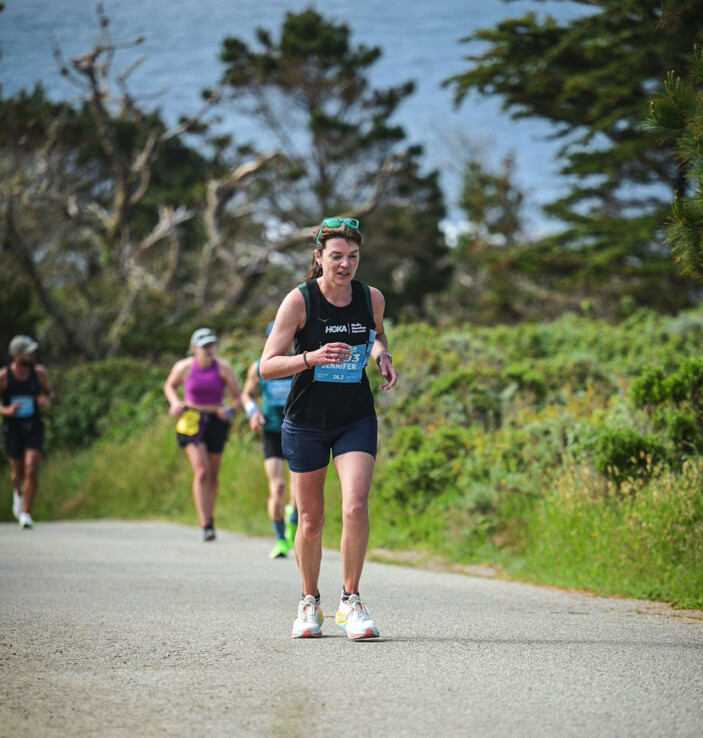
Having just run the Big Sur International Marathon, thanks to an invitation from the Hoka team last month, I learned the importance of incorporating hills into my marathon training cycle from Ben Rosario executive director of the HOKA Northern Arizona Elite in Flagstaff, Arizona, who was also my running coach.
In order to prepare for the demanding elevation changes of the course, I tackled hills every week of my training. Being that I live in Eastern Pennsylvania with many rolling hills, it wasn’t hard to seek out inclines regularly.
“You’re going to have a more enjoyable experience on race day, if you hill train throughout your marathon training,” says Rosario, whose advice rang true for me.
On race day, by mile 20, I had had enough of the hills mentally. Despite the breathtaking views of the Pacific ocean in the distance, six more miles still felt like an eternity in my head. However, I reminded myself that physically I had more to give because of the work I’d put into training, especially having pushed through so many tough climbs. I conquered the last 10K that day, and hit my marathon goal.
So how can you add hills to your own marathon training plan? Can running hills all the time be too much? And what do you do if you don’t have access to hills? To answer these questions, we chatted with expert run coaches to find out their best tips for how to train for hilly marathons.
How Often to Incorporate Hills Into Your Marathon Training Plan
If you live in a hilly area there’s nothing wrong with running hills on your regular runs—it will only help you come race day, Rosario says. “Not the hilliest run you can find necessarily, but there is nothing wrong with having a little bit of up and down in your runs everyday,” he adds.
If you don’t live in a hilly area, but you’re able to get to some place with hills, adding hills to your runs twice a week is smart, especially if you’re a more seasoned runner who has some base fitness. Incorporating hills into your weekly long run and speed session is a good place to start, Rosario suggests.
For novice runners taking on a hilly marathon, who have never consistently run hills before, be careful not to take on too much too fast, as you can get injured if you add hills into your training too aggressively or too quickly, says Richelle Weeks, D.P.T., physical therapist, certified run coach, and marathoner in Ottawa, Canada.
To make sure you don’t overdo it, Weeks advises new runners start with adding hills to one shorter run per week, until you get comfortable with climbing. Then, gradually add distance and more hills over the course of four to six weeks. “This is why I recommend a marathon training session be 20 weeks so there’s plenty of time to introduce hills,” says Weeks.
She also recommends runners have a comfortable base of running fitness first, before tackling inclines. “Most runners who get injured training for a marathon get their injury in the first month or the last month,” Weeks says. That’s because runners often are upping too many variables at once, like frequency, volume, speed, and hills. “Build frequency and volume first to get a good base. Then add in hills or speed, one at a time,” she adds.
I have a five-mile loop from my home with four big hills involved, so I would always incorporate this loop into my weekend long run, sometimes doubling it as my distance increased over the weeks. In previous marathon training, I mainly stuck to flat paths for longer runs, but knew this wouldn’t help me train for Big Sur. While my times were slower on that loop because of the hills, I did notice the more I ran it, the more efficient I was at covering climbs.
My weekend long run consisted of, on average, 1,200 feet of elevation gains for my 10- to 15-mile runs, reaching more than 1,500 feet for my 20-miler, which was helpful considering the Big Sur Marathon course features 2,182 feet of elevation gain.
How to Prep for a Hilly Marathon on a Treadmill if You Don’t Live Near Hills
If you can’t find a hilly route, finding a treadmill with both incline and decline capabilities is the next best thing, says Rosario. For many runners who don’t have access to a treadmill with decline options, Weeks advises strength training to build your quadriceps, which you need strong to tackle tough descents (see moves below).
You can research the elevation changes on the course you’ll run, and simulate that on the treadmill. If you’re doing a 15-mile treadmill run, for example, Rosario suggests plugging in the course inclines based on the elevation changes. For example, if you notice your course has a 6-percent grade at mile nine that stretches for one mile, add that percent and duration into your treadmill workout.
How to Handle Recovery Runs on Hills
It’s a good idea to keep recovery runs flat and easy during marathon training, as you want your easy runs to stay easy! If that means driving to a flat path or track, and you have the time, certainly do so, Rosario says.
If you can’t get to a flatter area, it’s okay to have those hills on your easy runs, with one caveat: Accept that you’ll really slow down your pace. “If you’re doing a recovery run, make sure you keep it easy, and if that means stopping and walking to go up the hills to keep your heart rate low and to make it feel like a relaxed run, then walk up the hills,” says Weeks.
For example, I ran some of the steeper hills on my recovery runs at a 10- to 12-minute mile pace, while my typical recovery pace is about a nine-minute mile. This strategy of adding hills to my recovery runs actually helped throughout the race. When the hills got long and taxing toward the end of the Big Sur course, I reminded myself to find my recovery pace and settle into it, so I could make it through the hills and feel strong for the subsequent miles.
The Garmin Forerunner 265S helped me maintain a lower effort on recovery runs, as I could keep an eye on my pace and heart rate, making sure I wasn’t exerting too much effort.
What to Do About Speed Workouts When Prepping for a Hilly Marathon
A mistake many runners make when it comes to training for a hilly marathon is tackling their hard workouts—like mile repeats or tempo runs—on the track or flat path that they’re comfortable with, Rosario says. The reason that’s an issue is because you’re not training your leg muscles to handle the demands of running hills at a harder effort.
Hill-based workouts ask more of the quads and calves and better prepare you for race day, Rosario adds, which is why speed workouts are precisely where you should incorporate hills. Just remember: “Hilly loops aren’t as cut and dry as training on a track,” he says, meaning your times are going to vary more as you run uphill and downhill, rather than sticking with a specific pace.
If you’re doing a speed session with hills, pay attention to your effort instead of pace, Rosario says, and give the workout the same effort you would on the track. For example, if you’re doing mile repeats with hills at threshold, instead of focusing on trying to hit a specific time, focus on maintaining about a 6 to 7 on the RPE scale (that’s a hard effort, but you can still say a few words).
Repeating the same hilly loop over and over again for those repeats will also help you see how you’re improving.
How to Strength Train for a Hilly Marathon
On average, two strength workouts a week is a good goal for most runners looking to prepare for a hilly marathon, says Weeks. Those workouts can include both uphill and downhill strength movements in each session.
“In the classic hilly marathons like Boston and Big Sur, it’s the quads that are beat to shreds after the race,” says Rosario. That’s why it’s important to incorporate strength moves to build up the quads so they can withstand the impact.
If you’re a lower mileage runner (around 30 or fewer miles per week), you can do strength work on non-running days. High mileage runners who do two or more speed sessions per week and a long run would benefit from keeping their easy days easy and hard days hard. So Weeks suggests pairing strength work with speed days.
Form Tips for Running Hills in a Marathon
Downhills are more dangerous than the uphills, say Rosario, because they cause us to run in a way that is less efficient. “When we run up a hill, there’s no way to get up it except fairly efficiently,” he says. “You’re running in a way that’s as close to perfect [form] as possible [on the uphill].”
That said, you still want to focus on solid running form when going up an incline. Think about running with a tall posture (avoid dropping your head and shoulders), a forward lean from the ankles, and avoid overstriding by keeping your foot strike underneath you. Also, use your glutes to push off and offer power.
When running downhill, runners tend to land hard on their heels, which sends a lot of shock through and up the kinetic chain—from the heel to the legs and hips—which causes eventual soreness postrace because the body is having to violently absorb all that shock, Rosario says.
Allow your feet to land closer to the hips, as opposed to way out in front of you in an overstride, as this creates a more gentle impact on the body, Weeks adds.
What runners need to practice, Rosarios says, is letting gravity do the work on the downhill. “You don’t want to bomb down the hill out of control, but you also don’t want to put on the brakes. You want to run as smoothly as possible down the hill,” he says. “It’s that medium effort that you want to find [running downhills] which takes time to learn and practice.”
As for accomplishing your hilly marathon: Give yourself grace, flexibility, plenty of time to train, and learn the marathon course you’ll run as best you can before race day. Marathons with a lot of inclines aren’t for the faint of heart, but now having raced one, I can say I’m proud I accomplished it. Afterall, American novelist and poet Jack Kerouac, who spent time living in a cabin at Big Sur in the 60s and traveling the United States wrote: “Because in the end, you won’t remember the time you spent working in an office or mowing the lawn. Climb that goddamn mountain.” In this case, just run it, for as long as you can.
(05/19/2024) ⚡AMP
by Runner’s World
How to Reverse Taper to Build Your Mileage Back Up After a Race
Two run coaches offer details for between-race training.While training for a half marathon or marathon is anything but easy, following a well-designed program is pretty straightforward. You ramp up your mileage when the program says so, mix in speed work and intervals as instructed, and taper volume and intensity (sometimes begrudgingly) when the schedule dictates.
But, what happens after you check off that final “Race Day!” box on your calendar and float into the no man’s land between training programs? You’re tired and need to rest, but the idea of unstructured time off makes you antsy. Plus, your next race isn’t that far off. Following a “reverse taper” or “tapering up” allows you to bridge the space between events. The idea of the reverse taper is to gradually reintroduce running and increase volume while still prioritizing rest and recovery.
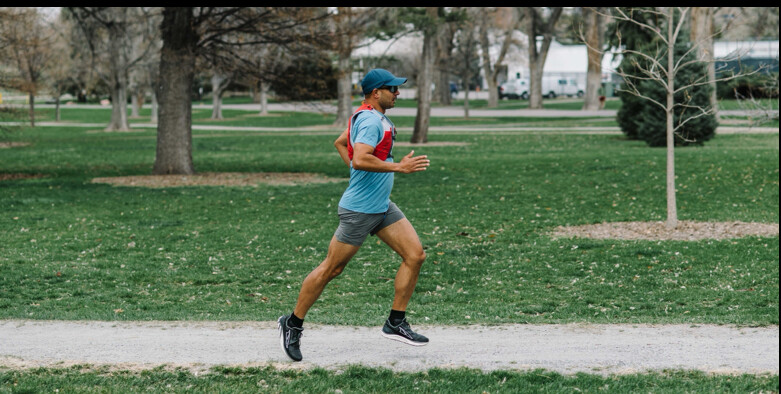
To better understand the logic behind tapering up, down, and in reverse, we spoke with Jessie Zapotechne, a coach with Adidas Runners in New York City and the founder of Girls Run NYC, and Raj Hathiramani, certified running coach at Mile High Run Club in New York City. Both are seasoned marathoners who have designed training programs and coached countless athletes through the ebbs and flows of race prep and recovery. Here’s what to know.
Understanding the Reverse Taper
The reverse taper is different from simply increasing volume to prepare for a race. When you’re in the midst of training and following a training plan, “weekly mileage increases are a gentle, rolling progression,” Hathiramani says. This approach compounds strength and endurance as the body adapts to new and increased training demands in order to reach a specific distance and pace.
Postrace, however, you’re working with a different baseline. “Racing wears down muscles, depletes glycogen, and suppresses your immune system,” Hathiramani says. Recovery—both physical and mental—should be your number-one priority.
“For longer races, this can include several days or a week of full rest before cross-training and resuming running, and for shorter or lower-effort races, you can focus on active recovery and cross-training with a quicker return to running,” Hathiramani says.
If you’re worried about losing all of the progress you made during training, don’t be. “Our fitness does not diminish as drastically as we think with an extended period of rest. Our bodies adapt to ‘defend’ our fitness level,” Hathiramani adds.
When you feel rested and ready to jump back in, you can start with some short, unstructured runs to see how you feel. (Don’t be afraid to shorten or bail on a workout if you’re feeling fatigued.)
Unlike a regular taper within training plans, there are fewer agreed upon rules about how to train without a specific goal or race plan. While you can use your previous training for guidance, Hathiramani emphasizes that this can be “tricky,” as the right approach depends upon your experience, training history, and distance of your last race.
“Generally, it’s fair to say after a rest period following a race, you can build back from the end of your base building phase,” he says. You don’t need to start at week one, but you also shouldn’t dive back into peak training.
Consider picking a week from the early-to-middle of the training plan as your reverse taper starting point. “It’s usually six to eight weeks into a [marathon] training cycle,” Hathiramani says.
6 Reverse Taper Tips
To taper up like a pro, and to avoid injuries and overtraining, consider the following tips and mistakes to avoid. 1. Progress Slow(er than Usual)
A weekly mileage increase of 10 to 20 percent is standard for most training plans, but remember that when you start a reverse taper, you’re not simply building mileage, you’re recovering. It’s okay to keep your volume the same from one week to the next or even reduce it, if needed.
2. Honor Rest Days
“A common mistake that I’ve seen athletes make is to skip a rest day because they are feeling good,” Zapotechne says. “This results in overtraining or feeling fatigued when it is time for them to continue on with the next planned workouts.”
If you crave movement on a rest day, consider an activity like restorative yoga or walking.
3. Don’t Dismiss Sharp or Persistent Pain
“Increased mileage will mean you are using more energy and thus need appropriate recovery, nutrition, and sleep. It is normal to feel more sore, tired, and hungry,” Hathiramani says. But anything more intense could signal injury. “A red flag is any sharp pain or persisting ache that gets worse when you run or is above a 4 out of 10 on a pain scale.” If you experience this kind of discomfort, see a doctor.
4. Keep Easy Runs Easy
“Easy runs coupled with intentional recovery sessions (e.g., stretching, mobility, preventative physical therapy, and sports massage) help achieve weekly mileage while letting your body regain strength after harder efforts,” Hathiramani says.
Use the talk test to keep your exertion easy and, if necessary, ignore your watch.
5. Don’t Overdo It With Interval Training
When you’re not yet on a training plan and are starting your reverse taper, Hathiramani suggests refraining from specialty runs, such as speed work. “For most runners, one interval training session a week is most effective to balance improving endurance with staying injury-free,” he says.
Save intervals, fartlek, and other speed runs for when you’re back on an official training plan.
6. Recover as Hard as You Train
“More mileage means more recovery and more sleep,” Hathiramani says. “Rest is important to maintain good mental health and optimal performance.” So, if you’re waking up before dawn to get in your morning run before the day starts, make sure you’re hitting the sack early, too.
A Refresher on the Traditional Taper
Reverse tapers and traditional tapers have equal importance. “Tapering,” or reducing your running volume and intensity in the days and weeks leading up to a race, is a very intentional race-prep strategy. Because whether or not you feel it (and you probably do feel it), your body has taken a hit, thanks to all those long runs, interval workouts, and tempo runs. “Tapering allows your body’s energy, strength, and health to return to optimal levels,” Hathiramani says.
Every taper looks a little different based on the type of race, the length and design of the training program, and how an athlete responds to training. “Most marathon plans call for a three-week taper and a 20 to 30 percent reduction in mileage each of those weeks, with little or no training faster than your race goal pace,” Hathiramani says.
A half marathon program may include just two weeks of tapering, and, if you’re training for a 10K, you might start cutting back a week to 10 days before race day.
During a training plan, after so many weeks of steadily accumulating more miles and tougher workouts, it can be surprisingly challenging to pump the breaks. “I feel I’m a better person in life when I’ve been able to go out and get my endorphins from running,” Zapotechne says. “Then taper time comes, and I have fewer runs, and they are shorter. This can often build up a lot of anxiety, and I’ve got energy now that does not have a place to be released.”
Here are a few tips to help round out your knowledge about the reverse and traditional taper:
1. Don’t Swap Running for Other Workouts
“In the past, I’ve made the mistake of deciding that, since I’m not running, I’ll go do that boxing class or other random workout that I’ve been meaning to do, and the result is then that I’m sore and I’ve overworked muscles that I was supposed to be resting,” Zapotechne says.
A taper isn’t the time to build muscle or experiment with different forms of exercise. If you feel like you have to do something, channel your energy toward active recovery practices, like mobility work, stretching, and meditation.
2. Don’t Try New Shoes (or Gear, Nutrition, or Routes)
The “nothing new on race day” adage should probably be amended to read, “Nothing new in the weeks leading up to race day.” By the time you get to a taper, you’ll likely have a formula that works for you—stick with it. Any adverse reactions to changes in your gear or habits (blisters and GI distress, anyone?) will rob you of quality recovery time.
3. Don’t Play “Catch-Up”
It’s normal for runners to miss an occasional workout on a training plan or feel like they didn’t work hard enough to prepare for a race. The taper period is not the time to play catch-up. “I coach athletes (and remind myself) that you cannot increase your fitness by doing more intense workouts the week before a race,” Zapotechne says. “You have to trust that what you have done is enough and that, ultimately, rest is your friend.”
(05/19/2024) ⚡AMPby Runner’s World
Caster Semenya determined to fight on against DSD regulations
Double Olympic 800-meter champion Caster Semenya appeared at the European Court of Human Rights (ECHR) on Wednesday to continue her challenge against World Athletics regulations that female athletes with differences in sexual development (DSDs) medically reduce their testosterone levels.
The ECHR ruled in July 2023, by a majority of four votes to three, that Semenya's original appeal to a Swiss Federal Tribunal against the regulations had not been properly heard.
But the Swiss, encouraged by World Athletics, have appealed that verdict to the ECHR Grand Chamber for a final and definitive decision. A verdict is expected in the coming months.
"This is an important day in my journey as a human being and athlete. It has been a long time coming," Semenya told reporters.

"The outcome of this case is very important. You need to pave out a way for young women so they don't face the injustice, the scrutiny of being judged, being dehumanized and being discriminated (against).
"I don't think this is about my career. It is about me being an advocate for what is right, to voice out for those who cannot fight for themselves."
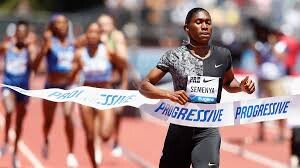
Should Semenya be successful it will open up the possibility of a fresh challenge to the regulations that effectively ended her running career, though she says her fight is now for future generations.
"I hope that the court's decision will pave the way for all athletes' human rights to be fiercely protected, for once and for all," she added.
Under the World Athletics rules, female athletes with differences in sexual development (DSDs) must lower their level of testosterone to below 2.5 nmol/L for at least six months to compete. This can be done medically or surgically.
Athletes competing in events between 400 meters and a mile must keep their levels below 2.5 nmol/L for 24 months.
World Athletics have denied there is any attempt to discriminate in their regulations.
"World Athletics has only ever been interested in protecting the female category. If we don’t, then women and young girls will not choose sport. That is, and has always been, the Federation’s sole motivation," the sports body said in a previous statement to Reuters.
"We remain of the view that the DSD regulations are a necessary, reasonable and proportionate means of protecting fair competition in the female category as the Court of Arbitration for Sport and Swiss Federal Tribunal both found, after a detailed and expert assessment of the evidence."
(05/18/2024) ⚡AMPby Sport
Kenny Bednarek, Letsile Tebogo, and other top track athletes line up for the 200M sprint at the Prefontaine Classic
The 200-meter division is the subject of much discussion as the Olympic season develops further. While many athletes have talked about breaking the world record set by Usain Bolt, Kenny Bednarek is the one who recorded the fastest 200-meter time in 2024. However, he still has a long way to go and will be facing athletes of equal caliber at the Prefontaine Classic 2024.
Track Gazette took to X to post the list of athletes who will compete in the annual 200-meter sprint at the Prefontaine Classic 2024. It begins with Bednarek, who just won the Doha Diamond League, setting a world lead, a meet record, and a personal best. His time of 19.67 seconds has since become the standard, but the track world moves fast, and other athletes will soon be closing the gap.
Erriyon Knighton, a 20-year-old American prodigy, is also scheduled to compete at the tournament while being heavily favored for a spot in the Olympics. Furthermore, the list includes Botswanan sprinter Letsile Tebogo, who broke the 300-meter world record earlier this season. The 20-year-old has been confident since his ASA Grand Prix Tour and has not underperformed in any event.
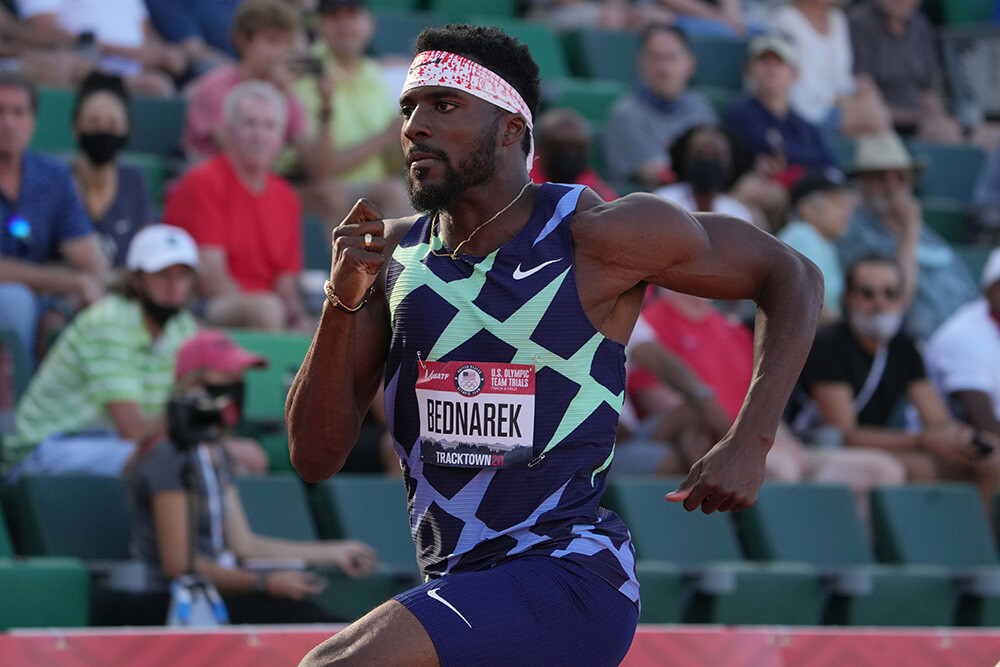
Even at the World Relays, Tebogo had the fastest time among all of the other teams in the finals and won the gold medal, making Botswana and the entire continent of Africa proud.
Meanwhile, Tebogo’s rival Courtney Lindsey will also compete in the Prefontaine Classic, as he was the first person to defeat the 20-year-old in the 200 meters at the Kip Keino Classic. On the other hand, Aaron Brown, a Canadian sprint standout, has registered for the tournament and hopes to have a successful 200-meter seasonal debut.
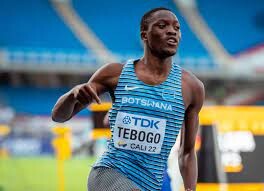
Another standout name on the list is Kyree King who ran an outstanding 20.21 with a +1.7 tailwind on the Qatari circuit and might pose a major threat to other runners, including his fellow Team USA athletes. In addition, Liberian sprinter Joseph Fahnbulleh, who delivered many inspiring words at the World Relays after securing his country’s ticket to the Paris Olympics, has also registered for the 200-meter sprint alongside Jeremiah Curry of the United States and Alexander Ogando of the Dominican Republic.
The event’s lineup of athletes with diverse talents has naturally gotten fans excited. The Prefontaine Classic has never disappointed and from the looks of it, 2024 will definitely take the legacy forward.
At the same time, fans can have varying expectations, and many took to X to make their feelings known.
American athletes Bednarek and Knighton will undoubtedly give their all, but for this fan, the Botswanan athlete appears to be the clear winner.
This season, the entire grid has demonstrated their prowess and this user believes there will be a new world lead.
(05/18/2024) ⚡AMPby Rahul Goutam Hoom
Prefontaine Classic
The Pre Classic, part of the Diamond League series of international meets featuring Olympic-level athletes, is scheduled to be held at the new Hayward Field in Eugene. The Prefontaine Classicis the longest-running outdoor invitational track & field meet in America and is part of the elite Wanda Diamond League of meets held worldwide annually. The Pre Classic’s results score has...
more...U.S. star Sydney McLaughlin-Levrone will run the 400m hurdles at Paris Olympics
American track star Sydney McLaughlin-Levrone will compete in her fourth meet of the season on Saturday in Los Angeles, matching the total number of races she ran last year. Ahead of the race, McLaughlin-Levrone and her coach, Bobby Kersee, addressed her training focus for the 2024 Paris Olympics, stating that her plans are only to run the 400m hurdles at the U.S. Olympic Track and Field Trials next month, returning to her signature event after racing the flat 400m in an injury-shortened 2023.
Kersee confirmed Friday that McLaughlin-Levrone’s plans for U.S. Trials is to stick to the 400m hurdles, which take place June 21-30 in Eugene, Ore. The top three finishers in each event (if they have the standard) will make Team U.S.A. for Paris. When Kersee was asked what went into the decision, he said: “That’s her main event. That’s what we want to defend our Olympic championship in.”
“I think Sydney’s love is the 400m hurdles, and so that’s the number-one event,” Kersee told NBC Sports. “My job is to make sure that she gets ready for the one that she wants to do the most.”
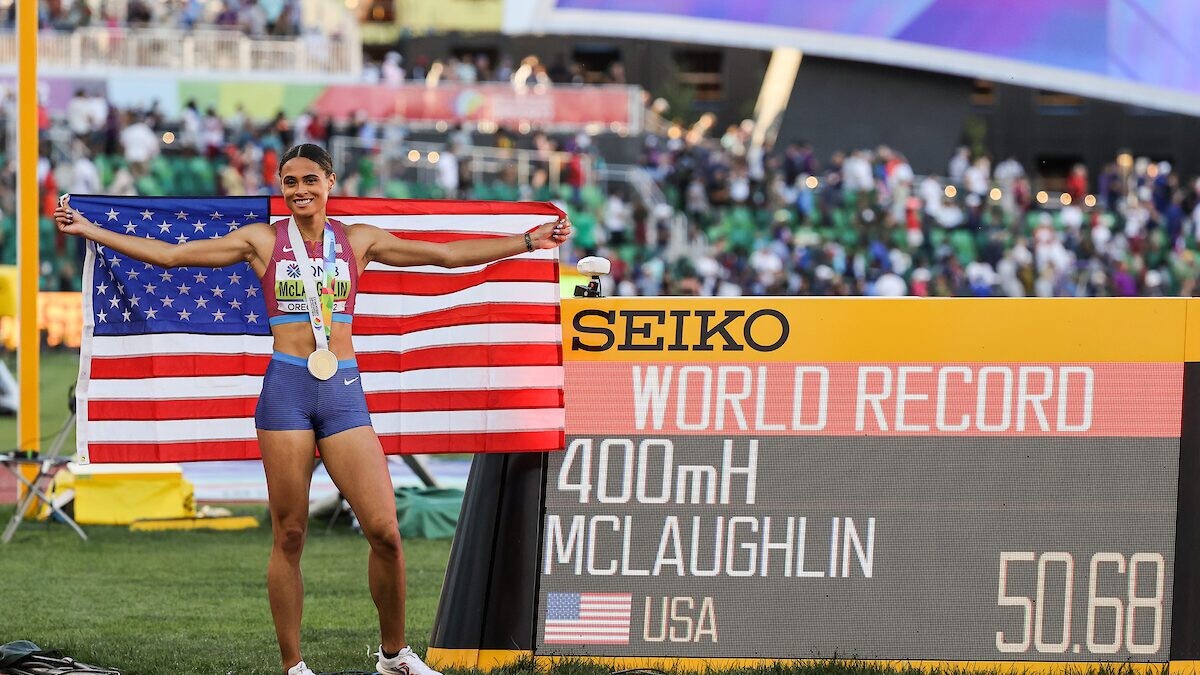
McLaughlin-Levrone won the 400m hurdles at the Tokyo Olympics and lowered the world record on four separate occasions between 2021 and 2022, bringing it down from 52.16 seconds to 50.68. After the 2022 season, McLaughlin-Levrone said she wanted to expand to the flat 400m to see what was possible in that event, while not giving up the 400m hurdles.
The 24-year-old did not contest the 400m hurdles in 2023. McLaughlin-Levrone won the U.S. title in the flat 400m last July in 48.74 seconds, the world’s fastest time last year, and the second-fastest time in American history. She planned to race the flat 400m at the world championships in August, then announced her withdrawal eight days before the event, due to a small tear in her left knee that led to patella issues and tendonitis.
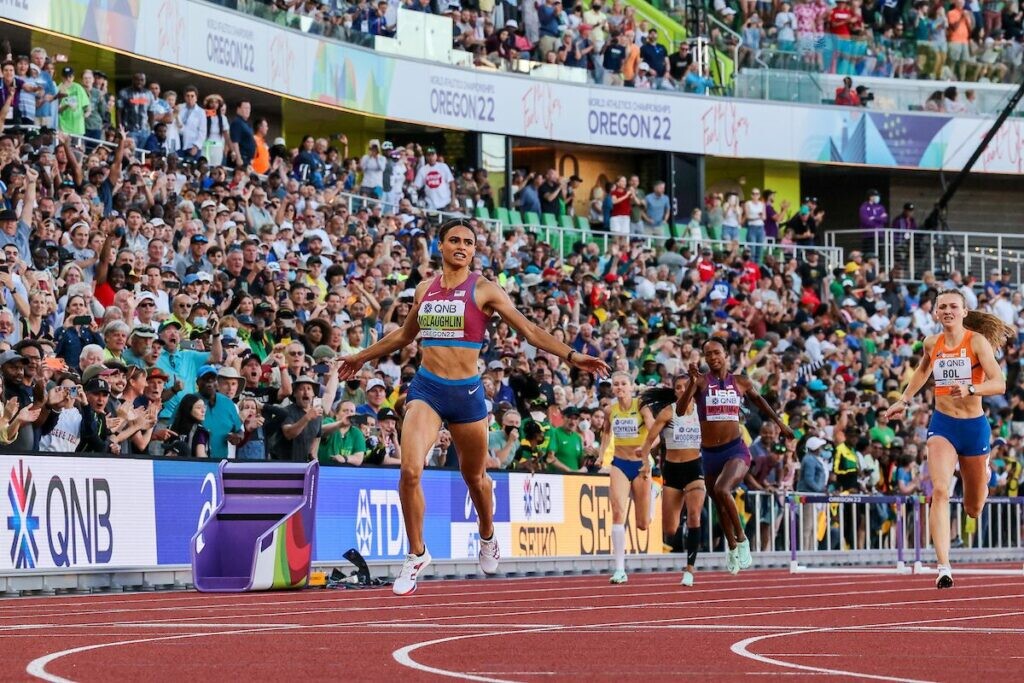
In McLaughlin-Levrone’s absence, Femke Bol of the Netherlands won the 400m hurdles event in Budapest last August in 51.70 seconds. Bol is the second-fastest woman in history in the event, with a personal best of 51.45. The 400m hurdles final could be the first matchup between Bol and McLaughlin-Levrone since the world record was last broken, at the 2022 World Athletics Championships in Eugene.
McLaughlin-Levrone has already raced three times this season in events outside the hurdles, and is on the entry list for the 200m at the USATF Los Angeles Grand Prix on Saturday, where she will face her U.S. teammate, Gabby Thomas.
Kersee also said that McLaughlin-Levrone, if she qualifies for the Olympics and is healthy in Paris, will also be available to run the mixed-gender 4x400m relay (final Aug. 3) and the women’s 4x400m relay (final Aug. 10).
(05/18/2024) ⚡AMPby Marley Dickinson
Paris 2024 Olympic Games
For this historic event, the City of Light is thinking big! Visitors will be able to watch events at top sporting venues in Paris and the Paris region, as well as at emblematic monuments in the capital visited by several millions of tourists each year. The promise of exceptional moments to experience in an exceptional setting! A great way to...
more...Is it OK to run in the bike lane?
Have you ever been out for a run and found yourself constantly dodging pedestrians on the sidewalk? This is a common struggle for many Canadian runners living in urban environments. In their quest for space, runners often resort to bike lanes, which sometimes causes frustration among cyclists. But can we really blame them?
To get a clearer picture of this issue, on Weednesday, we took to Toronto’s busy streets to ask cyclists their thoughts about people running in bike lanes.

Bike rage incoming
By opting to run in city bike lanes, runners risk obstructing the lanes for cyclists, and also becoming a target for “cyclist aggression.” While this anger may seem unfair to observers, many argue it’s understandable, since the lanes are specifically designated for bicycles.
The cyclists we interviewed had diverse opinions on the topic, but one thing they did agree on was the complex dilemma runners are faced with: if not the bike lane, then where?
Lack of “runnability”
The question we should be asking isn’t where runners should go, but who is responsible. Canadian urban planners, it’s time to step up. Running has seen a significant surge in popularity among Canadians, particularly post-pandemic. However, city planners appear slow to adapt to this trend and the varied needs of Canadian residents by offering adequate space for runners in urban environments.
Despite Toronto ranking as the third most walkable city in Canada according to Evergreen (behind Vancouver and Montreal) there has been little research and planning into its “runnability” (the ability to safely run within a reasonable distance from one’s home). Yet, the city has plenty of designated spaces for cars, bicycles, in-line skaters, strollers, wheelchairs, and pedestrians. Without their own designated space, runners in Toronto are stuck choosing one of four options: to endure sidewalk congestion, commute to a trail outside of their neighbourhood, stop running altogether, or run in a bike lane.
What’s the resolution?
In 2021, urban planners in Surrey, B.C., developed a preliminary runnability index, revealing that areas in the downtown core and near high-traffic routes had low runnability, indicating significant room for improvement. In another report, Toronto urban planners suggest the advantages of mapping out runnable routes, arguing that designing runnable neighborhoods would offer residents the freedom to incorporate running into their daily commutes, just as cyclists do.
Running, like walking and cycling, is a crucial component for urban planners to consider in creating a sustainable city, and it needs to be part of public health discussions. By prioritizing the creation of designated spaces for runners, urban planners can contribute to the overall health and well-being of the community.
(05/18/2024) ⚡AMPExercise Changes Perception Of Time, Says New Study
Exercise has long been touted for both its physical and mental health benefits, but recent research adds an intriguing twist to the understanding of its effects, indicating it can also alter the perception of time.
The study, published in the journal Brain and Behavior and led by researchers from the U.K. and The Netherlands indicates that time seems to slow down when people engage in physical activity.
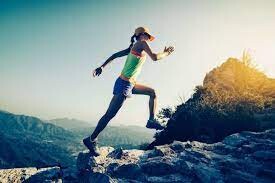
The study involved 33 active adults who participated in controlled experiments where they cycled in virtual environments for 4 kilometres at a time. These environments were designed to be both engaging and challenging, including the presence of virtual competitors to test if social dynamics could influence time perception. The participants then completed time perception tasks at three different intervals: before, during, and after their exercise sessions.
The findings revealed a significant distortion in the participants' perception of time during exercise. Specifically, time appeared to stretch, making periods of physical activity feel longer than they actually were. This phenomenon was consistent regardless of the presence of virtual competitors, indicating that the act of exercising itself, rather than whether other individuals were preset, was responsible for this time-warping effect.
"Our findings have important implications for healthy exercise choices, enjoyment levels and also for how we use this information to optimise performance,” said Professor Andrew Edwards, co-lead author of the work from Canterbury Christ Church University in Kent, U.K. in a press release.
The paper suggests that if time perception can be manipulated to make workouts feel less burdensome or lengthy, more people could be encouraged to engage in regular physical activity, improving overall health and fitness levels. For example, shorter, high-intensity workouts that feel longer could be integrated into fitness regimes, providing the benefits of extended exercise sessions without the associated time commitment. The researchers also suggest that understanding how time perception changes during exercise could help in developing new strategies to make physical activity more enjoyable, potentially increasing adherence to exercise routines.
"The main strands of the work are to see how we can motivate people to engage with exercise, avoid/mitigate negative associations with time appearing to move slowly and perhaps see if we can use this apparent slowing of time to our advantage," said Edwards.
However, the researchers are keen to point out the limitations of the study, including that the participants in the study were all quite fit and exercised regularly to start with, so they can't say whether the results would be similar for people who are less fit and don't partake in regular exercise.
"It's still unclear whether the results are generalizable. The sample size of 33 people offer an intriguing first glimpse into how our perception of time can be warped — and perhaps a clue as to how to take things to the next level while exercising,” said Edwards.
The research team plans to expand their studies to include a more diverse range of participants, exploring how different demographics and fitness levels experience time distortion during exercise. They are also planning to investigate how various types of physical activity, beyond cycling, impact time perception and how their findings can be applied to specific populations, such as athletes seeking to optimize their training or individuals undergoing rehabilitation who might benefit from more engaging exercise experiences.
(05/18/2024) ⚡AMPWhy Time Feels Slower During Your Hardest Workouts
A new study confirms that difficult workouts really do feel longer by distorting your perception of time.I’ve always been partial to Dunbar, the character in Catch-22 who seeks out boredom and discomfort in order to make time pass more slowly, thus effectively prolonging his life. It’s a sensation that’s familiar to any endurance athlete: the seconds agonizingly stretching as your effort mounts. Forget cardiovascular benefits and weight control; maybe the real life-extending power of exercise is the way it distorts your time perception.
That sensation is the topic of a new study in the journal Brain and Behavior, by a research team led by Andrew Edwards of Canterbury Christ Church University in Britain. Edwards and his colleagues put a group of 33 volunteers through a series of all-out, 4-kilometer cycling time trials, periodically asking them to estimate the passage of 30 seconds. Sure enough, hammering made the cyclists’ internal clocks faster, which in turn made the efforts feel longer—but not quite in the way the researchers expected. Instead, the results join a series of recent studies suggesting there’s more to time perception than even Dunbar might have suspected.
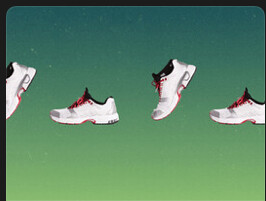
Back in 2017, Edwards and a colleague published one of the first studies of exercise and time perception. They found that in rowing and cycling bouts between 30 seconds and 20 minutes, people could estimate time fairly accurately during light exercise. But their subjective clocks began to speed up compared to the actual passage of time during moderate exercise, and accelerated even more in all-out bouts. For example, they were asked to guess when they were a quarter, halfway, three-quarters, and all the way through their 20-minute rowing trial. At their halfway estimate, only about 9 minutes and 20 seconds had passed, meaning their internal clocks were running 7 percent faster than real chronological time. By the time they reached what they thought was the finish, just 17 minutes had passed, a deviation of 15 percent.
Scientists aren’t sure exactly how we keep track of time, but the most common explanation for time dilation is that it’s influenced by how much information flows to your brain. During intense arousal—like hard exercise or perceived danger—our senses are heightened. Since we’re noticing more things per unit time, we tend to overestimate how much time has passed. So it makes sense that hard exercise warps time more than easy exercise. It also suggests that distractions, like the presence of a teammate or competitor, might help counteract the effect.
The new study tested the latter idea by having each competitor do a solo time trial, one with a virtual reality companion who cycled alongside them, and one with a virtual competitor whom they were instructed to try to beat. Contrary to expectations, neither the companion nor the competitor made any difference to time perception. And the time perception measured at 500 meters, 1,500 meters, and 2,500 meters was the same each time, even though the cyclists were working a lot harder at 2,500 meters than at 500 meters.
Here’s what that data looks like: a fairly constant clock deviation of about 7 percent at each timepoint.
You can come up with various explanations for these results. It may be that exercising for a set time produces different effects than racing over a set distance. Or it may be that there are nuances that get lost when you look at overall averages. Here’s the same data, this time broken down into the solo time trial condition (circles), companion (squares), and competitor (triangles):
Looking just at the triangles, you see that when racing against a competitor, there’s basically no time deviation at 500 or 1,500 meters: the distraction of focusing on a rival eliminates the time effect. But at 2,500 meters, when the race is really getting hard (the virtual rivals were set to ride 5 percent faster than each subject’s baseline performance), time dilation balloons to more than 25 percent! You can probably come up with similar stories to explain the other two conditions, but these are post hoc explanations that should be treated with suspicion. For now, the safest conclusion is that the picture is more complex than we thought, and we’re not yet sure why.
The picture is similarly hazy when you look at time perception during strength training. Last year, David Behm and his colleagues at Memorial University of Newfoundland published a pair of studies exploring the effect of isometric knee extensions (that’s when you try to straighten your legs against an immovable object) on time perception. In some cases, pushing harder produced more time dilation; in other cases, intensity didn’t seem to matter, perhaps because the subjects were also distracted by monitoring their force output on a computer screen.
And earlier this year, Behm and his colleagues published a study testing time perception after physical exercise and also after a brain task that caused mental fatigue. Physical fatigue made time dilate but mental fatigue didn’t. That’s an interesting observation, but it conflicts with Edwards’s study, where time perception was back to normal within two minutes after exercise.
In other words, the more scientists study exercise and time perception, the more complicated it gets. All of these studies use different exercise protocols, different durations, and different ways of assessing time perception. It will take time to sort through the reasons for the apparent contradictions, but the overall finding still seems solid: time slows down when you’re pushing hard. Admittedly, as a means of life extension, it’s no picnic. “Maybe a long life does have to be filled with many unpleasant conditions if it’s to seem long,” one of Dunbar’s comrades says. “But in that event, who wants one?”
“I do,” Dunbar replies.
“Why?”
“What else is there?
(05/18/2024) ⚡AMPby Outside Online
Sha'Carri Richardson will headline the women's 100m at the Prefontaine Classic
Track superstar Sha'Carri Richardson will headline the women's 100m at the Prefontaine Classic Diamond League event on 25 May at Eugene's Hayward Field.
The reigning world champion is set to make her 100m debut in the Olympic season, facing the 60m world indoor champion Julien Alfred of St. Lucia and Marie-Josée Ta Lou-Smith of Côte d'Ivoire.
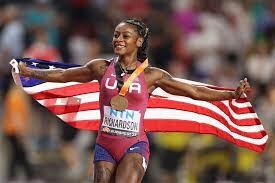
Richardson is still on the hunt for her first win of this year's Diamond League season after finishing second over 200m at the Diamond League opener in Xiamen and third seven days later in Suzhou.

Last year's Prefontaine winner, Christian Coleman, is hoping to defend his 100m title. He will face off against Kenya's Ferdinand Omanyala and Jamaica's Ackeem Blake.
In the men's 200m, world silver medalist Erriyon Knighton is up against Olympic silver medalist Kenny Bednarek and Letsile Tebogo of Botswana.
(05/17/2024) ⚡AMPby Sven Busch
Prefontaine Classic
The Pre Classic, part of the Diamond League series of international meets featuring Olympic-level athletes, is scheduled to be held at the new Hayward Field in Eugene. The Prefontaine Classicis the longest-running outdoor invitational track & field meet in America and is part of the elite Wanda Diamond League of meets held worldwide annually. The Pre Classic’s results score has...
more...Former Boston Marathon champion finally receives prize money from a stranger after 10-year wait
The 2014 Boston Marathon winner Buzunesh Deba has finally her received prize money from a stranger after waiting for 10 years following Kenyan Rita Jeptoo's doping ban.
At the 2014 Boston Marathon, Ethiopian distance runner Buzunesh Deba gave her all and settled for second place with Rita Jeptoo wining the race in style.
However, in 2016, Jeptoo, the winner of the marathon, was disqualified by the Athletics Integrity Unit over a doping offense and Deba was now crowned champion but without being paid the prize money she deserved.
She has waited for 10 years, patiently, to receive her money and it was finally given to her, not by the race organizers, but by a stranger.

The race organizers insisted that they gave Jeptoo all the money, the $75,000 for winning the race and an extra $25,000 for setting the course record, an amount they never got back from her following her doping offense.
"She took my chance. I lose so many things. I thought everything is to change after I hear the news, but nothing,” Deba lamented last month, as quoted by CBS News.
However, someone, whom she claims to not know, decided to heal her wound and grant her the prize money. As reported by CBS News, Doug Guyer, a Boston College graduate and a businessman in the Philadelphia area, read about Deba's story in the Wall Street Journal and decided to offer her the money.
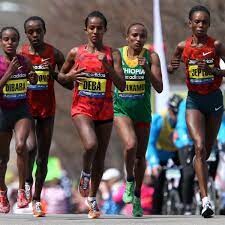
The Boston Marathon fan decided he would pay her out of his own pocket and he actually did it by sending Deba a cheque for $75,000 as he also considered paying her the remaining $25,000.
Following the news, the Boston Athletic Association explained that they are still in the process of recovering the prize money from Jeptoo.
In a statement, they said: “The Boston Athletic Association stands for clean sport and fair competition. Following the ruling by the Court of Arbitration for Sport, the B.A.A. began pursuit of reclaiming prize money awards from Rita Jeptoo.
“As the matter is still ongoing, we are unable to comment further at this time. We are in the process of attempting to recover the prize money awarded to Ms Jeptoo, so that it can be repaid to Ms Deba.
“While we believe that Ms Deba is due the prize money as she is the rightful winner of the 2014 women's race, there are policies held by World Athletics and supported by World Marathon Majors that we, along with the other members of the organization, follow.
“The B.A.A is still pursuing Ms Jeptoo to recover the prize money for Ms Deba, which the B.A.A. believes would be a just and fair result for her and all runners who follow the rules. As this matter is still ongoing, we are not able to comment further at this time.”
(05/17/2024) ⚡AMPby Abigael Wuafula
Boston Marathon
Among the nation’s oldest athletic clubs, the B.A.A. was established in 1887, and, in 1896, more than half of the U.S. Olympic Team at the first modern games was composed of B.A.A. club members. The Olympic Games provided the inspiration for the first Boston Marathon, which culminated the B.A.A. Games on April 19, 1897. John J. McDermott emerged from a...
more...Peres Jepchirchir reveals what worries her ahead of Olympic title defence
Olympic marathon champion Peres Jepchirchir has explained why she is concerned as she prepares to defend her title at the Paris Games.
Olympic marathon champion Peres Jepchirchir is worried that she might not have enough time to fully prepare for her title defense in Paris.
Jepchirchir won the London Marathon last month and had to take a mini break before resuming her preparations for the Olympics.
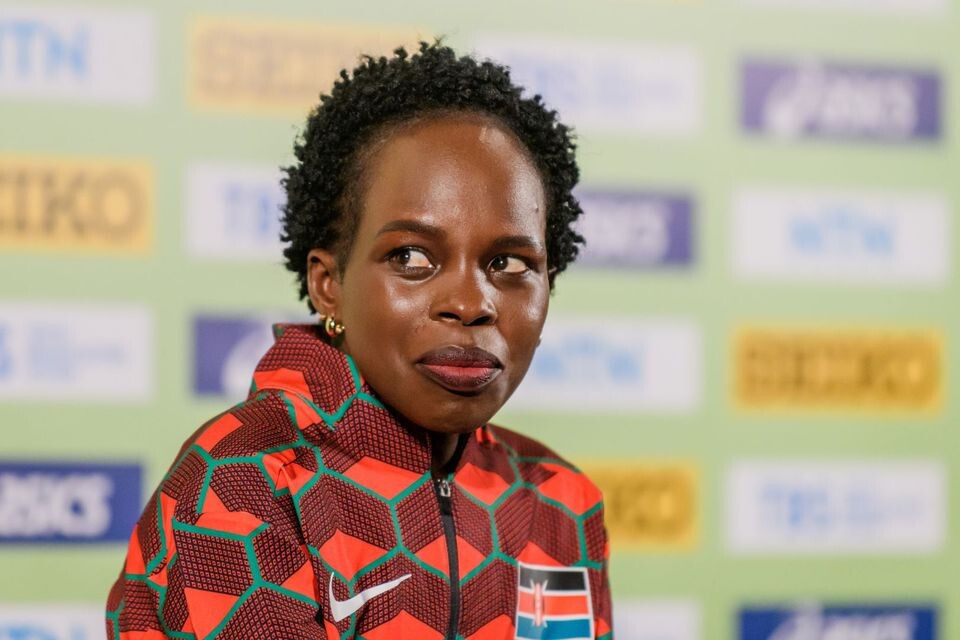
Now just getting back, the former Boston and New York Marathon champion says she has limited time to get in proper shape but she is counting on her past experiences to lead her to glory on the tough course in Paris.
“I resumed fully my training for Olympics last week on Monday but the time is limited. Three months is not much for us marathoners, now I’m rushing to go through my programme,” said Jepchirchir.
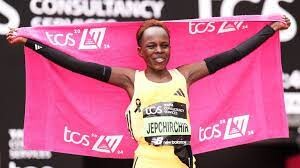
“The way I see and I have heard about the course, it is a little bit difficult, but I have run New York and Boston which are hard courses but so long as I am in good shape, free from injuries. I will make it.”
Jepchirchir admits she cannot push her body so much at the moment after putting in so much for the London Marathon that she won in a new women’s-only world record of 2:16:16.
“I started resuming slowly, now I am doing 20km running and I think by the end of this month, I will be fully in my programme,” she added.
She has, however, shrugged off suggestions that Team Kenya will have it rough especially from Ethiopians, backing herself and her team-mates Hellen Obiri and Brigid Kosgei to triumph over their bitter rivals.
“I know the team is strong and to win Olympics again is not easy. It means extra hard work but I know we are going to make it. Team Kenya is strong, Ethiopia is strong but not stronger than us,” remarked the mother of one.
Jepchirchir was speaking after being awarded the Sports Personality of the Month for April by the Sports Journalists Association of Kenya in conjunction with electronics giants LG.
(05/17/2024) ⚡AMPby Joel Omotto
Paris 2024 Olympic Games
For this historic event, the City of Light is thinking big! Visitors will be able to watch events at top sporting venues in Paris and the Paris region, as well as at emblematic monuments in the capital visited by several millions of tourists each year. The promise of exceptional moments to experience in an exceptional setting! A great way to...
more...Rodgers Kwemoi's titles from 2016 stripped as he receives six-year doping ban
Rodgers Kwemoi has been slapped with a six-year ban by the Athletics Integrity Unit with all his titles from 2016 stripped.
Rodgers Kwemoi has been slapped with a six-year ban for the use of a Prohibited Substance/Method (ABP) with his results from July 18, 2016 disqualified.
Kwemoi was an upcoming road runner and had represented Kenya in several events including the World Championships and Commonwealth Games.

The 26-year-old will now be stripped off his Istanbul Half Marathon title, his 2018 Commonwealth Games bronze medal and his junior world title from 2016 in the 10,000m.
Meanwhile, the AIU reported that in May last year, they wrote to Kwemoi, notifying him of the abnormalities detected in his ABP profile and that they were considering taking charges against him. He was, therefore, invited to explain himself and the abnormalities but he did not respond within the given timeline.
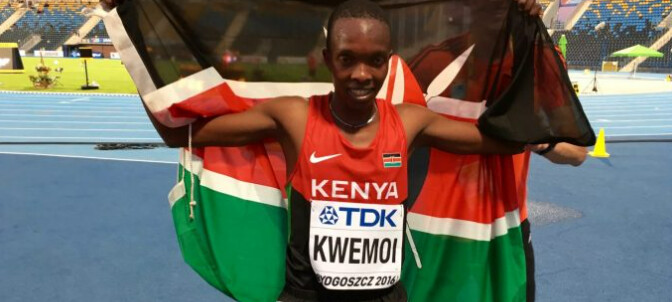
Kwemoi then responded later, claiming that the reason for the issue was a result of the natural variations due to the psychological responses influenced by the frequent changes in climate, altitude, and other environmental factors. However, his explanation was rejected by the panel.
However, Kwemoi still insisted that the explanation the AIU gave was not sufficient to conclude that he committed an anti-doping rule violation.
The Japan-based runner’s samples, according to the AIU, posted inconsistencies was before the World Under-20 Championships in 2016 and the AIU made the ruling for the ban to start from then and his results since then be disqualified.
(05/17/2024) ⚡AMPby Abigael Wuafula
Meet the ultimate ultrarunning power couple
The running accomplishments of Rachel Drake and Tyler Green are astonishing on their own—but there’s far more to this pair of high-achievers than paces and race results. Drake recently earned her entry to the 2024 edition of the legendary Western States 100 with a strong win at Black Canyon Ultras 100K in Arizona, and Green finished second at the 2023 edition of Western States (and capped off his season with a sixth-place finish in the men’s race at UTMB 171K); the couple juggles demanding careers, school (Drake), coaching (Green) and family time with their one-and-a-half-year-old son, Lewis. We connected with the couple to find out how they make it work.
Drake, now 32, grew up in White Bear Lake, Minn., and the family currently lives in Green’s hometown of Portland, Ore. They will soon be moving to Salt Lake City, Utah, so Drake can begin her anesthesiology residency in the summer. The dynamic trail-running duo met at the McKenzie River 50K, and now combine their strengths in raising a family while balancing high-level running performance. Green, 40, works as a trail running coach and a high school cross country and track coach.
From Western States to World Trail Majors
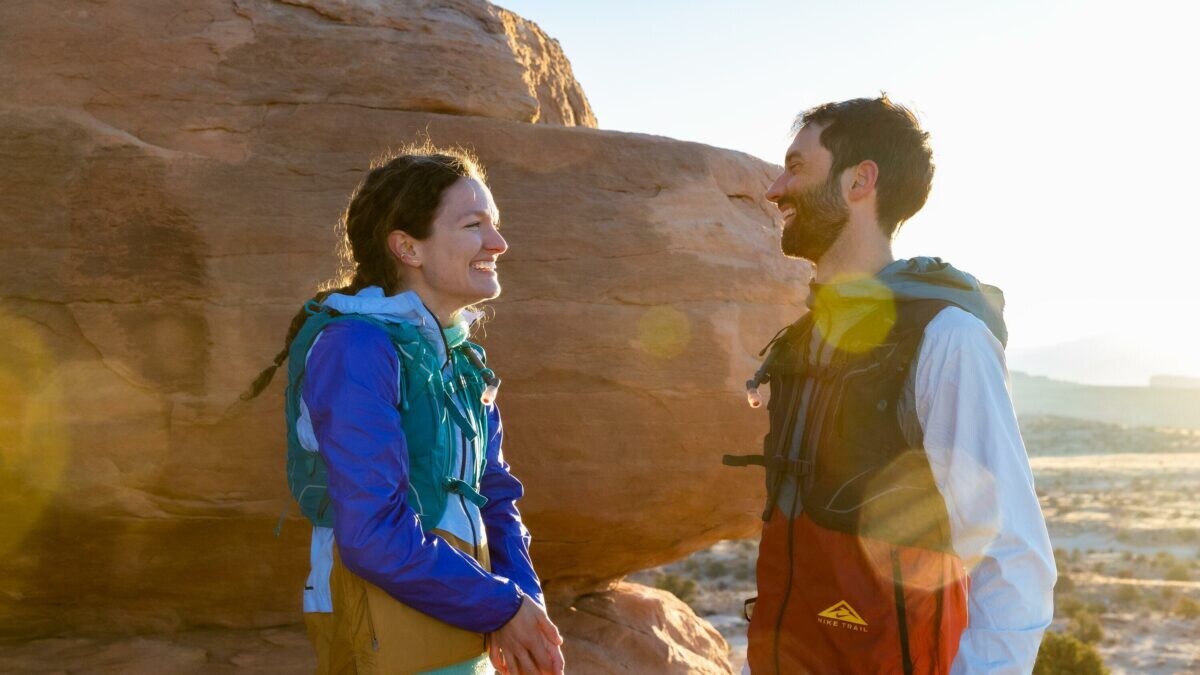
The couple has similar goals for the 2024 season—they are both racing Western States on June 29, and both hope to capture another top performance at one of the World Trail Majors races, with the current plan being to run Ultra Trail Cape Town in November. The couple exemplifies flexibility in running and life—when a recent trip to run Ultra Trail Madeira was entirely derailed due to travel difficulties, they rallied, enjoying time at home instead. And when Black Canyon Ultra 100K in February was delayed several hours due to bad weather, Drake rose to the occasion.
“I’m really proud of how I handled the multiple changes in plans, I never felt stressed or perturbed,” Drake posted on Instagram after Black Canyon 100K was delayed several hours. “And I guess my ability to fall back asleep showed that my catecholamines were indeed not yet surging through my bloodstream. I think having been through medical school, graduate school and the birth of a child has really put things in perspective.”
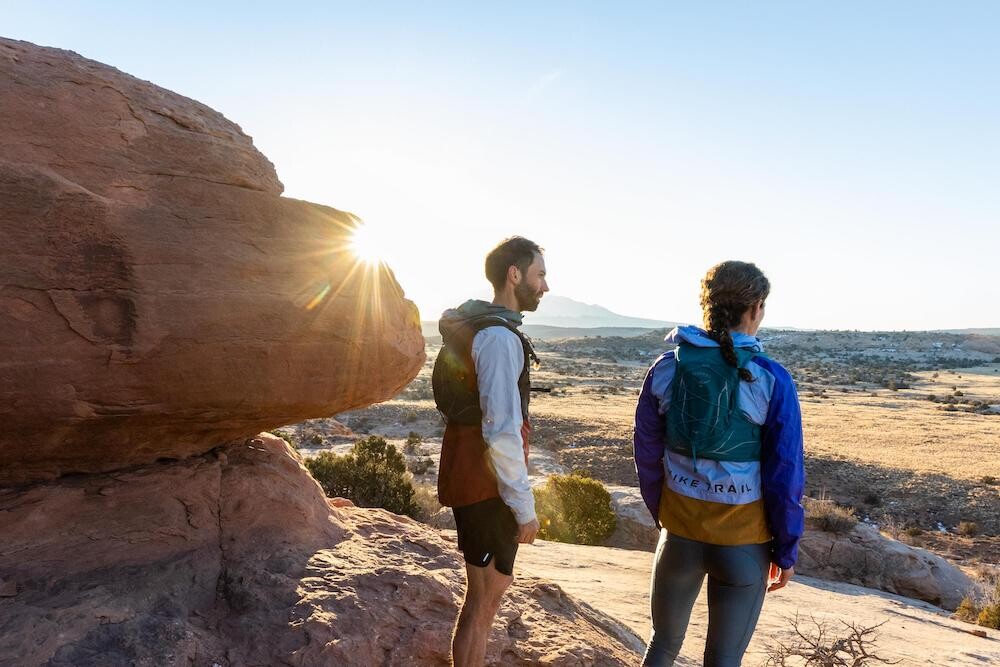
An element of surprise
Both Green and Drake love being a part of the trail running community, and while being parents adds an element of challenge, they are finding joy in bringing Lewis to events. “Just a few weeks ago we were at the Gorge Waterfalls trail races, and it’s so fun to bring Lewis into the fold,” Drake told Canadian Running. “He was making friends and wandering around at the finish line, and it was just the best.”
While Drake is quick to express gratitude for their lives, she also acknowledges that they have their hands full. “It’s challenging to balance everything. Lewis is a super easygoing kid, but having a toddler definitely adds an element of surprise to every well-laid plan,” she says. “When we travel, the logistics are a lot more complicated, but it’s always worth it.”
Combining strengths
Drake says that, as athletes, her strengths and Green’s are quite different. “Tyler is much more of a 100-mile specialist, and I am more of a 50K specialist,but moving up in distance this year,” she says. “I think I am also more of a speed-oriented runner and Tyler is probably more of a strength runner.”
As well as being partners through life, Drake and Green share a specific dynamic in the running world—that of coach and runner. “Tyler actually coaches me, so he gives me a lot of advice,” Drake explains. “I’ll weigh in on race strategy and planning our competitive calendars, but I don’t get involved with his training, since he has a great coach.”
Drake and Green share a mutual sponsor in the backpack brand Osprey. “Rachel has partnered with Osprey for five years now, and I followed suit three years ago as I saw how positive the partnership was,” Green explains. “Our connection with Osprey runs deep; they have supported us as people first, whether that’s celebrating a great race result, jumping for joy when we shared we were expecting a baby, or caring for us through injury. We feel like our stories are interwoven.”
The brand’s commitment to sustainability and longevity in its products pairs well with the couple’s values. “I have an Osprey backpack I’ve had for 20 years, it’s still my favorite pack, and I think that tells a lot about how our values align with the company,” says Green. “The gear Osprey makes truly performs and lasts. We’re ultrarunners who work incredibly hard to keep going and going and going, and an Osprey pack on our backs reflects that process.”
Running as a new mom
Drake and Green are now parenting a toddler, and while Drake’s top-notch performance may seem remarkable so quickly after having a child, she says she wouldn’t call it a fast return. “I had a sacral stress fracture at four months postpartum and had to take time to recover from that and then build back fitness,” she says, emphasizing that the culture that celebrates “bouncing back” from postpartum rarely includes any discussion about the challenges of returning to running after giving birth.
“I nursed Lewis for a year after he was born,” she adds. “I loved nursing and it felt important to me to prioritize that. While I was nursing, I felt much more limited with my training, so I had to accept that, even though I was preparing for races that I really cared about.”
Drake’s social media captures enviable images of family, travel, running and mountains, almost always with Lewis in tow. The key to the couple’s success: “Lots of communication with each other, planning our days out and capitalizing on getting stuff done during Lewis’s nap time,” Drake says. One could safely predict fans will follow Drake’s and Green’s performances on trails and off, long after the results of this year’s Western States.
(05/16/2024) ⚡AMPby Keeley Milne
Western States 100
The Western States ® 100-Mile Endurance Run is the world’s oldest and most prestigious 100-mile trail race. Starting in Squaw Valley, California near the site of the 1960 Winter Olympics and ending 100.2 miles later in Auburn, California, Western States, in the decades since its inception in 1974, has come to represent one of the ultimate endurance tests in the...
more...Eleven non-running items every runner should keep handy
When it comes to gear you need for running, we regularly bring you the best of the best in our gear reviews featuring shoes, clothing, fuel and more. But the runner’s lifestyle requires many items that aren’t necessarily intended specifically for runners. Here’s a checklist of objects that every runner needs to support their running lifestyle, even though none of these were designed specifically with the runner in mind.
1.- Vaseline
For your lips, to moisturize your weather-beaten skin and to prevent chafing. Vaseline has so many uses for runners–it’s basically an essential race-bag item.
2.- Hair elastics

For runners with long hair, there’s no question about how important these are. Your hair goes up for at least a portion of every day while you run. But hair elastics have a way of disappearing. If you’re a runner with long hair, you need plenty of these on hand to sustain your hobby.
3.- Sunscreen
Runners love the outdoors, and with summer approaching, this one becomes even more important. Here are some tips on how to use sunscreen most effectively when you’re doing what you love this season.
4.- Safety pins
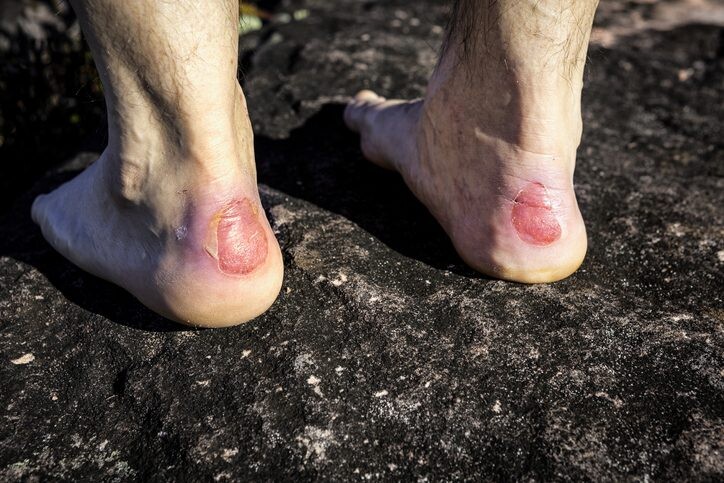
To pin your race bib, to pin a tensor bandage or to pin clothing that fits just a little bit loose. An accumulation of safety pins around the house is probably standard in every runner’s home.
5.- Facial wipes
Keep them in your gym bag or office (especially if you’re a run commuter or lunchtime runner). Running causes sweat and sweat leads to clogged pores if you can’t immediately wash your face after a run. Facial cleansing wipes are a quick solve.
6.- Allergy pills
If you have allergies, you know that even though spring pollen sets them off, it’s worth it if you have an opportunity to get out for a run on a perfect spring day. So, make sure your allergy medication is in the cupboard.
7.- Ear plugs
These go in the luggage when travelling to a race. Every runner knows sleep and running well go hand-in-hand, and there’s nothing worse than a noisy hotel when you have a morning race the next day.
8.- Band-aids
For blisters. Especially the ones on the back of the heel when you’re breaking in new running shoes.
9.- Painkillers
There’s a certain amount of muscle soreness that comes with running. While you shouldn’t feel the need to take one after every run, there are definitely times when these will help get you through the day. There is also plenty of evidence in recent research that consuming NSAIDs in excess is harmful to your longterm health, so use these only when you need them most (acetaminophen is preferred over NSAIDS).
10.- Crockpot
For runners who work all day, you come home hungry. Because you run, you probably look for nutrient-packed meals and don’t want a quick fix dinner. Since many runners are early birds, there’s time in the morning after a run to meal prep–throw ingredients into a crockpot is a great way to do this quickly. Your food will cook all day during work hours and provide a meal that’s both healthy and warm when you get home.
11.- Ice packs
Sadly, injuries are a reality of the sport for most of us. Whether it’s a sprain or a sore muscle or swollen injury, the ice pack is the go-to fix. Runners should always have one or two on hand in the freezer.
(05/16/2024) ⚡AMPby Claire Haines
Ebenyo Laments Injury Has Stopped Him from Defending Okpekpe Road Race Title
Kenyan athlete Daniel Ebenyo has expressed sadness over how injury has stopped him from becoming the first man to successfully defend an Okpekpe 10km International Road Race title.
The Kenyan top runner is also lamenting his inability to be the first man to break 28 minutes at the race after setting a 28:28 course record in 2023.
The 28-year-old won the men’s title last year and had promise to return to Nigeria this year but an injury he sustained in training means he will not be in Okpekpe to defend his title.
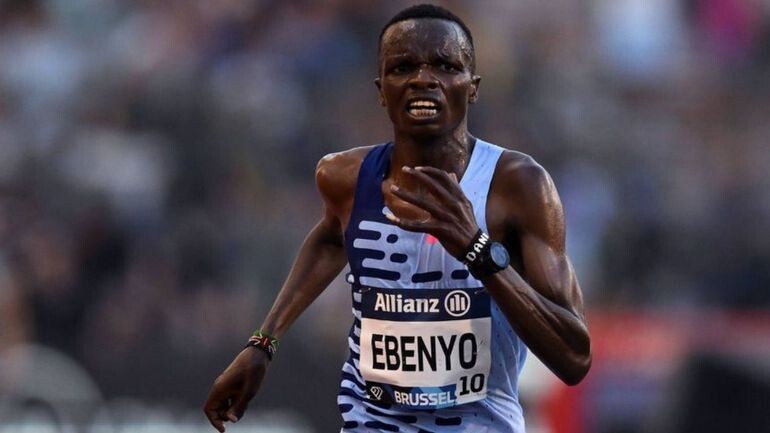
“I had a dream to be the first man to defend my title and and run another course record but definitely I can’t again,” wrote the Kenyan in a message to the Okpekpe race media.
Ebenyo, like the good sportsman that he is, is wishing the athletes who will compete for honors this year all the best.
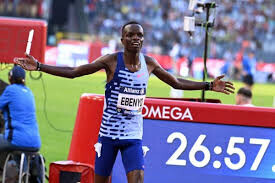
“I am hereby wishing all the runners all the best and may the best athlete win,” said the defending champion.
Ebenyo also has nice words for the organizers of the world-class, gold label 10km road race.
“Okpekpe is always a bridge and a mother to all races in Africa. God bless Okpekpe and God bless the organizer of the race. See you next year,” wrote Ebenyo who made the podium at both the World Athletics Championships in Budapest and World Athletics Road Running championships in Riga after emerging Okpekpe race champion last year.
This year’s race is the 10th in the series and organizers have assured of another world-class event come May 25 in Okpekpe in Edo State of Nigeria.
The race is the first road race in Nigeria to have its course measured by a World Athletics’ certified measurer and the first in West Africa to be granted label status to depicts its world-class status.
(05/16/2024) ⚡AMPby Sport
Okpekpe Road Race 10km
The Okpekpe Road Race invites world-class runners from around the world in a tradition tointermix local recreational and up and coming runnerswith the best of the best. Invitation extended to all CAA Member Federations, all military and para-military have sent in entries. Okpekpe is more than just a collection of fertilefarmlands or a window into the past, it is a...
more...Mary Moraa's Briton opponent strikes with 400m personal best as Prefontaine Classic clash looms
The women's 800m race at the Prefontaine Classic will promise to be a thrilling show after Mary Moraa's Briton opponent opened her season with a 400m personal best time.
Mary Moraa’s track rival, Keely Hodgkinson has been off to a great start to her season, setting a Personal Best time over the 400m in her season opener.
The Briton competed at a meet in Citta di Savona and was in a class of her own as she oozed class to finish second, clocking 51.61 seconds to improve her personal best time of 51.76 that she set at last year's European Under-23 Championships.
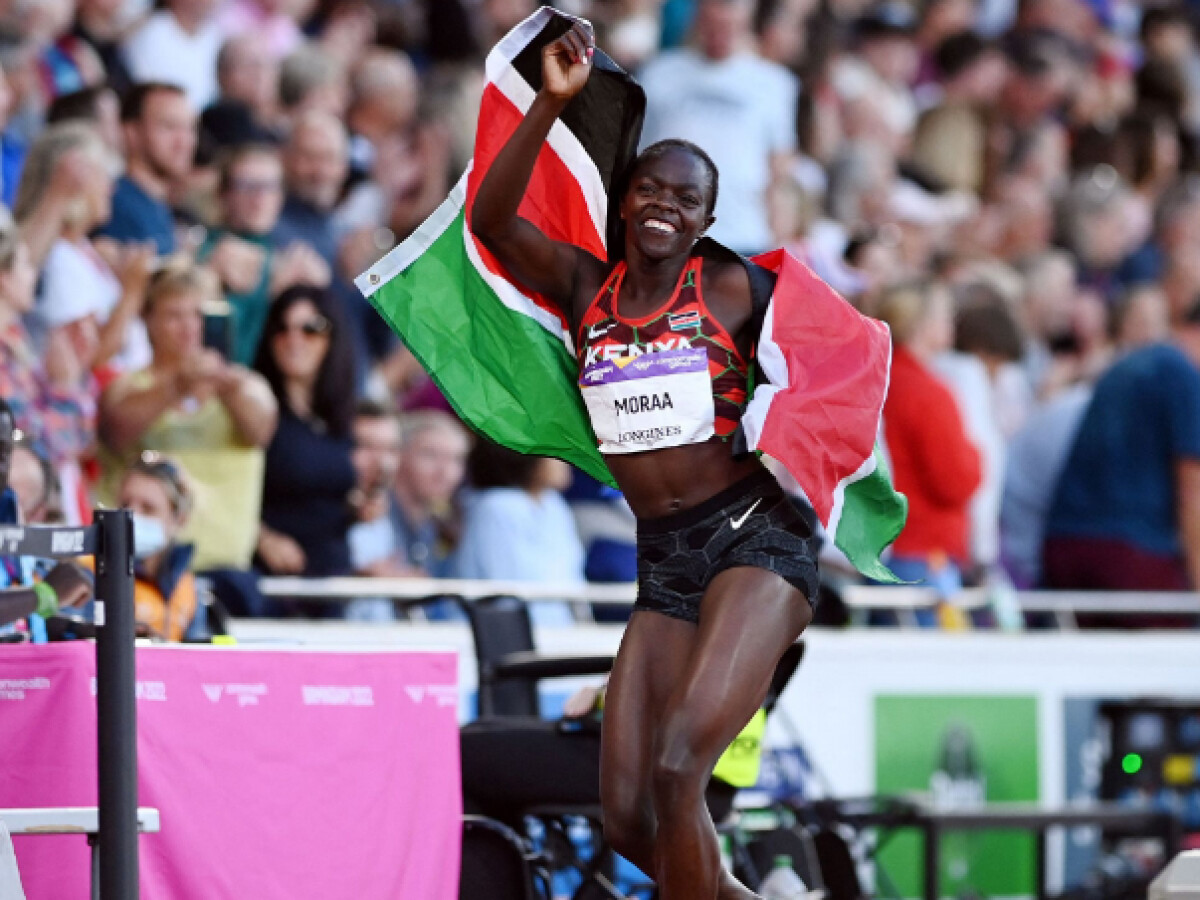
The 22-year-old will compete in her first 800m race at the Prefontaine Classic, the Diamond League Meeting in Eugene, USA and from her performance in the season opener, her opponents will be in for a surprise.
The world 800m bronze medallist will be up against reigning world champion Moraa and the world 800m silver medallist and Olympic champion Athing Mu of the USA.
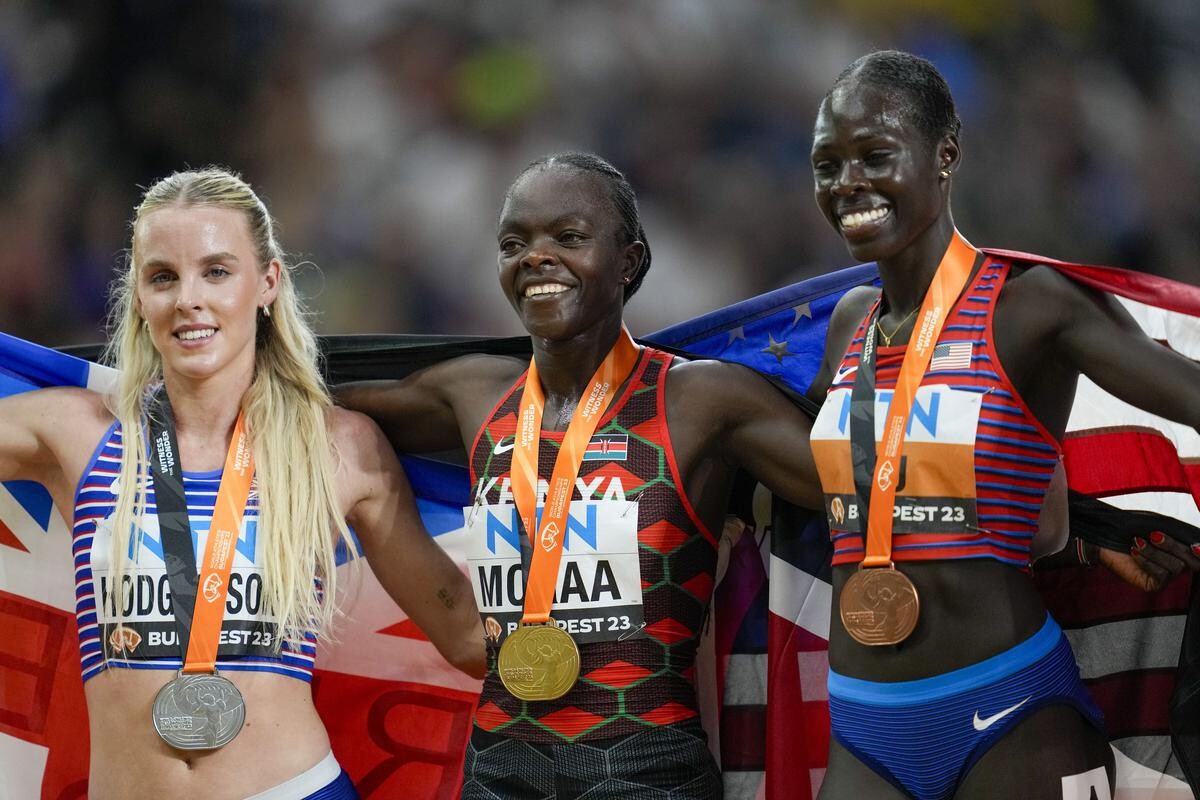
Mu will be competing on home soil, hoping to take advantage of that to take the win but the duo will not make it easy for her. The American is yet to compete and will make her season debut at the USTAF LA Grand Prix.
However, Moraa has competed in a couple of races and has shown to be in great form and ready to outshine her opponents. The 23-year-old started her season quite early, with the Athletics Kenya national trials for the African Games.
She then proceeded to win the 400m at the African Games before making her season debut in the 800m at the Kip Keino Classic.
The Commonwealth Games champion also extended her wining streak to the Diamond League Meeting in Doha, Qatar where she also claimed top honours. She gears up for the 400m at the LA Grand Prix before taking on her rivals at the Prefontaine Classic next weekend.
(05/16/2024) ⚡AMPby Abigael Wuafula
Prefontaine Classic
The Pre Classic, part of the Diamond League series of international meets featuring Olympic-level athletes, is scheduled to be held at the new Hayward Field in Eugene. The Prefontaine Classicis the longest-running outdoor invitational track & field meet in America and is part of the elite Wanda Diamond League of meets held worldwide annually. The Pre Classic’s results score has...
more...Try this 4/3/2/1 interval workout when you’re time-crunched
Ssome days, you find yourself with only 30 minutes to squeeze in a run, and you want to make your time count. If you’re looking for more than just an easy jog, it can be challenging to come up with a workout that gives you what you’re looking for in a such a small window. Time-crunched runners will find value in this “countdown” style interval run that breaks up the harder efforts in descending, manageable blocks.
The workout is simple and effort-based rather than data-based, meaning you don’t need to worry about pace, heart rate or any other metric. It gives you a chance to explore the upper-end of hard running by feel, as you’ll work progressively harder on each of the short intervals of four, three, two minutes and one minute, with rest between intervals.

The workout:
10 minutes easy warmup (conversational pace)
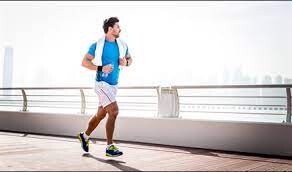
4 minutes tempo pace, 2 minutes easy
3 minutes harder than temp0, 90 seconds easy
2 minutes harder, 1 minute easy
1 minute all-out
Remainder easy
With 10 minutes of quality, hard efforts in this workout, you’re working your anaerobic system. Getting faster on each interval means you’re running harder on tired legs, which helps you learn to finish strong in a race.
The four-minute tempo interval in this workout sets the tone for the rest of the set, so you’ll need to pick your effort appropriately here. It should feel like you’re working, but have some gas in the tank left for the remaining six minutes of work, where the intervals get progressively faster. This should feel like an effort around your 5K pace.
With half of the previous interval’s length as your rest time, you give the body a chance to recover between these fartlek-style efforts while not allowing your heart rate to drop too much in between.
This workout is great prep for your next 5K race. For runners who like the descending structure but have more time available for a workout, simply repeats the 4/3/2/1 ladder twice or three times, depending on the time available and your workout goals.
(05/15/2024) ⚡AMPby Claire Haines
Strong world class elite field competing in Riga marathon this weekend
This weekend, the Rimi Riga Marathon will host world-class running stars who have stood atop the podium at prestigious marathons in Paris, Amsterdam, Frankfurt, Doha, Vienna, Hamburg, Dubai, Seville, and other prestigious events. The biggest competition for a spot on the podium this year is expected in the half marathon, where an especially strong field of runners will compete on the same course where world champions in the half marathon were crowned last October.
An intense battle is also anticipated among Latvia’s leading runners, who will compete not only for the Latvian championship medals in the road mile and the marathon, but also for high-quality results in the 5km and 10km distances. Because of the strong lineup of participants, we anticipate that in several distances we’ll see the Rimi Riga Marathon course records, and possibly even Latvian records, broken.
The Rimi Riga Marathon, the Baltic’s most magnificent mass sports event, on May 18 and 19, will not only bring together over 30,000 running enthusiasts from nearly 100 countries worldwide but also top elite runners from Latvia and around the globe.
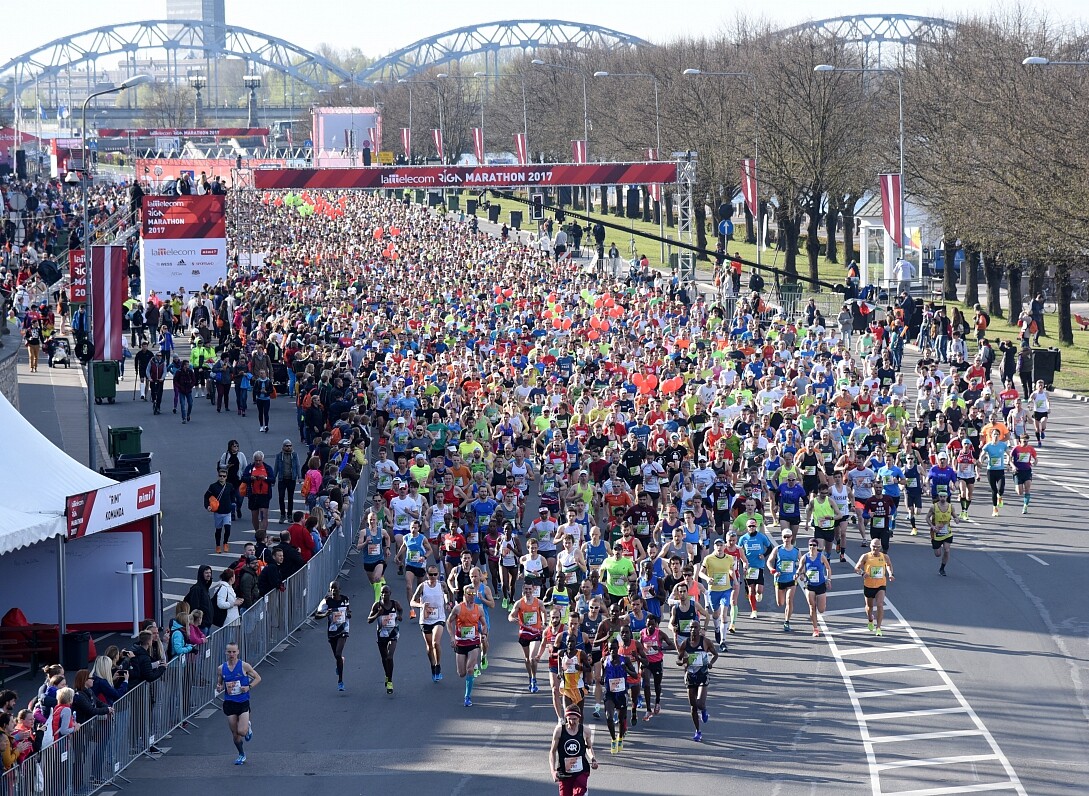
FOREIGN FAVORITES IN THE HALF MARATHON WILL AIM TO BREAK THE RIMI RIGA MARATHON COURSE RECORDS
The most intense competition is expected in the half marathon at the Rimi Riga Marathon, where participants will attempt to surpass the time of 59:10 set by Sebastian Sawe, the winner of the World Athletics Road Running Championships in Riga last October. In the men’s elite competition, several accomplished Kenyan runners will compete this year, including last year’s World Athletics Road Running Championships bronze medalist Samwel Nyamai Mailu, Solomon Kipchoge, who ran under one hour – 59:37 in 2023, and Titus Kimutai Kipkosgei who triumphed in the Milan Marathon in April this year and holds a half marathon personal best of 59:44 set back in 2022.
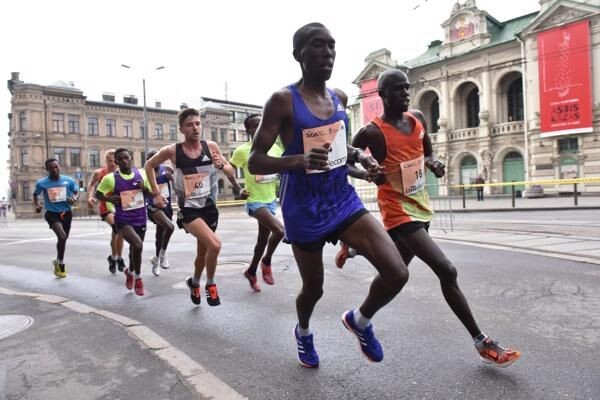
Among the international elite women in the half marathon, there are also several representatives from Kenya and Ethiopia. Among them, Judy Jelagat Kemboi, a Kenyan runner who set an impressive personal best in the half marathon on May 5 this year – 65:45, clinching victory in the Geneva Half Marathon. She will face competition from her compatriots – Valary Jemeli (personal best of 66:14 set in 2019), who triumphed in the Doha Marathon this February, and Gladys Jemaiyo, who set her best time of 68:18 in 2022. On the course, we’ll also have the opportunity to see Ethiopian Gebru Azmera Hagos, whose personal record in the half marathon from 2017 stands at 70:40.
To break the records of the half marathon course, which belong to the Kenyan Sebastian Sawe (59:10) and the acclaimed Kenyan runner and the reigning Olympic marathon champion Peres Jepchirchir (67:25) since the World Athletics Road Running Championships 2023 in Riga, organizers encourage Riga residents and visitors to actively support the leaders on the streets of Riga on the morning of May 19.
ON THE MARATHON COURSE, THE LATVIAN CHAMPIONS WILL BE DETERMINED
Determined to become the Latvian marathon champion this year is Dmitrijs Serjogins, the national record holder in the half marathon and the holder of the highest marathon personal best among Latvians. Also lining up at the starting line will be the podium finishers of the Latvian Marathon championship 2023 – the reigning champion Aleksandrs Raščevskis, vice-champion Renārs Roze, and bronze medalist Kristaps Vējš-Āboliņš.
In the marathon course, several strong foreign runners have also registered, including the Kenyan Rodgers Maiyo, who boasts an impressive personal record in the half marathon – 61:56 (2015), and multiple-time Georgian champion and holder of the national record Davit Kharzishvili (2:11:46, 2023), both of whom will be aiming to be the first to cross the finish line in Riga.
In the women’s competition, for the Latvian championship medals will compete last year’s medalists – Amanda Krūmiņa, who won the gold medal, Anna Kļučņika, who secured the silver, and one of the holders of the all-time highest marathon results and the 2023 bronze medalist, Anita Siliņa (PB 2:39:57, 2014).
Worth remembering is that the Rimi Riga Marathon record holder for men is the Ethiopian Andualem Belay Shiferaw, who won in 2019 with a time of 2:08:51. However, in the women’s marathon Ethiopian Birke Debele Beyene’s time remains unbeaten from 2019 – 2:26:22. Meanwhile, the fastest Latvian runner results in the Rimi Riga Marathon are the Latvian record set by Valērijs Žolnerovičs in 2017 with a time of 2:14:24, and the 2:40:23 result set by Ariana Hilborn in 2015.
(05/15/2024) ⚡AMPLattelecom Riga Marathon
If you have never been to Riga then, running a marathon or half-marathon could be a good reason to visit one of the most beautiful cities on the Baltic Sea coast. Marathon running has a long history in Riga City and after 27 years it has grown to welcome 33,000 runners from 70 countries offering five race courses and...
more...Kipruto excited to run side by side with legendary Kipchoge
The 2024 Tokyo Marathon champion Benson Kipruto reckons he has polished his act satisfactorily to reap immensely at the Paris 2024 Olympic Games.
Kipruto emphatically stated his desire to light up the French capital with a sublime performance.
“I’m looking forward to competing in the Paris Games. Being named to the team is a great privilege and I cherish the rare chance to represent the country in the Olympics,” Kipruto stated.

“I’m ready to fight bravely for my country. I believe I’m in good shape and ready to make the nation proud in Paris,” he added.
Kipruto said the thought of being on the same team as his role model Eliud Kipchoge fascinates him a lot, adding that the double Olympic champion has always been his key source of inspiration.
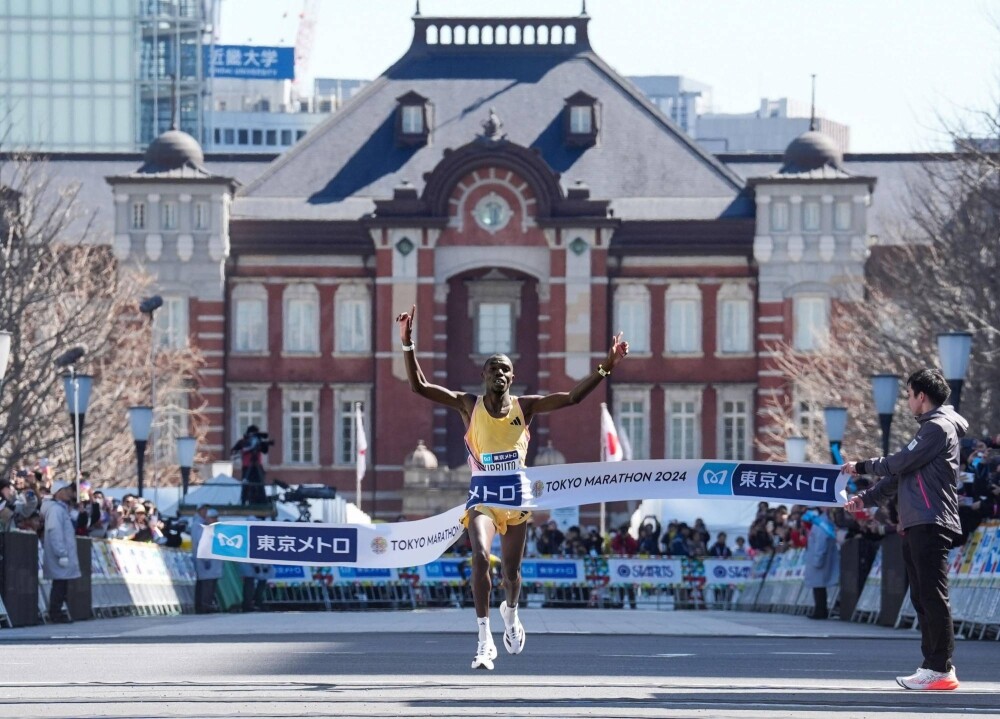
The duo mske up the quintet of Kenyan male marathoners tasked with flying the country’s flag at the quadrennial global multisport showpiece set for July 26 to August 11.
Kipruto tipped Kipchoge to spearhead Kenya’s lofty hunt for a podium sweep but vowed to give him a run for his money.
“He is a brilliant athlete, one who has always inspired me a great deal. I desire to be as great as him and step into his shoes once he calls time on his career,” Kipruto remarked.
Kipruto reiterated an earlier call made by his teammates for a concerted effort, pointing out it was the only way to ensure a podium sweep.
“I believe in the strength of team effort. Away from competition, we train together reside in the same camp, and interact like a family. I don’t see what should prevent us from going for an Olympic as a team,” Kipruto stated.
He said they would do away with their pre-race favourites tag to stave off complacency, adding that it would be tactically suicidal to underrate their opponents.
Kenya will be defending the title that Kipchoge stashed away at the Tokyo 2020 Olympics in Japan and Kipruto has tipped the nation to replicate the feat in the French capital.
“We can’t afford to head to the competition with a superior mentality. I’ll appreciate that we have a solid team but we should be careful not to take our opponents for granted,” Kipruto said. “Marathon is a tricky venture and anything is bound to happen in competition,” he added.
Kipruto heads to the Games buoyed by impressive credentials as the winner of the Boston Marathon in 2021, the Chicago Marathon in 2022, and the Tokyo Marathon earlier this year.
(05/15/2024) ⚡AMPby Tony Mballa
Paris 2024 Olympic Games
For this historic event, the City of Light is thinking big! Visitors will be able to watch events at top sporting venues in Paris and the Paris region, as well as at emblematic monuments in the capital visited by several millions of tourists each year. The promise of exceptional moments to experience in an exceptional setting! A great way to...
more...Faith Kipyegon withdraws from Prefontaine Classic amidst injury concerns
Two-time Olympic champion Faith Kipyegon unexpectedly withdraws from Prefontaine Classic.
Two-time Olympic champion Faith Kipyegon has made an unexpected withdrawal from the Eugene Diamond League commonly known as the Prefontaine Classic.
Scheduled to compete in the 5,000m on Friday May 24 Kipyegon’s departure comes as a sudden pivot in her preparation for the upcoming Paris Games.
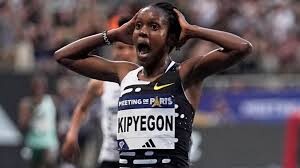
The Kenyan middle-distance star expressed her decision through a heartfelt announcement.
"I’ve been building in a great way during the past months for a beautiful season ahead. Some weeks back I got a small muscle problem that was handled well," Kipyegon revealed.

Despite the setback, she confirmed her continued dedication to her training regime.
"I’m now back in full training, focusing to start my season in four weeks' time at the Kenyan Trials for the Olympic Games," she added.
The anticipation for Kipyegon at the Prefontaine Classic was high, especially given her stellar track record and her history with the event.
"I saw my name announced for @preclassic, it’s one of the greatest competitions in the circuit and I plan to compete there again in 2025," Kipyegon stated.
Kipyegon’s decision is particularly poignant as it follows her world record-breaking performance in Paris last June where she clocked an astonishing 14:05.20 in the 5,000m.
Unfortunately, this record fell outside the Olympics qualification window, necessitating another qualifying run to secure her spot for Paris.
The qualifying standard for the 5,000m is set at 14:52.00, a mark Kipyegon has previously surpassed but must achieve again within the designated window from July 1, 2023, to June 30, 2024.
The 2023 season saw Kipyegon ascend to new heights in athletics, breaking three world records across various distances.
Starting with the 1,500m in Florence, she continued her record-setting spree in Paris before topping the one-mile world record at the Monaco Diamond League.
Her victories at the World Championships in Budapest, where she clinched gold in both the 1,500m and 5,000m, further cemented her dominance in middle-distance running.
However, her 5,000m world record was short-lived, as Ethiopia's Gudaf Tsegay surpassed it at the Prefontaine Classic in September with a time of 14:00.21.
Eugene, the host city for the Prefontaine Classic, holds a special place in Kipyegon’s career. It was here she won her second world title in the 1,500m in 2022 and secured last season’s Diamond League Trophy over the same distance.
Her withdrawal not only impacts her preparations for Paris but also leaves her fans and fellow competitors in a state of surprise and anticipation for her next move.
(05/15/2024) ⚡AMPby Festus Chuma
Prefontaine Classic
The Pre Classic, part of the Diamond League series of international meets featuring Olympic-level athletes, is scheduled to be held at the new Hayward Field in Eugene. The Prefontaine Classicis the longest-running outdoor invitational track & field meet in America and is part of the elite Wanda Diamond League of meets held worldwide annually. The Pre Classic’s results score has...
more...Emmanuel Korir reveals when he will make long-awaited return
Olympic 800m champion Emmanuel Korir has announced when he will return to action as he seeks to return to shape ahead of his title defense in Paris after a poor 2023 campaign.
Olympic 800m champion Emmanuel Korir will make his long return to action at the Marrakech Diamond League in Morocco on May 27.
Korir has not been in competitive action since his disappointing outing at the 2023 World Championships when he was eliminated at the heats and subsequently failed to defend his title.
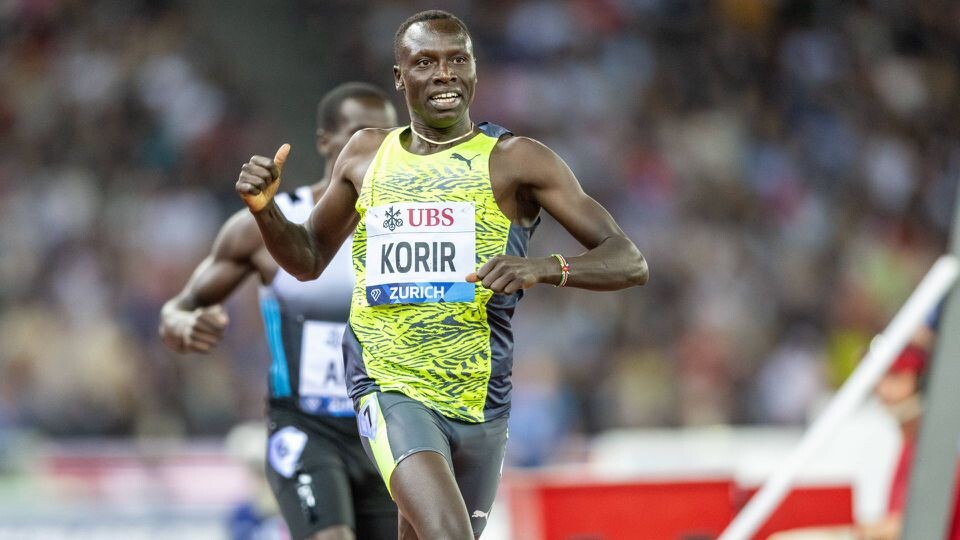
The 28-year-old was just returning after a long injury layoff but found the going tough after which he went downlow perhaps to tune up for his Olympic title defense.
Nine months on and Korir will be hoping for a good outing in Marrakech where he will run in the 800m but faces stiff competition from compatriots Emmanuel Wanyonyi and Wycliffe Kinyamal.
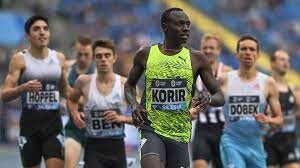
World 800m silver medalist Wanyonyi is the man of the moment and will head into the race on confidence having shown no signs of rustiness at the Kip Keino Classic last month, when he ran a world leading time of 1:43.57 to win what was his first race of the season.
Another extra motivation for Korir will be the need to hit the Olympic qualifying time given his 1:46.78, clocked at the World Championship was out of the set standard of 1:44:70.
Korir is hoping to get back to the heights of 2022 when he won the world title in 1:43.71 which will also get him closer to his rivals ahead of the Olympics.
With new runners emerging, such as world champion Marco Arop of Canada and Wanyonyi in his absence, the 28-year-old has a lot of work on his hands to regain his old form.
Korir, who has had to deal with a calf injury, also opened his 2023 season in Morocco, starting in Rabat, where he finished eighth, before proceeding to Paris, France, only to finish 10th.
He followed that up with another eighth-place finish in Stockholm, Sweden before his poor showing at the World Championships.
(05/14/2024) ⚡AMPby Joel Omotto
Paris 2024 Olympic Games
For this historic event, the City of Light is thinking big! Visitors will be able to watch events at top sporting venues in Paris and the Paris region, as well as at emblematic monuments in the capital visited by several millions of tourists each year. The promise of exceptional moments to experience in an exceptional setting! A great way to...
more...How motherhood turned Peres Jepchirchir into the marathon force to be reckoned with
The reigning Women's marathon Olympic champion has revealed how her daughter helped her take her running back to the next level.
Peres Jepchirchir is one of the most recognisable and well accomplished athletes in the world of marathon.
The 30-year-old has been conquering road races for quite a while now ever since she launched her running career in 2013, when she ran two 10k road races in South Africa and then took part in the Kisumu marathon and cross country running, alongside a certain Faith Kipyegon.
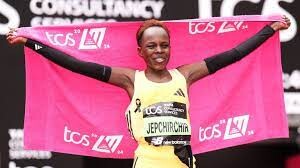
It was in 2016 that she really starting becoming consistent after a few struggles, as she started dominating in half-marathons. She continued on her trail and even broke two half-marathon records. It was after that that she was blessed with a daughter, Natalie.
As the world recently celebrated mother’s day, Jepchirchir believes becoming a mother has made her a much better athlete, as it motivated her to go beyond her limits, knowing there was now someone in her life looking up to her and depending on her.
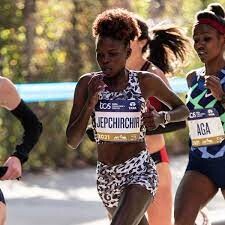
“It has changed my life since Natalie was born. You have to work extra hard because now you know you have someone who is depending on you,” Jepchirchir told Olympics Kenya.
Although motherhood is a beautiful thing, it did not come without its challenges, as it effectively meant her life was not her own anymore.
“There were some challenges, but it was mostly good. When Natalia was young, sometimes it would be difficult as she would get sick sometimes. You do not know if she is feeling pain and sometimes, it would be difficult to go for races.
“I returned to action when Natalia was one year and two months old, which made it difficult for me. I was uncomfortable traveling without my daughter because you just could not tell if she was healthy.”
Getting back to action was no easy streak. Jepchirchir had to shed off her weight, but also had to balance and find a way to solve the issues her baby went through, including the occasional illness.
“It is not easy. Losing weight was a tall order. It was also difficult to sleep. When you want to wake up, she also wants to wake up, when the baby is unwell, its issues, but challenges are there. You just have to commit yourself, love it and enjoy it.”
Jepchirchir has gone on to win the Olympic Games, and recently set the women’s-only world record in the marathon, finishing in two hours, 16 minutes and 16 seconds in London.
She attributes it to the motivation her daughter has instilled in her, describing her as her biggest cheerleader.
“They are playful. Sometimes she will tell me, ‘mommy, you are going to be okay! Mommy, you are going to win!’ Kids are comforting sometimes if you are down.
“Like the other day at the London Marathon, Natalia got emotional. People were cheering me on, but she was crying. She is used to seeing me winning.
"So the one time I got third in London, she was crying ‘Mommy, why did you not win?’ and you end up asking yourself why.”
As she continues to pursue excellence on the marathon course, Peres Jepchirchir exemplifies the extraordinary balance of motherhood and athletic achievement, proving that with dedication and love, anything is possible.
(05/14/2024) ⚡AMPby Mark Kinyanjui
Kenyan Alex Nzioka Matata wins the Bucharest Half Marathon
Kenyan Alex Nzioka Matata won the Bucharest Half Marathon held last Sunday, May 12, with a time of one hour, one minute, and four seconds.
Second place was taken by another Kenyan, Chebor Elvis Tabarach, with a time of one hour, four minutes, and three seconds, while third place went to another Kenyan athlete, Kibet Bismark Langat, with a time of one hour, four minutes, and 10 seconds, according to News.ro.

The first Romanian in the ranking was Leonard Mitrică, finishing in fifth place, followed by Alexandru Corneschi, who placed sixth.

The former finished in one hour, seven minutes, and four seconds, while the latter finished in one hour, seven minutes, and 56 seconds.
In the women's category, the first in the ranking was Rabecca Chepkwemoi from Kenya, who finished the race in one hour, 12 minutes, and nine seconds.
(05/14/2024) ⚡AMPby Radu Dumitrescu
Bucharest Half Marathon
Created at the initiative of the Olympic Marathon Gold medalist Constantina Di?a, Bucharest International Half Marathon and 10K is the most beautiful road running race in Bucharest, Romania. Designed by Constantina herself, this is a very fast and flat course, and offers the opportunity for a competitive personal best for both professional athletes and amateur runners. Bucharest International Half Marathon...
more...Why Faith Kipyegon is under pressure to deliver at Prefontaine Classic
Multiple world champion Faith Kipyegon will open her season at the Prefontaine Classic, where she will run the 5,000m, but there is little margin for error given what is at stake.
Two-time Olympic champion Faith Kipyegon will open her season at the Eugene Diamond League, popularly known as the Prefontaine Classic, but the event holds more significance for her as far as the Paris Olympics is concerned.
Kipyegon will be running the 5,000m in Eugene on May 24 where she is seeking to hit the Olympic qualifying standard even though she has not made up her mind on whether she will double at the Paris Games.
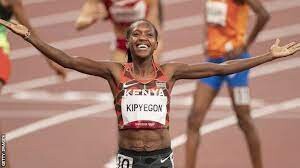
Kipyegon run a world record 14:05.20 in Paris, France in June last year but that was outside the Olympics qualification window which means she will have to do it all over again to be in contention for a place at the Paris Games over the 5,000m.
The Olympic qualifying window for individual events, other than the 10,000m and combined events, is from July 1, 2023 and June 30, 2024 and Kipyegon and Co will need to clock 14:52.00, which is the mark set for Paris Olympics qualification.
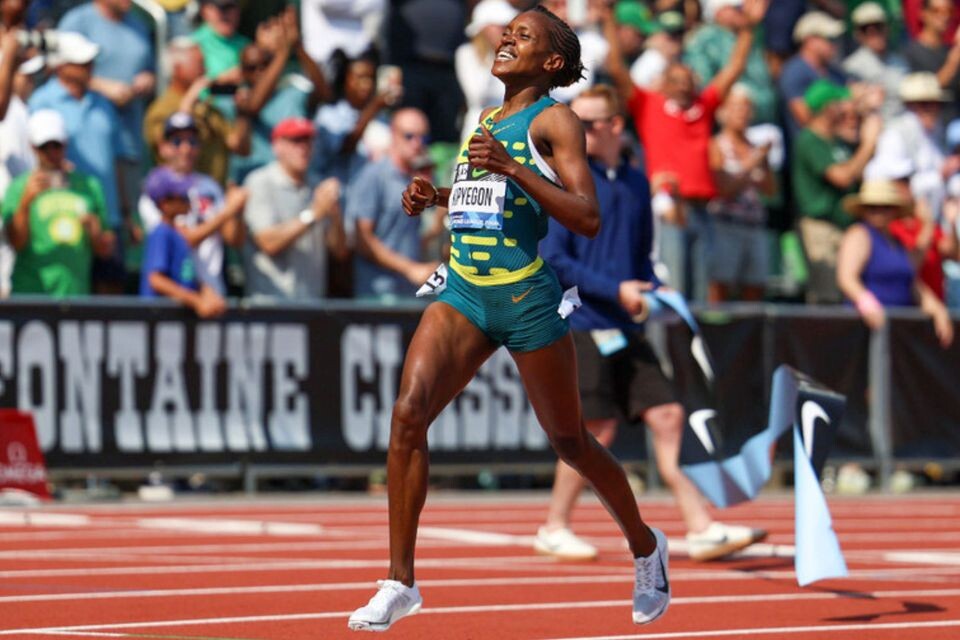
That will give the world 5,000m champion some extra pressure heading to Eugene but she will be counting on her experience to get her over the line.
Kipyegon had a wonderful 2023 season that saw her break three world records, starting with her specialty 1,500m in Florence, Italy last June before the 5,000m in Paris a week later.
She would lower the one-mile world record at the Monaco Diamond League in July before winning gold in 1,500m and 5,000m at the World Championships in Budapest, Hungary a month later.
Her 5,000m world record was, however, broken two months later by Ethiopia's Gudaf Tsegay who ran 14:00.21 at the Prefontaine Classic in September.
Eugene holds special memories for Kipyegon who won her second world title in 1,500m in the US city in 2022 as well as last season’s Diamond League Trophy over the distance.
(05/14/2024) ⚡AMPby Joel Omotto
Prefontaine Classic
The Pre Classic, part of the Diamond League series of international meets featuring Olympic-level athletes, is scheduled to be held at the new Hayward Field in Eugene. The Prefontaine Classicis the longest-running outdoor invitational track & field meet in America and is part of the elite Wanda Diamond League of meets held worldwide annually. The Pre Classic’s results score has...
more...Betsy Saina, Diego Estrada win Amway River Bank Run 25K
Betsy Saina, now a back-to-back champ, crossed the finish line first to win the 47th annual Amway River Bank Run women’s 25K Saturday, followed by the record-breaking men’s winner Diego Estrada.
Saina finished with a time of 1:22:31.61. Estrada had a time of 1:13:09.51, breaking the American record. Each earned the $10,000 first prize and Saina got a $2,500 bonus for winning the ‘race within a race’ that pits the men against the women.
After winning the River Bank Run for the second year in a row, Saina said Grand Rapids has a special place in her heart.
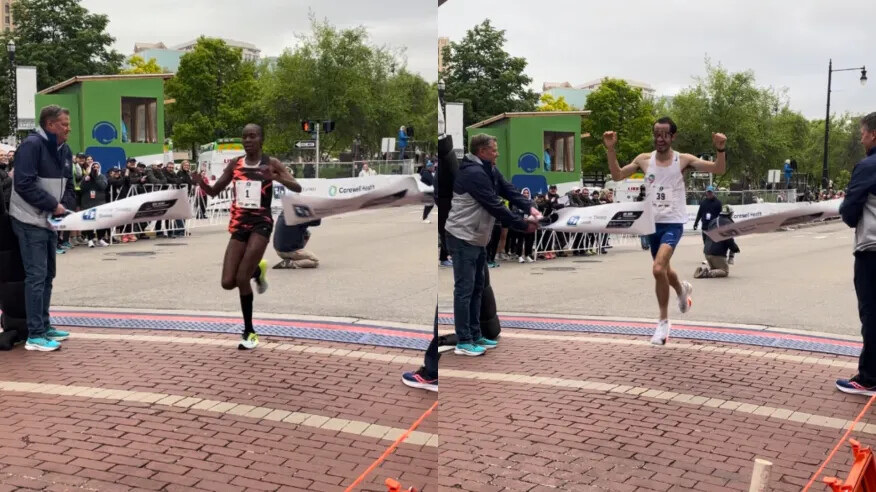
“Last year, when I came, I won the race, and I felt like it was a special place for me. Honestly, I love Grand Rapids. It’s one of the best cities I like to be in. The people are so nice. Everything is just so perfect for me. That is why I am here,” she said.
Saina, who has a 2-year-old boy, had a message for her fellow mothers.

“I just want to let them know that no matter what, when you have a child, it’s not the end of the career, it is the beginning of it,” said Saina.
At this year’s race, Estrada broke the course record and set a new American record for the 25K. After finishing the race, Estrada fell at the finish line out of exhaustion.
“I was very exhausted. I made sure to put everything I had so there was nothing left in the reserves. So when I finished, I was like I hope it does not hurt because I’m going down,” said Estrada.
He said that he pushed himself hard during the last two miles of the race.
“Well, to be completely frank, when you are broke and this is how you eat, you can’t leave it up to chance,” said Estrada. “I knew I kind of had to suffer and put it down and that is what I did. I made a move.”
The 25K is the largest road race of its kind in the country and the national championship event for USA Track and Field. It has included the “race within a race” since 2015: The elite women get an 10:30 head start on the men to compensate for the average difference in finish times between sexes. If the women hold their lead and finish first, they win. If the men make up that difference and finish before the women, they win.
Tom Davis, from Fremont, Indiana, won the 25K handcycle race. He is a retired two-time Paralympian who started handcycling after he was injured while serving in Iraq.
“I started doing handcycling for therapy. A couple of years after that, I felt like God was telling me to get my bike out, start riding it, and race it and do it to glorify him. I did. It has been about eight years racing at the top level in the world,” said Davis. “I’m out here doing it for fun now.”
Miguel Jimenez-Vergara, from New Jersey, won the 25K wheelchair race. It was his first time participating in the Amway River Bank Run.
“It’s a really, really, really cool course. I have never done it before. It’s my first time coming out. It’s a really cool course with smooth roads and rolling hills. It was really cool,” said Jimenez-Vergara.
He plans to take part in the U.S. Paralympic Trials in Florida in July in hopes of joining the U.S. Paralympic Team this year in Paris.
(05/13/2024) ⚡AMPby Michael Oszust, Rachel Van Gilder
Amway River Bank Run
The Amway River Bank Run presented by Fifth Third Bank with Spectrum Health the Official Health Partner celebrates over 43 years. More than 16,000 people are expected to compete in the event which features the largest 25K road race in the country and offers the only 25K Wheelchair racing division in the world along with a 25K Handcycle division. The...
more...Kenyans outsprint locals and the rest in yet another Absa Run Your City race
Kenya’s Vincent Langat and Diana Chepkorir made it two wins in as many Absa Run Your City Cape Town 10K Series starts when they crossed the finish line first in the men’s and women’s races, respectively, in Sunday’s race in the Mother City.
Just five weeks after winning the Gqeberha, Eastern Cape, leg of the popular 10km race, Langat produced his first sub-28-minute clocking on South African soil when he won the Cape Town contest in 27:52.
Said Langat after the race:

I was excited when I made my move with 1km to go. This was my best win. Elroy is a strong guy. I like him and I appreciate the competition. I will now go and prepare for the Olympics in the 10 000m.
South Africa’s Elroy Gelant grabbed the second spot.
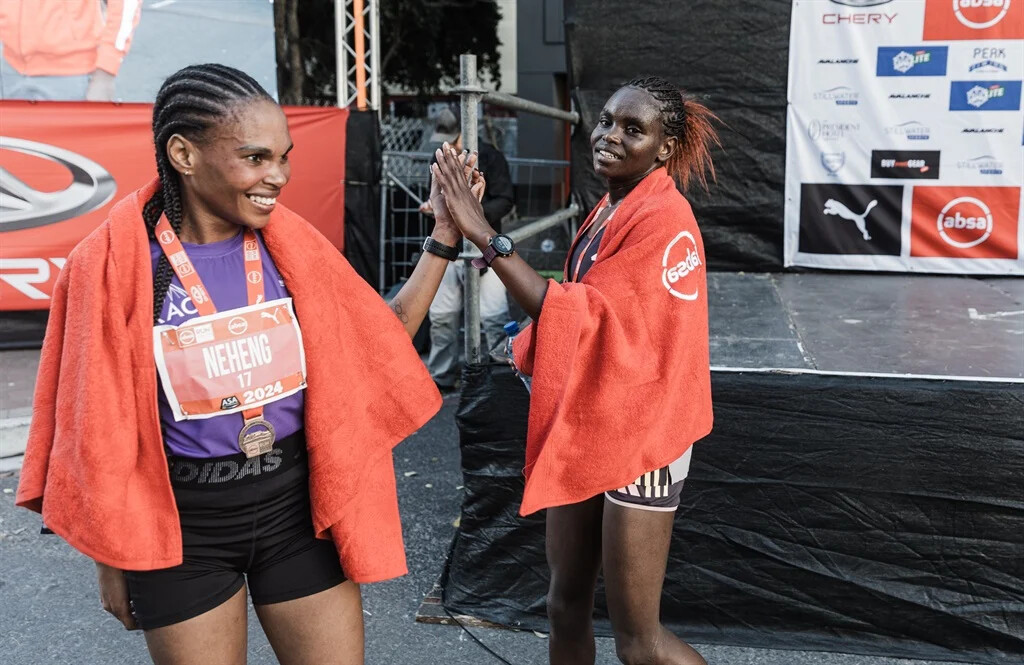
The two-time Olympian stopped the clock at 27:55, while Francis Abongo ran a personal best of 28:16 to claim third place in his first official 10km road race outside his native Kenya.
With three personal bests over 10km, 21km and 42km over the last nine months, 37-year-old Gelant says he feels more confident than ever. He had wanted to attack Precious Mashele’s 27:35 national record, even though the wind had other ideas.
He walked away with R85 000 in prize money—R25 000 for second place and R60 000 for breaking 28 minutes.
Said Gelant:
The wind was a factor. I just told myself, like a skipper who’s on a boat when there’s wind, you just need to change your sails, so I just changed by angle of running. But I knew that I would run well. I set my watch to SA record. I didn’t get there, but I’m still happy with the race.
Meanwhile, Chepkorir emulated her compatriot with her second victory in a row.
She clocked 31:47 to win in Cape Town after her victory at the Gqeberha race early in April.
Lesotho’s Neheng Khathala was the runner-up in 32:16, while Getenesh Sase Agafew of Ethiopia came in third in 32:48.
(05/13/2024) ⚡AMPby City Press
Cape Town 10K
This fast flat route takes runners through a working harbour and into a quiet city centre for a scintillating, fast and furious finish; music, enthusiastic support and a later than usual start time for a road race. The FNB Cape Town 10k, the most passionate and welcoming road race on the South African running calendar....
more...Herzog and Kovacs win Salzburg Marathon
The marathon specialist Peter Herzog from Saalfelden (Pinzgau), who has been active internationally for a long time, won the Salzburg Marathon on Sunday. The 36-year-old ran for the first time in his own state capital. The Hungarian Eva Kovacs won the women's event.
For his victory, Herzog needed two hours, 21 minutes and 46 seconds to cover the 42.2 kilometers. Shortly behind him, world-class runner Peter Wahome Murithi from Kenya crossed the finish line – just under a minute behind. Then nothing happened for a while. The Austrian Mahdi Sareban came third, almost 15 minutes behind Herzog.

The Pinzgauer's song of praise for the route
The Saalfelden native said immediately after his arrival: “It went better than I could have hoped for. Time is totally irrelevant. The feeling was awesome. By the second round I already felt that I was no longer as fit as I was in Vienna. But the marathon feeling and the scenery were perfect. That’s exactly how I wanted it.”
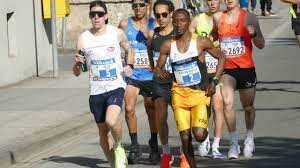
Hungarian woman in front
In the women's race, Hungarian Eva Kovacs needed three hours, nine minutes and six seconds - ahead of Tyrolean triathlete Sabrina Exenberger, who arrived two minutes later. The German Eva Kiggen came third.
(05/13/2024) ⚡AMPSalzburg Marathon
The Salzburg Marathon is a marathon in Salzburg, Austria. First held in 2004 and organized by Club Run Austria. The program also includes a half marathon that has been held since 2001, a 10 km run, the "Get active" junior marathon and other competitions. Enjoy a special marathon-feeling while passing many of the best known sights of Mozart's hometown! The...
more...Race organizers have confirmed additional financial bonuses for record-breaking performers at the Okpekpe road race 10k
Financial bonuses for record breakers at 10th Okpekpe International 10km Road Race.
Daniel Simiu will be one of the athletes making a return to the race, having won the previous edition in style and he will be looking to impress one more time.
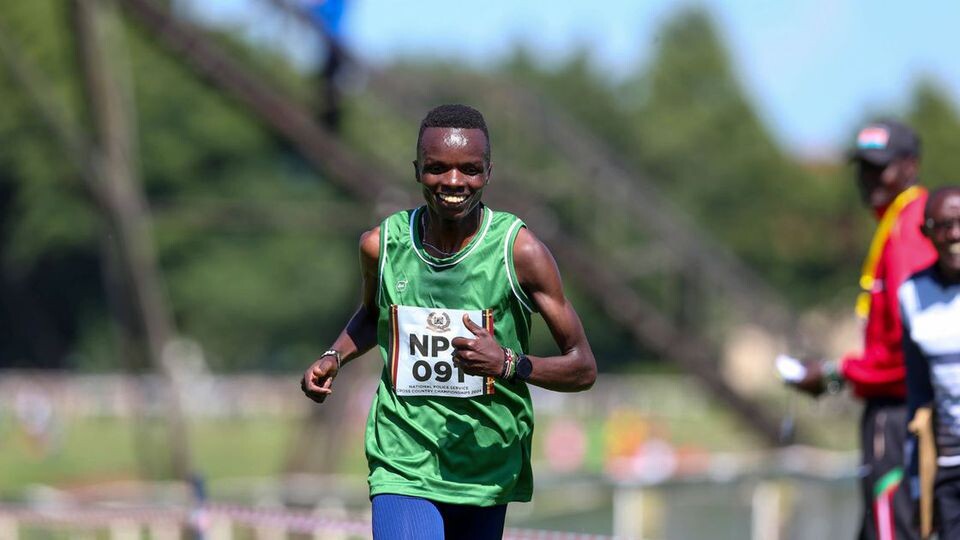
As per the race organizers, athletes who break the course, African or world records will be awarded bonuses of Ksh 262,300 ($2,000) and Ksh 655,750 ($5,000) respectively.
This is an additional amount to the prize money which is about Ksh 2.6 million (between $15,000 and $2,000) for the top five finishers of the race. The winners of the race have the honor of walking away with about Ksh 2.8 million if they manage to break the African/world record.
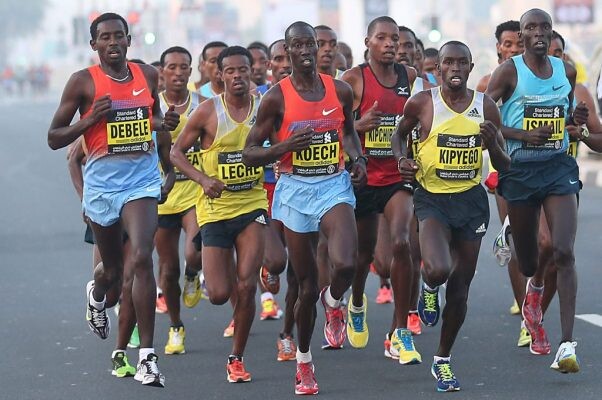
The men’s course record currently stands at 28 minutes and 28 seconds (28:28) and it was set last year by the World 10,000m silver medalist Simiu who displayed a great run and he will be looking to lower it and walk away with the bonus.
The women’s course record stands at 32 minutes, 41 seconds (32.41), and was set in 2014 by Ethiopia’s Wude Ayalew.
The men’s African/world record stands at 26 minutes, 33 seconds (26:33) and was set by Kenya’s Rhonex Kipruto in 2020 while another Kenyan, Agnes Jebet Ngetich holds the women’s world record of 28 minutes, 46 seconds (28:46) that set back in January this year.
As quoted by New Telegraph, Zack Amodu, the Okpekpe international 10km road race director revealed why the performance bonus has been introduced to this year’s race.
“This year, we have the $2,000 and $5,000 performance bonus to be earned by any man or woman who breaks the course record and African/World record respectively.
“Last year, we saw how Daniel Simiu moved very close to running a sub-28 minutes on his way to setting the 28:28 course record.
“We are motivating the athletes to run a little faster with the introduction of the performance bonus as we celebrate the 10th anniversary of the competition,” he said.
(05/13/2024) ⚡AMPby Abigael Wuafula
Okpekpe Road Race 10km
The Okpekpe Road Race invites world-class runners from around the world in a tradition tointermix local recreational and up and coming runnerswith the best of the best. Invitation extended to all CAA Member Federations, all military and para-military have sent in entries. Okpekpe is more than just a collection of fertilefarmlands or a window into the past, it is a...
more...Controversy Arises Over Boston’s Moving 6-Hour Results Cutoff
For back of the packer, heartbreak is learning their finishes are not official, even though they have times.
Laura Caster wants to be clear: She knew what the Boston Marathon rule was about official finishers.
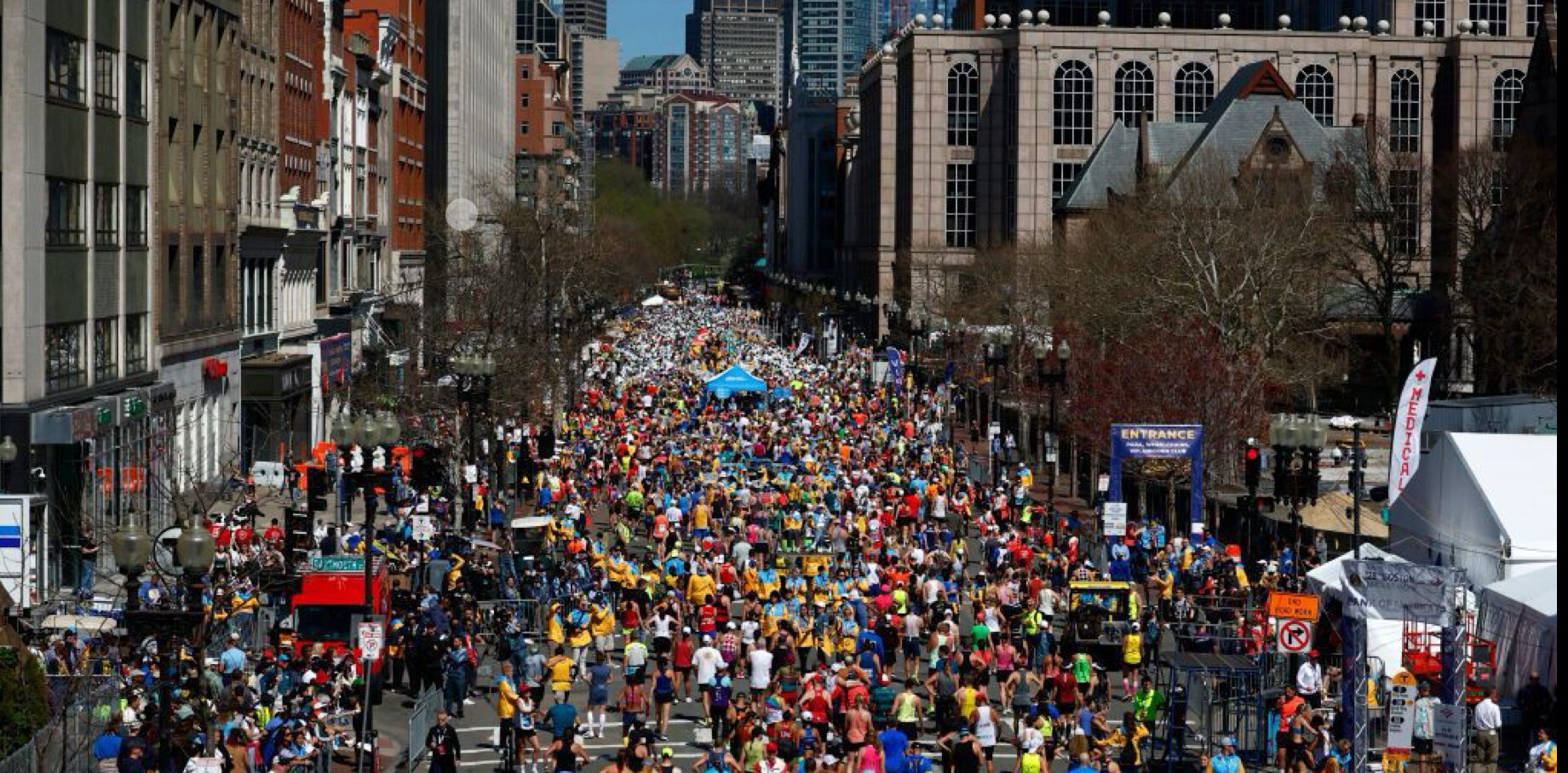
She was aware she had 6 hours from the time the last finisher crossed the starting line to finish the race in order to be considered official.
Her problem? She didn’t know what time the last finisher crossed the starting line.
Caster, 52, from Idlewild, California, was in corral 7 of Boston’s final wave, wave 4. And she crossed the starting line at 11:25 a.m. So for how many more minutes were runners crossing the starting line behind her? “Are they a minute behind me? Five minutes?” she wondered.
Every minute would count for her.
As it turned out, the final starter crossed the line at 11:28 a.m., so Caster needed to finish by 5:28 p.m. to be considered official.
Caster typically runs about 5:40 for a marathon. She finished Tokyo on March 3 in 5:41:50. Tokyo was her fifth of the World Marathon Majors six-star challenge. Boston was to be her sixth.
To gain entry to Boston, she had run for a charity, Team for Kids. She raised more than $5,000—part of the more than $40 million Boston Marathon organizers say the race raises through charity runners every year. And she treated Tokyo as a long run for Boston.
But the weather was warm on Marathon Monday, April 15. The slower runners start later in the day. And from early on, Caster knew she was in trouble. Her stomach was upset. She couldn’t take in all the fluids she needed. She was grabbing ice every time a spectator offered it.
Still, she plugged along, hitting every timing mat—even though the mats are rolled up along the course on pace with the 6-hour finish time. She passed halfway in 2:58:40.
At numerous points, Caster became aware of a vehicle trailing runners like her, who were going at about 6-hour pace. And she asked a volunteer at one timing mat, “How do I know if I’m going to be official?” Caster said he pointed at the car and told her she needed to finish in front of it.
“I was like, okay. That’s a definite answer,” she said. “I’m not going to look at my watch. I’m going to focus on not throwing up and being in front of that car.”
Caster was well ahead of the car on Commonwealth Avenue when she turned right onto Hereford Street. Just to be safe, as she approached the finish line on Boylston, Caster took a final look behind her. No sign of the official car. She crossed at 5:31 p.m., in 6:05:59. Volunteers put her in a wheelchair and sent her to the medical tent. From there, she was transported to a hospital with low blood potassium levels. She was released later that evening.
At the hospital, she looked at the results and realized she was not official. She had a gun time and a net time, but no place.
Caster was devastated. All the training, all the time and expense of pursuing the six stars, and she wasn’t really done. “I’ve worked for years, was so excited to have gotten to this point,” she said of her progress. “I was just leveled.”
Caster’s coach is Meb Keflezighi, an Olympic silver medalist and the 2014 Boston Marathon champion. On the phone with him, she broke down.
He told her, “I couldn’t be prouder of you. You missed it. We both know that you completed all six. You’re not official. But you showed grit, you showed determination.”
Allowing roads to reopen
Caster was not alone. Chris Lotsbom, a BAA spokesman, wrote in an email to Runner’s World that 497 people appeared to have crossed the Boston finish line this year after it officially closed. Volunteers staffed the area and handed out medals for approximately 4 hours, or until 9:45 p.m., longer than the race has ever continued to note times before.
Of those 497, many were within a few minutes or seconds of 5:28 p.m.
Cortney Blackburn, also in pursuit of her sixth star at Boston, missed by 37 seconds.
In an email exchange after the race with BAA officials, she asked how she was to know what the cutoff time was after she had started running. She, too, was told about the car, with flashing lights on the top, going at 6-hour pace and alerting runners if they were falling behind. Blackburn never saw the car—she finished well ahead of it—and she, too, recorded a split at every finish line mat along the way.
Lotsbom confirmed the car was there—a “road reopening vehicle”—he called it, meant to inform runners that roads were reopening and aid stations were shutting down.
“Without knowing specifics, I can’t comment on the individual instances referenced,” he wrote. “I can say that we are reviewing our processes and procedures in regards to final finishers for future Boston Marathons.”
Blackburn crossed the finish line and picked up two medals: the Boston Marathon medal and the World Marathon Majors six-star medal. Only later did she realize she wasn’t official in Boston’s results and therefore isn’t official in the WMM results, either. She has the medals, but no online record of her achievement.
But if the finish line remains open, and the timing continues, why not allow runners to be official? Or at least communicate a time—for example, 5:30 p.m.—that is consistent from year to year? Why use a moving target?
Boston’s strict cutoff is part of the agreement the race has with the cities and towns along the route. The 6-hour time limit is in place “to support the communities throughout which the race runs, to allow their road reopening program to commence as planned,” Lotsbom wrote.
“We understand we could do even more in communicating the closing time on race day and we are looking to enhance that messaging to all runners for next year to ensure everyone is clear [on] the time limit and time that the finish line will officially close on race day,” Lotsbom wrote.
A grace period
A few runners who are much slower than 6 hours get to start in earlier waves, which gives them more time to finish. For some runners close to the 5:28 p.m. cutoff, starting in an earlier corral of wave 4 would have meant the difference between an official and unofficial finish.
In 2015, some members of Boston’s Quarter Century Club, people with 25 or more consecutive Boston finishes, were concerned about the 6-hour limit, which was imposed for the 2016 race. So race officials moved them to Wave 2. Problem solved.
For others, the problem remains. And the moving cutoff appears to affect more women than men, older runners more than younger ones, and many runners of color.
Hector Espinal, like Blackburn, only discovered well after the race that he wasn’t official. He wrote on Instagram on April 18, “Despite crossing the finish line, finishing the race and receiving my medals, this morning I was informed that I did not complete the Boston Marathon in the time allotted to be considered an official finisher and @wmmajors 6 Star Marathoner.”
The post has more than 10,000 likes, and 1,000 comments, the majority of them supportive. Elite runner Mary Ngugi of Kenya, who was sixth in 2:24:24, wrote, “No no, you are a 6 time world major marathoner and a hero.”
Boston is a race that has at times struggled with its image, which critics call elitist. Spectators last year accused the race of over-policing enthusiastic fans, most of whom were people of color, at a mile 21 cheer zone, which prompted a lawsuit. Runner’s World reported in 2022 about the B.A.A.’s obscure, largely white, invitation-only membership group, which is involved with governance of the organization.
To many observers in the running community, setting a fixed finish time would be an easy way to help the race’s image as concerned about runners of varying abilities, not just the front of the pack.
Other races in the World Marathon Majors are much more lax about their finishing times, with the exception of Tokyo, which has nine cutoff points along the route, and runners are stopped if they lag behind. There are no questions, however, about where they stand.
But finishers of London, New York, and Chicago appear in results with times hours slower than the races’ published cutoff times. Berlin, which has a posted cutoff time of 6:15, stays open for an extra 15 to 20 minutes before the Brandenburg Gate closes, according to previous finishers.
Blackburn won’t be back to Boston anytime soon. “I don’t know honestly if I would do it again without major changes to actually be inclusive of non-qualifying athletes,” she wrote in a message to Runner’s World. “I think [B.A.A. officials] are putting out ‘we are trying’ vibes without actually trying.”
Caster, on the other hand, plans to try again. The uncertainty while she was on the course—and the wrong information she was given about the official vehicle—were what upset her. She doesn’t know if it would have made a difference for her had she been aware of the time she had to beat.
“But I would have liked to the opportunity to have tried,” she said. “That’s the part that I’m sore about.”
(05/12/2024) ⚡AMP

